Winter on the steppe: why you should consider visiting Mongolia in low season
Jan 6, 2020 • 6 min read

A yurt tent with a red door is covered in snow with a motorcycle iced over outside © Chantal de Bruijne / Shutterstock
While most people opt to visit Mongolia in warmer months, the winter season is an exceptionally beautiful time to see the steppe and Siberian borderlands covered in frost and snow.
Mongolia's notoriously frigid winters – temperatures can fall as low as -40°C in January and Ulaanbaatar holds the record as the world's coldest capital city – may sound daunting, but the country is surprisingly accessible at this time of year, and also free from tourist crowds, while accommodation and tour prices are at their lowest.

So don't let the cold stand in your way; whether you have plans to dig up a woolly bargain in the city or head into the wilderness on an invigorating dog-sled ride, a spectacular world of unique winter wonders await in Mongolia during low season.

Woolly winter shopping
For those who are willing to brave outside temperatures, Naran Tuul Market (what3words: itself.reckoned.wildfires) in Ulaanbaatar is a cheap place to find everything from traditional felt boots, vests and mittens to housewares and furniture, an assortment of hats and stoles and even 1980s-style, one-piece ski suits. Do note that this market requires awareness and street smarts: prices are never listed, it’s up to visitors to do their due diligence when bargaining, and beware of pickpockets and scams.
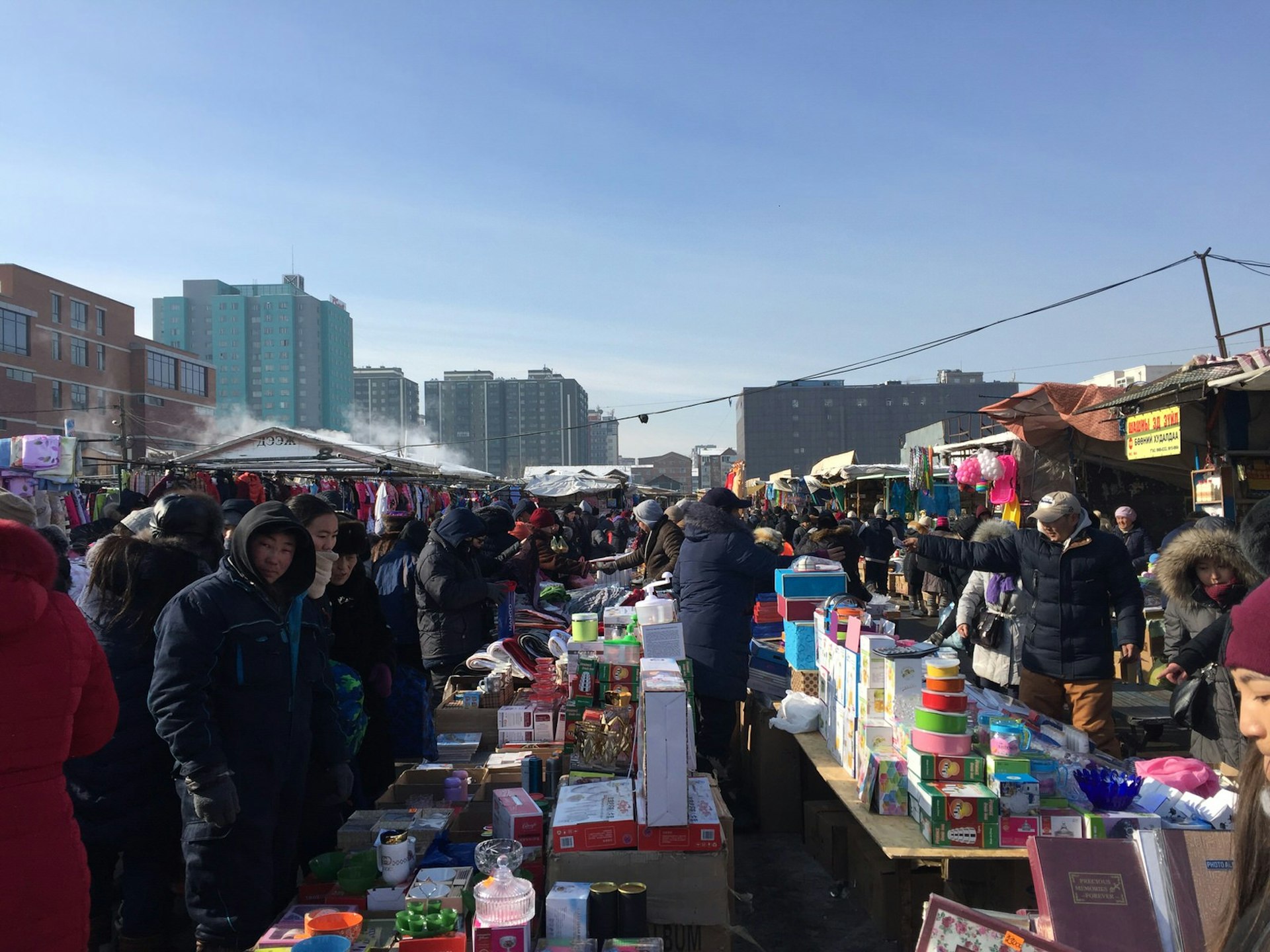
Mongolia produces over a third of the world’s cashmere: it has around 20 million goats and produces about 9000 tons of cashmere per year, according to one industry insider. Given its affordability, many Mongolians wear the fabric as part of their everyday ensembles.
Before heading out to the countryside, stock up on warm clothing at the State Department Store . Cashmere socks, sweaters and long underwear, winter parkas, leather and fur boots are available year-round, but tend to go on sale near the end of the winter season.
Located not far from here is Bodio's Yak House (what3words: overtime.highlighted.trail), which offers yak-wool products ranging from thickly woven cardigans and jumpers to highly breathable yak-hair socks, made of 'yak down', a fabric similar to wool.

The Gobi Cashmere Factory Store (what3words: bibs.sized.mergers) at the northwest end of Ulaanbaatar has a huge range of cashmere goods (particularly jumpers and cardigans), and there's often an end-of-season bargain to be had. Be aware some sizes may be limited here. Goyo Cashmere (what3words: sapping.beams.dice), located in the recently opened Shangri-la Hotel mall, has a more affordable selection of local cashmere turtlenecks, jumpers, wide-leg trousers, hats, gloves and scarves.
You might also like: Road-tripping Mongolia's Gobi Desert
Snowy excursions on the steppe
To see the best of Mongolia's frosty landscapes, you'll want to head outside of Ulaanbaatar. The surrounding Töv province is easy to reach via local tour companies. Not far outside Ulaanbaatar is the Chinggis Khaan Statue Complex (what3words: regions.technician.freshens), a 40m-high monument of the leader’s likeness forged in stainless steel.
Approaching the statue is a sight to behold, as the bright winter sun (Mongolia is sunny about 250 days a year) shines upon the former emperor’s fierce gaze. The statue was erected in 2008, as a joint effort between teams of Mongolian, Russian and South Korean engineers. If there’s time, ask your tour company about also arranging a visit with a local shaman to receive a blessing on the way.

Gorkhi-Terelj National Park (what3words: upland.florists.nuance) is quiet and incredibly scenic during the wintertime. Located 15-20 minutes' drive from the Chinggis Khaan statue and roughly two hours from Ulaanbaatar, the park includes several natural sights, such as Turtle Rock, a turtle-shaped rock formation that stands out against the brilliant blue sky and rocky mountain ranges beyond.
Other sights here include Gandan Khiid (what3words: upstarts.gangs.shuffle), sometimes called Aryaval Meditation Centre, a Buddhist monastery home to a community of monks during the summer seasons. In winter it is splendidly empty, visited only by a few local families, with breathtaking scenery from the top.
Mongolian wildlife
Wildlife is a draw for many visitors to Mongolia, and in the wintertime, a number of animals can still be spotted, including black vultures, red foxes and jackals, grey wolves, rabbits, reindeer, wild horses and goats.
Dog-sledding is another winter pastime that provides an exciting vantage for seeing the frosty landscapes up close. Dogs have always been an integral part of nomadic Mongolian life. A number of local nomad camps offer dog-sledding excursions; sleds include a nine-dog team managed by a trainer who uses verbal commands to guide the dogs through the countryside. Dog-sledding is exhilarating and requires a good sense of balance, as well as the willingness to spend time with a (friendly) pack of barking pups.
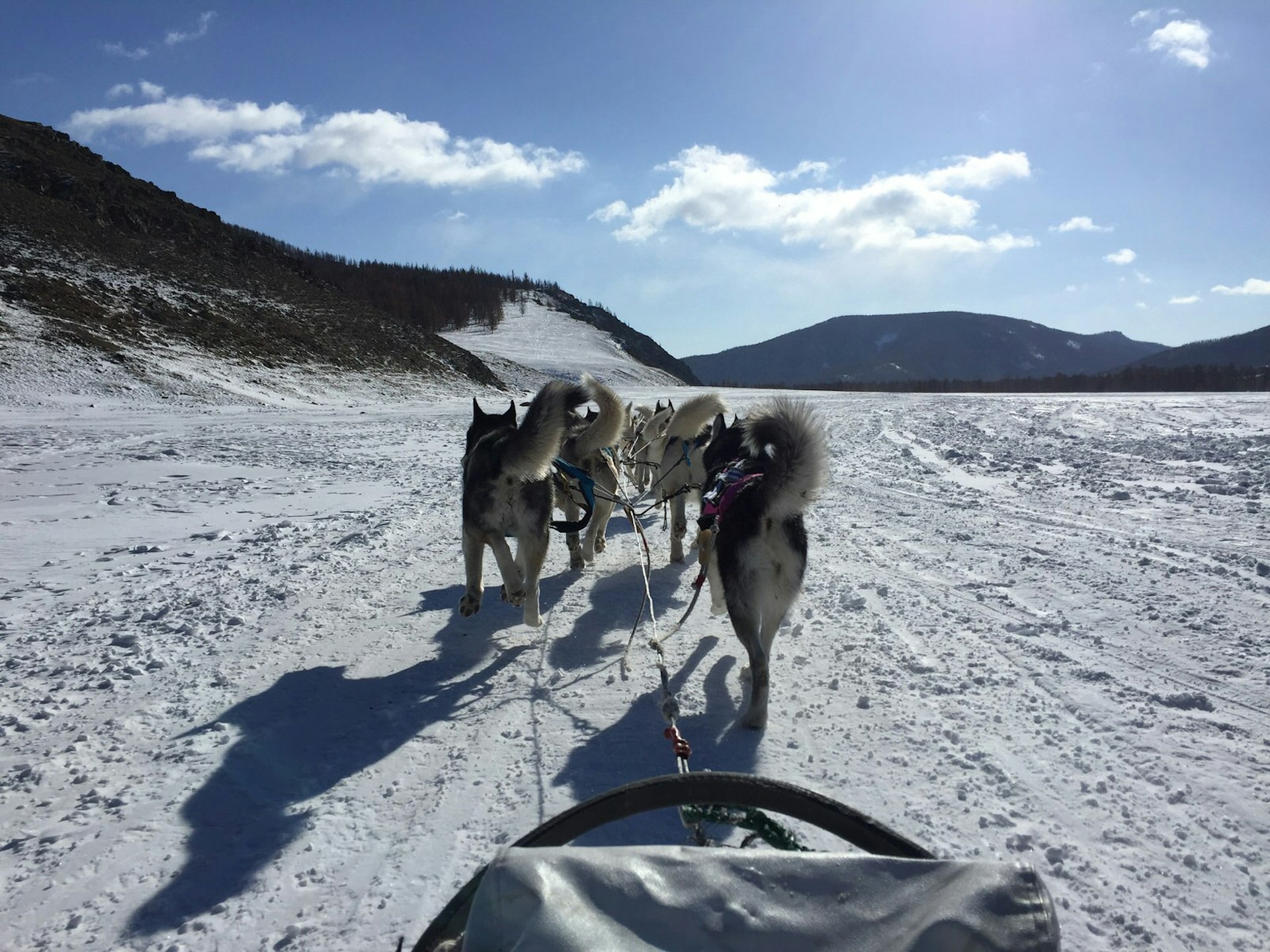
After an afternoon racing across glimmering frozen rivers and over paths of snow and rock, returning to the camp is a welcome respite, with warm ger tents to cosy into and cups of hot Mongolian suutei tsai (salty tea made from milk, tea leaves and salt) and heaps of buuz (steamed dumplings filled with fatty mutton, beef or both) ready to warm you up.
You might also like: Drive a beat-up car to Mongolia and help save the world
Winter eats
There may not be a whole lot of variety to Mongolian cuisine, but its hearty specialities hit the spot, especially in the wintertime. Mongolians eat a lot of meat and fat in the winter to stay warm, and b uuz dumplings are especially great for heating the bones in sub-zero temperatures. On top of the nation’s well-known barbecue dishes – which include herb-roasted mutton and simple cuts of beef – cold, dark evenings can be warmed up by sampling the array of local spirits, including Chinggis Khan-brand beer, local varieties of vodka and fermented camel milk, called airag .
For a taste of true local cuisine, visit Zochin Cafe (what3words: lend.trending.possible) on Ulaanbaatar's Peace Ave. This colourful eatery serves a number of barbecue dishes, along with mutton broth, cabbage soups, fried and soup dumplings, and fusion dishes like stir-fried noodles with vegetables and teriyaki beef rice. Note that Mongolian food is often on the salty side.

Make it happen
Ulaanbaatar is a good wintertime base, and offers a wide variety of toasty-warm accommodation . For a high-floor view of immense Sukhbataar Sq in frosty winter light, Khuvsgal Lake Hotel (what3words: summit.palettes.mostly) offers great value for its proximity to everything. In the countryside, Resort World Terelj (what3words: takers.single.imitating) is a large, rustic four-star hotel located inside Gorkhi-Terelj National Park. The rooms are comfortably-heated (no sleeping bags or hot water bottles needed!), and the hotel restaurant, which serves both western and Mongolian fare, is open until about 11pm in the wintertime.
Before arrival, make sure to stock up on certain winter essentials, as some of these may not not be widely available in Ulaanbaatar. Ski masks, or insulated partial face masks are crucial for keeping warm in the great outdoors, while disposable hand warmers, sock warmers and adhesive heat packs are always good to have on hand. Thermal gloves to protect against strong winds (especially while dog-sledding), and breathable synthetic or merino long underwear (never cotton!) to wear next to your skin are all very important.

While roads may be slippery, wintertime transport in Mongolia is fine for the most part, as there is little snowfall. Walking outside for more than 20 minutes at a time can become difficult due to the cold, but it's easy to hail a taxi within Ulaanbaatar. If travelling further into the countryside, consider utilising a travel agency, like Nomadic Trails , that specialises in outdoor excursions and can arrange winter tours across the steppe.
You may have noticed we've included what3words coordinates for the points of interest mentioned in this article. In 2016, the Mongolian postal service adopted this 21st-century digital address system in place of its old postal system. To try it out, download the app and use the three-word coordinates to search for each location. Find out more .
This article was first published in March 2018 and last updated in January 2020.
This article was first published Mar 14, 2018 and updated Jan 6, 2020.
Explore related stories
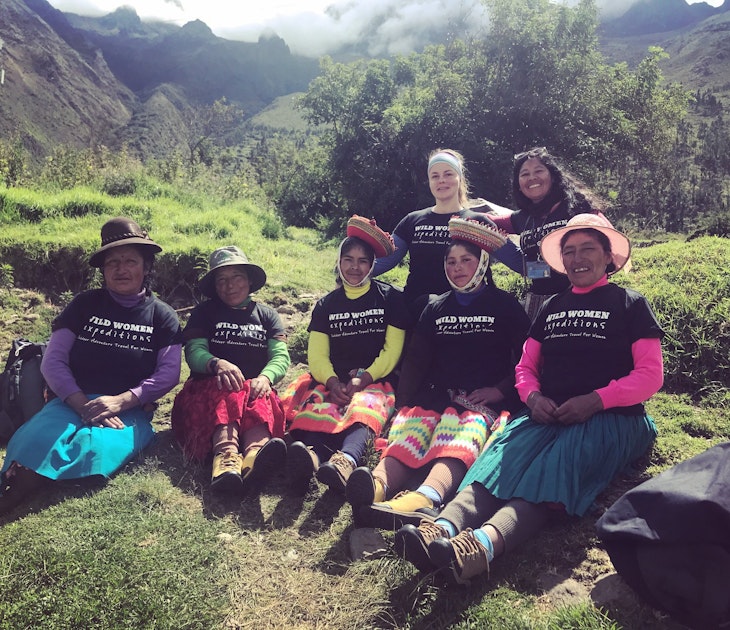
Oct 7, 2019 • 6 min read
Wild Women Expeditions owner, Jennifer Haddow shares why adventure travel for women is so important in a Q&A with Lonely Planet.

Dec 28, 2023 • 9 min read

Dec 1, 2023 • 6 min read
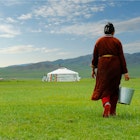
Aug 24, 2023 • 9 min read
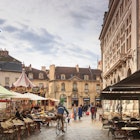
Jul 3, 2023 • 8 min read

Mar 1, 2021 • 9 min read

Dec 18, 2020 • 11 min read
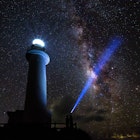
Oct 21, 2020 • 5 min read

Oct 20, 2020 • 13 min read
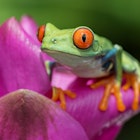
Sep 30, 2020 • 6 min read
You are using an outdated browser. Please upgrade your browser to improve your experience.

- Things To Do in Mongolia
- Travel Blogs & Articles
- Tours & Activities
- Follow The Tracks
- Interactive Map
- Hotel, Flight and Car Booking
- Car & Gear Rental
- Activities & Tours
Mongolia in Winter
Share on:
Uncover the Magic of Mongolia in Winter
Mongolia, a land of breathtaking landscapes and rich cultural heritage, reveals a whole new world of wonder during the winter months. Snow-capped mountains, frozen lakes, and pristine white steppes offer a unique and unforgettable experience. In this magical winter journey, you will uncover the beauty of Mongolia in winter, exploring its landscapes, wildlife, and traditions, and learn how to make the most of your winter adventure.
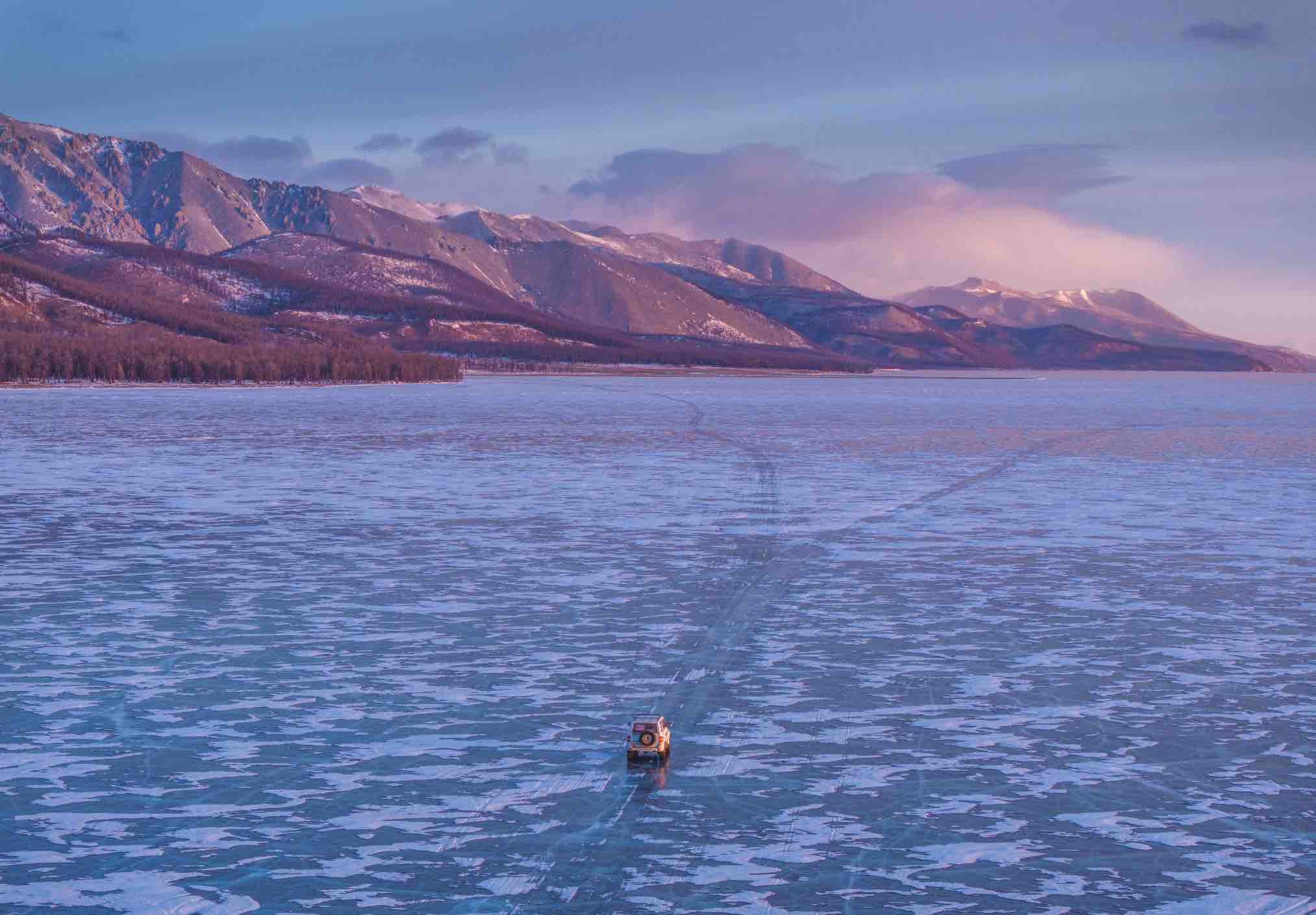
Key Takeaways
- Explore Mongolia’s unique winter landscape, wildlife and cultural attractions.
- Experience a range of thrilling activities such as dog sledding and ice skating.
- Be prepared with the right gear to capture stunning photos in cold temperatures.
Embracing the Cold: Mongolia's Winter Weather
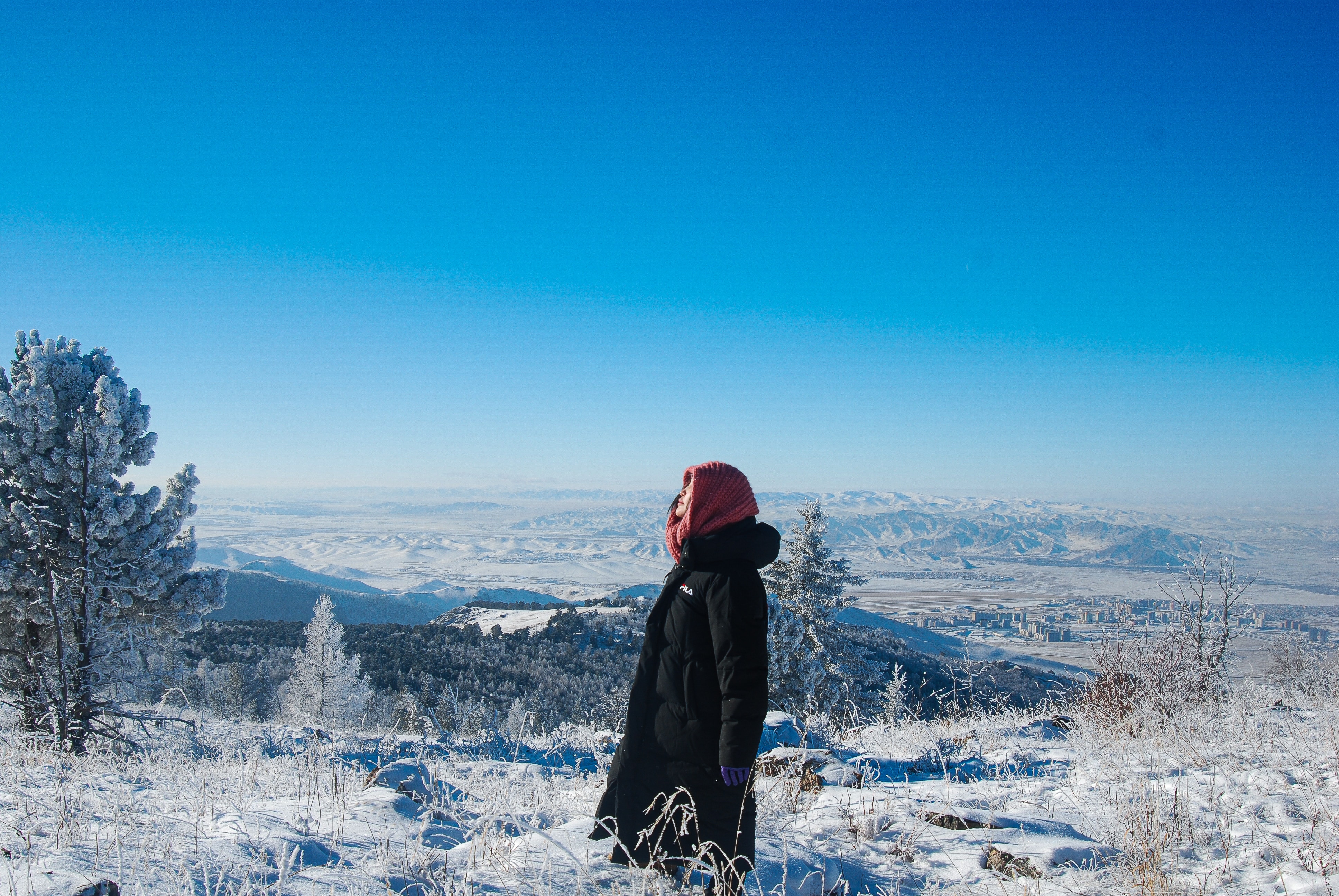
Mongolia’s winter transforms the country into a mesmerizing wonderland adorned with:
- Snow-covered hills
- Wide-open steppes
- Forested mountains
The extreme cold weather, with temperatures ranging from 15°C in the south to as low as -35°C in the north, adds a thrilling touch to the adventure. No matter how severe the conditions may be, the allure of Mongolia’s landscapes, swathed in frosty whiteness, promises a journey worth undertaking.
A dzud, a winter phenomenon specific to Mongolia, occurs during the winter months and can have a significant impact on the nation’s livestock and rural population. However, the Mongolian people are well-equipped to face these challenges, with essential gear such as winter boots providing warmth and protection from the elements. The fortitude of the locals complemented by the land’s awe-inspiring splendor ensures a winter visit to this country will be engraved in your memory.
Winter Wildlife Expeditions
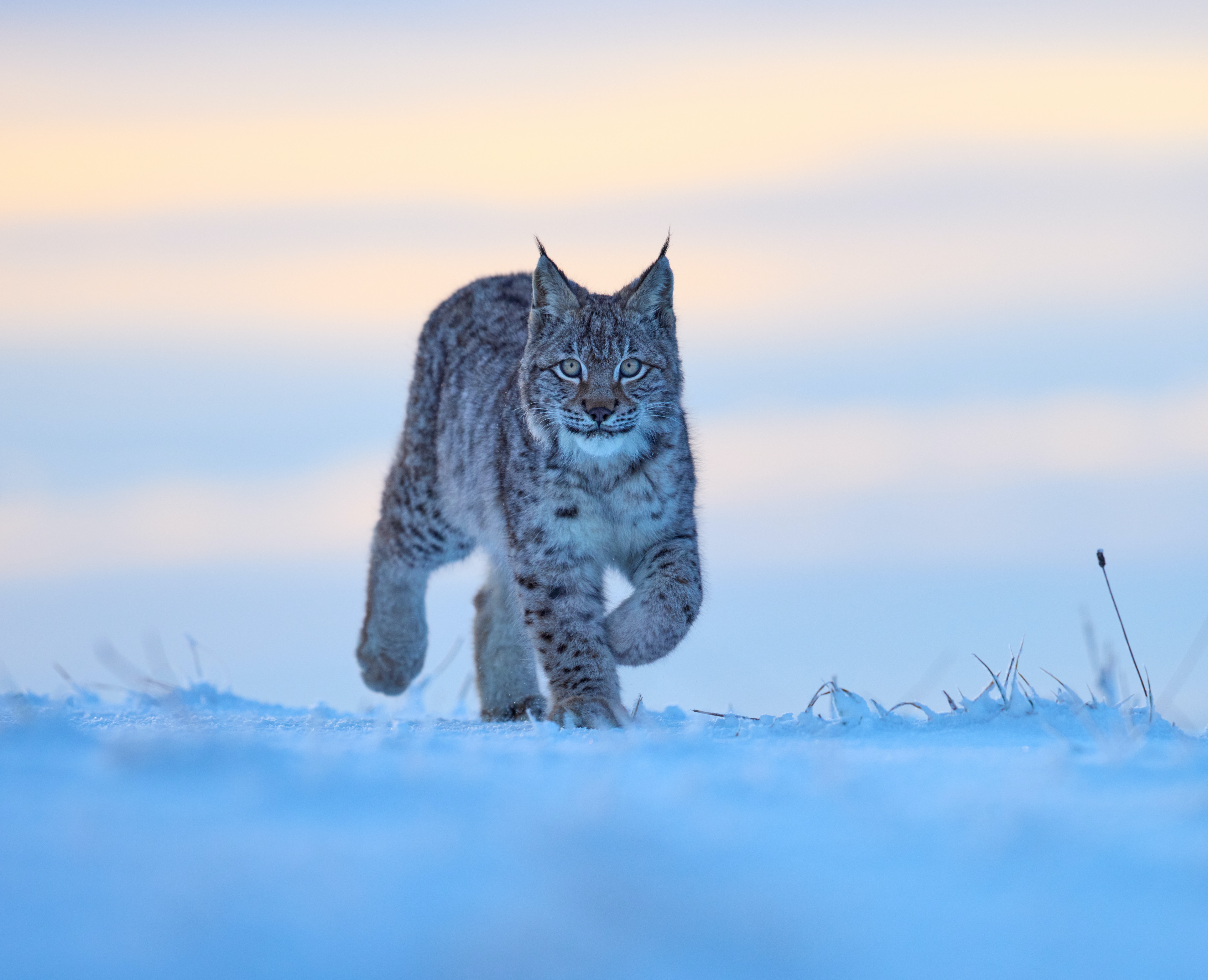
Winter in Mongolia offers the opportunity to discover the fascinating wildlife that inhabits the country. Central Mongolia is home to a variety of species, including gray wolves, Siberian ibex, and other endangered animals. The elusive snow leopard, a majestic creature native to Central Asia, can be found primarily in the Gobi Altai High Mountain area, which is also home to golden eagles. The winter season is the most likely time to catch a glimpse of these magnificent animals, making it a popular tourist attraction to visit Mongolia during this time.
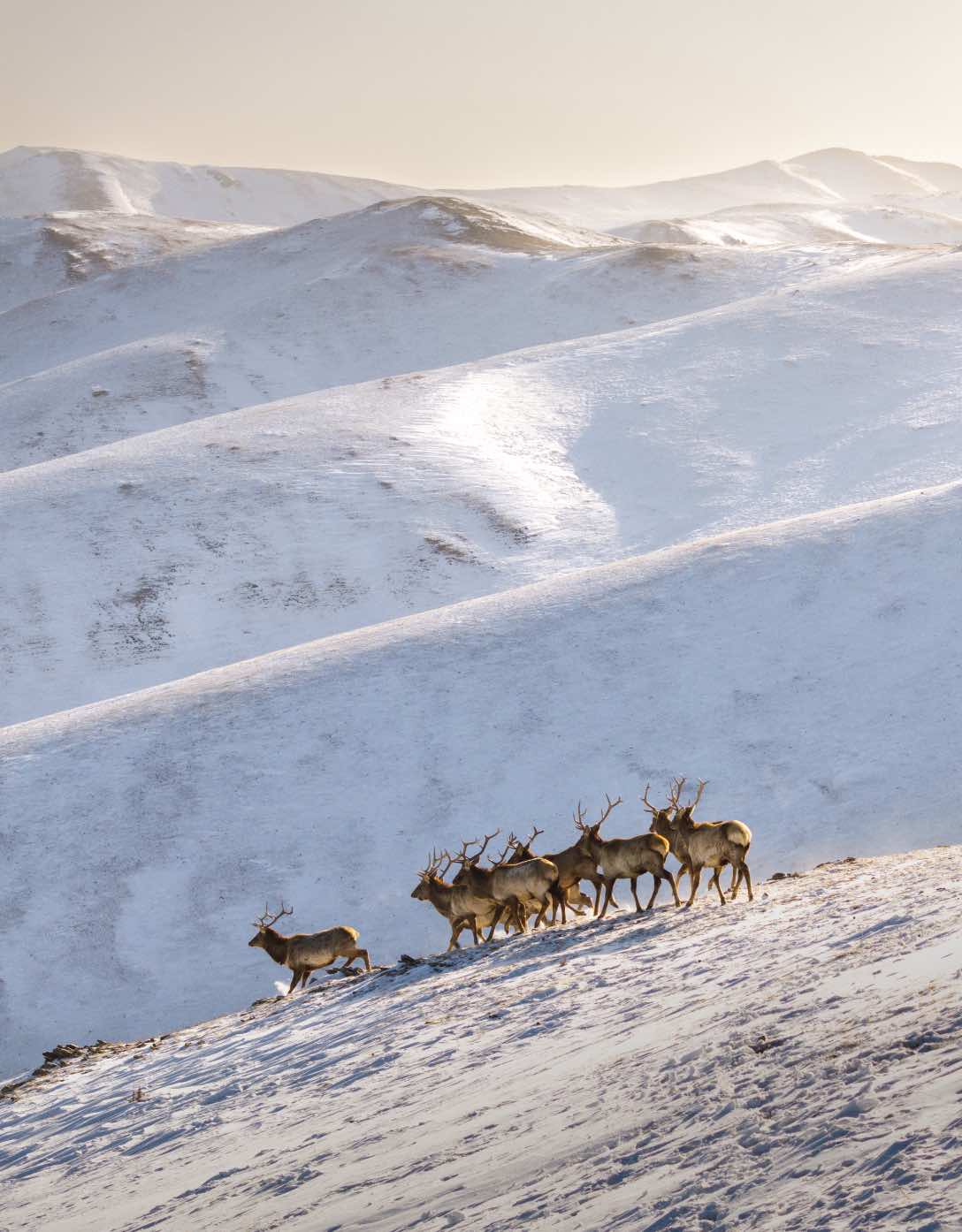
Exploring Mongolia’s wildlife during winter also involves being aware of the challenges faced by the animals, such as the dzud, which can have detrimental effects on their populations. This understanding adds a layer of appreciation for the resilience of nature and the importance of wildlife conservation.
Undertaking wildlife expeditions in Mongolia’s winter introduces you to the country’s distinctive fauna and allows you to marvel at the arresting landscapes.
Experiencing Nomadic Life in Winter
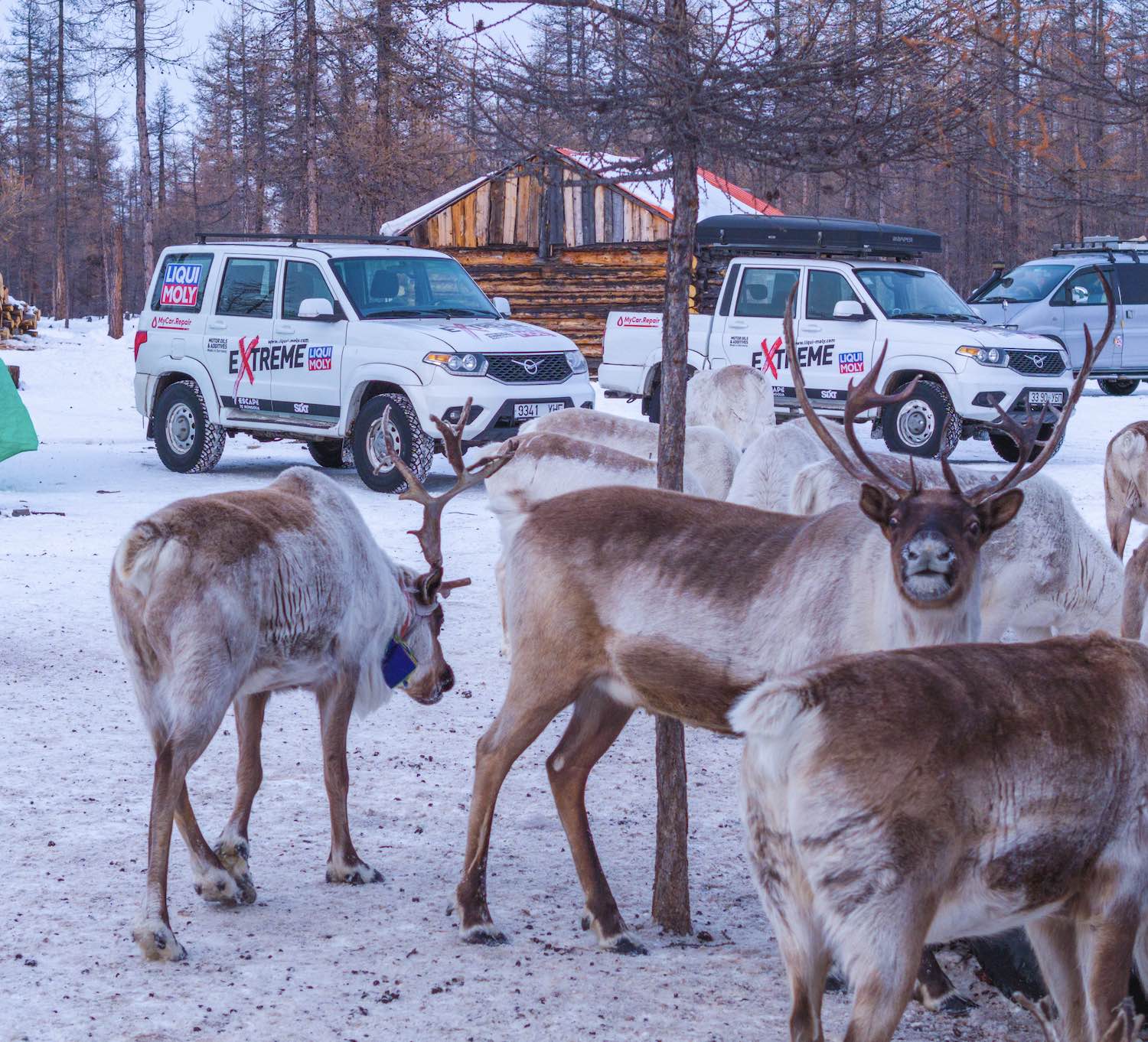
Mongolia’s nomadic lifestyle is a captivating aspect of the country’s culture, and experiencing it during winter offers a unique perspective on the challenges faced by these resilient communities. Nomadic families, including Kazakh eagle hunters, endure harsh conditions such as:
- the drying of nearby rivers
- catastrophic winters leading to animal deaths
- extreme weather
- scarcity of vegetation and water
Despite these challenges, the nomadic people of Mongolia extend warm hospitality to visitors, offering insight into their daily lives and traditions. Staying in a traditional yurt camp and reserving a ger without a tour are ways to immerse oneself in the nomadic lifestyle. The opportunity to experience the genuine warmth of Mongolian families amidst the cold winter months creates lasting memories and deepens the appreciation for their way of life.
Western Mongolia: Land of the Eagle Hunters
Western Mongolia is home to the fascinating culture of the Kazakh eagle hunters, an ancient form of falconry practiced by the Kazakh people. With around 250 eagle hunters in the region, this unique tradition holds immense cultural significance. The bond between the hunters and their golden eagles is extraordinary, showcasing their masterful hunting skills and revered status in the community.
By partaking in the Falconry Tour of Western Mongolia, visitors get a first-hand experience of this enthralling culture. This 4-day journey involves living with a Kazakh eagle hunter, horse riding, and observing their training and hunting methodologies. The Ulgii Eagle Festival, held annually in early October, is another opportunity to dive into the world of eagle hunting, with various events and competitions showcasing the prowess of these magnificent birds and their handlers.
This extraordinary cultural experience is a must-see when visiting Mongolia in winter.
Celebrating Winter Festivals in Mongolia
Mongolia hosts a variety of unique winter festivals, each offering a glimpse into the country’s rich cultural traditions. The Khuvsgul Lake Ice Festival, Thousand Camel Festival, and Tsagaan Sar (Lunar New Year) are examples of such events, providing visitors with unforgettable experiences and opportunities to engage with the local communities.
In the following subsections, we will explore each of these festivals in detail.
Khuvsgul Lake Ice Festival
The Khuvsgul Lake Ice Festival is an annual event held on the frozen Khuvsgul Lake, organized to promote the protection of the lake and showcase the beauty of the frozen landscape. The festival features various activities and competitions, such as horse-drawn sleighs, ice sculptures, and traditional Mongolian games, providing a rich cultural experience for visitors. The event takes place on March 3rd and 4th, and while not as widely visited as other festivals, it still attracts a number of tourists to experience this unique winter celebration.
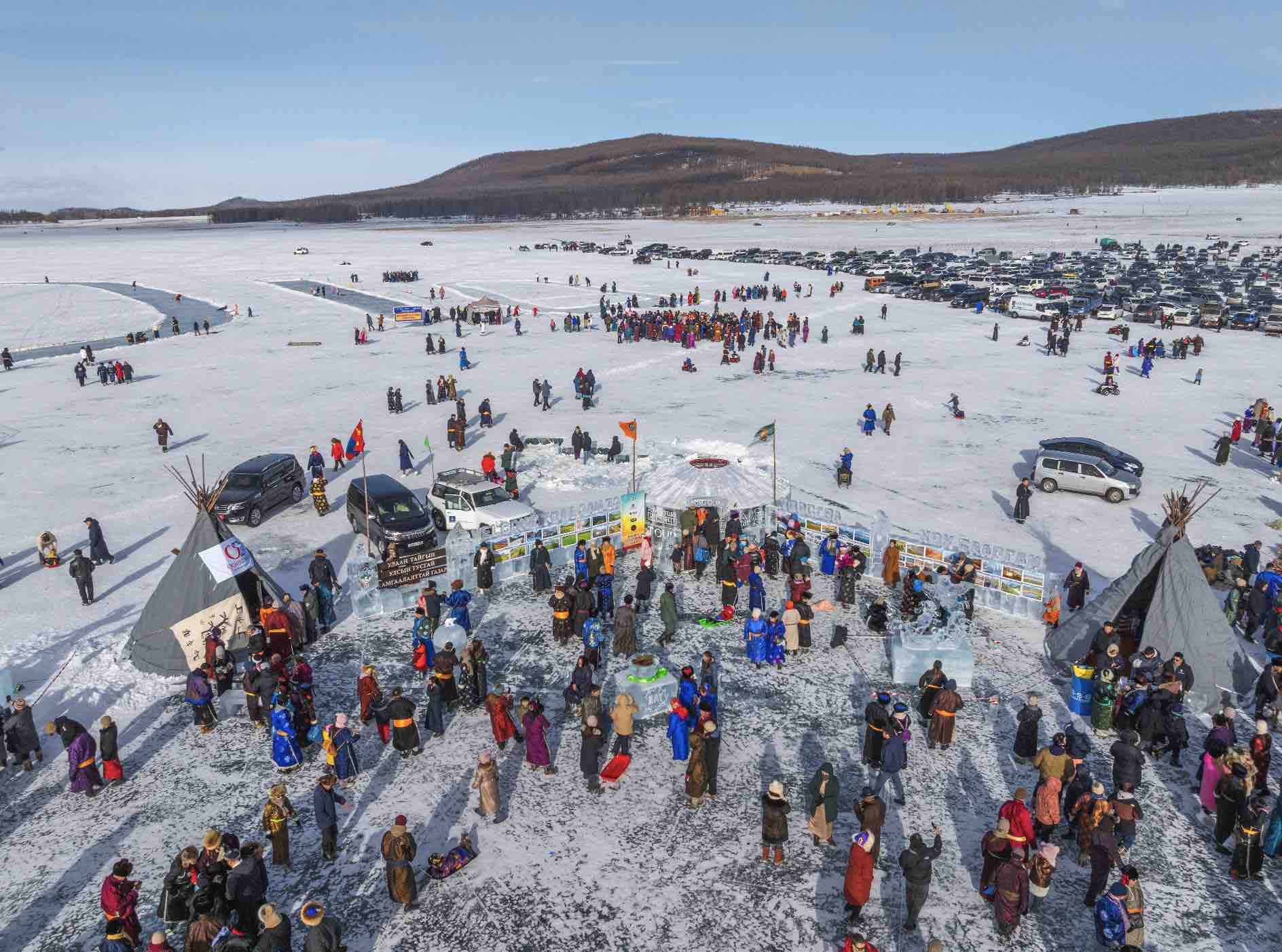
Beyond the games and contests, the Khuvsgul Lake Ice Festival features activities such as dog sledding and an ice ger building competition, fostering a spirit of community and exhilaration during the event. The festival is a testament to the resilience of the Mongolian people, who find joy and celebration even in the harshest of winter conditions.
Thousand Camel Festival
Celebrating the importance of camels in Mongolian culture, the Thousand Camel Festival takes place annually on the 6th and 7th of March in the Gobi Desert region. This event is dedicated to the Bactrian camel and features various activities, including:
- Camel parades
- Camel races
- Camel polo tournaments
- Beauty contests
- Performances of traditional Mongolian music and dance
The Thousand Camel Festival is not only an entertaining event but also an opportunity to learn about the significance of camels in the nomadic lifestyle. As a testament to the resilience and adaptability of these incredible animals, this festival highlights their role in shaping the culture and livelihood of the Mongolian people.
Tsagaan Sar (Lunar New Year)
Tsagaan Sar, the Mongolian Lunar New Year, is a time for families to gather and celebrate the beginning of a new year with feasts, music, and dancing. This traditional holiday is deeply rooted in Mongolian culture and symbolizes peace and harmony. On the day preceding Tsagaan Sar, known as Bituun, it is customary for locals to clean their homes and prepare for the upcoming holiday.
During the celebration, meals typically consist of:
- Sheep’s tail
- Rice with curds
This showcases the importance of livestock in Mongolian culture. Tsagaan Sar offers a unique opportunity for visitors to experience genuine Mongolian hospitality and join in the festivities, making it an unforgettable part of their winter journey.
Adventure Awaits: Winter Activities in Mongolia
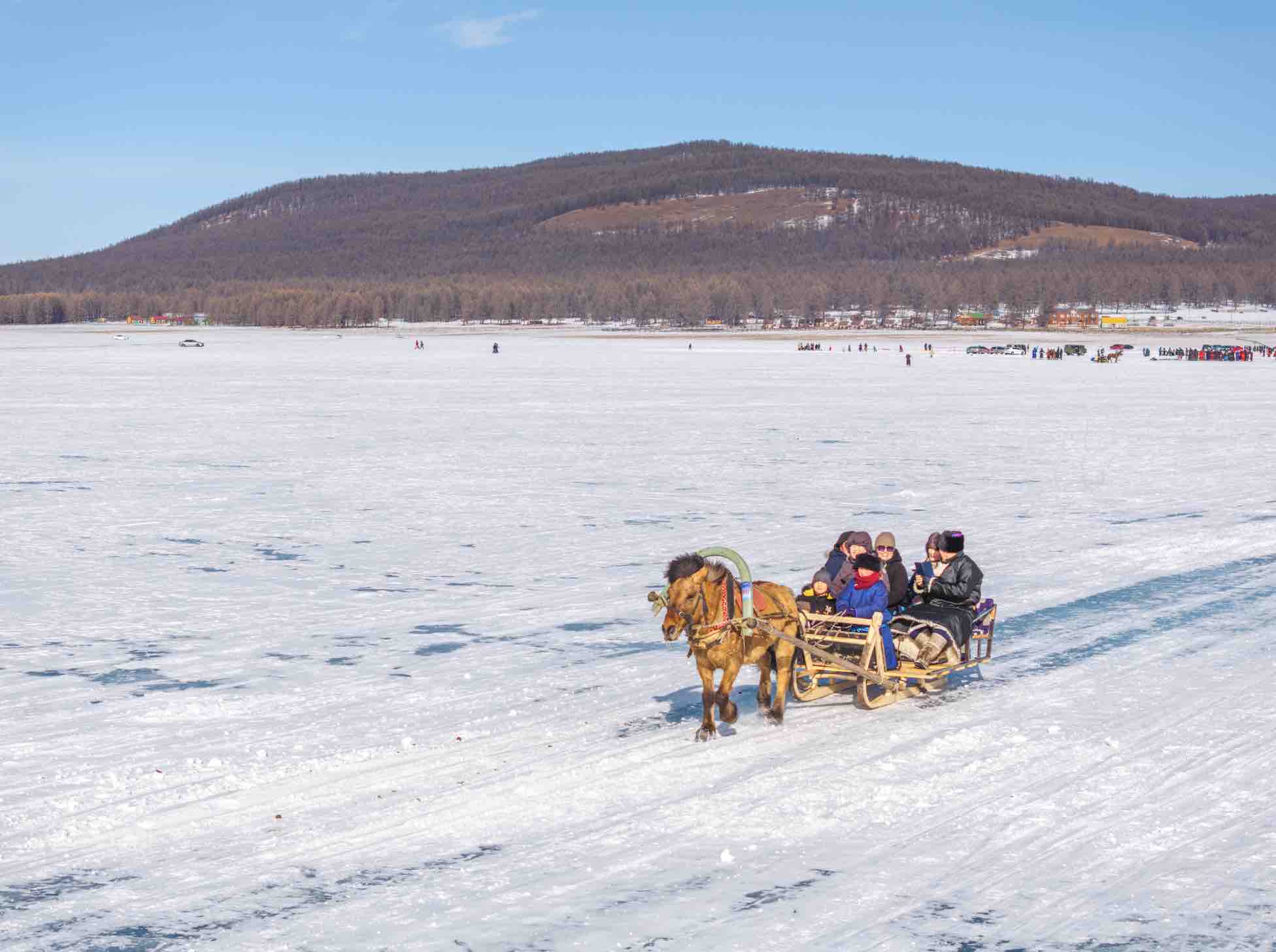
Mongolia presents an array of electrifying winter activities, ensuring visitors create indelible memories set against its stunning landscapes. Some of the activities include:
- Dog sledding at Khuvsgul Lake, Terelj, Khentii National Park, and Bogd Khaan National Park
- Ice skating
- Horse sleigh races
- Snowmobiling across frozen rivers and lakes
- Swimming in Hot Springs
There is no shortage of adventure to be found in this winter wonderland, with all the destinations offering excitement and thrill.
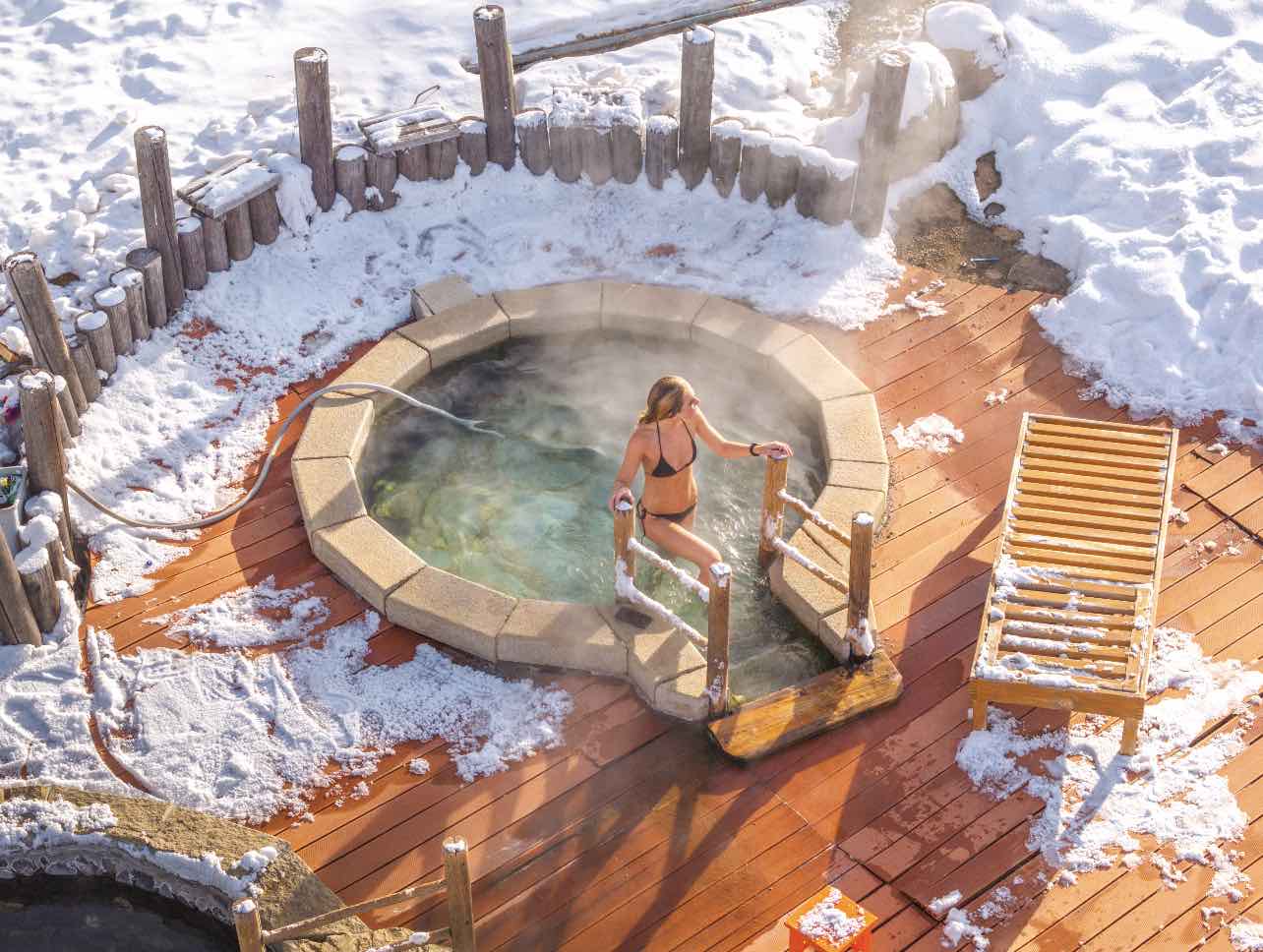
In addition to these exhilarating activities, attending ice festivals and savoring traditional Mongolian food accompanied by a glass of Chinggis Gold vodka offers a taste of the country’s unique culture. Whether you’re an adrenaline junkie or simply seeking a serene winter escape, Mongolia’s winter activities cater to all interests and levels of adventure.
Best Winter Tour in Mongolia
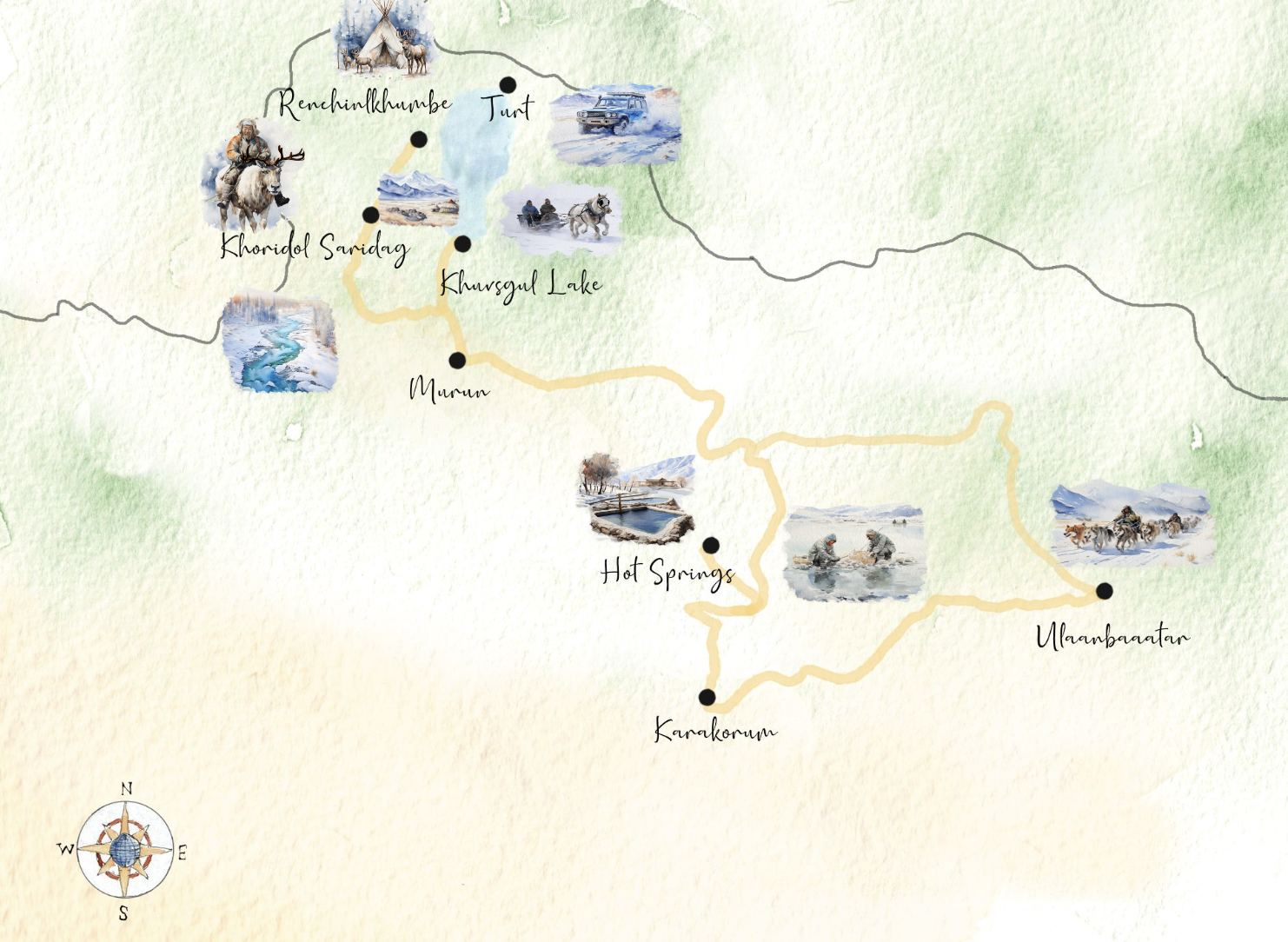
The top-rated winter tour in Mongolia features a 9-day or 12-day itinerary brimming with memorable experiences. These tours provide a comprehensive exploration of the country’s diverse landscapes, wildlife, and cultural attractions, ensuring a memorable journey for all who embark on it.
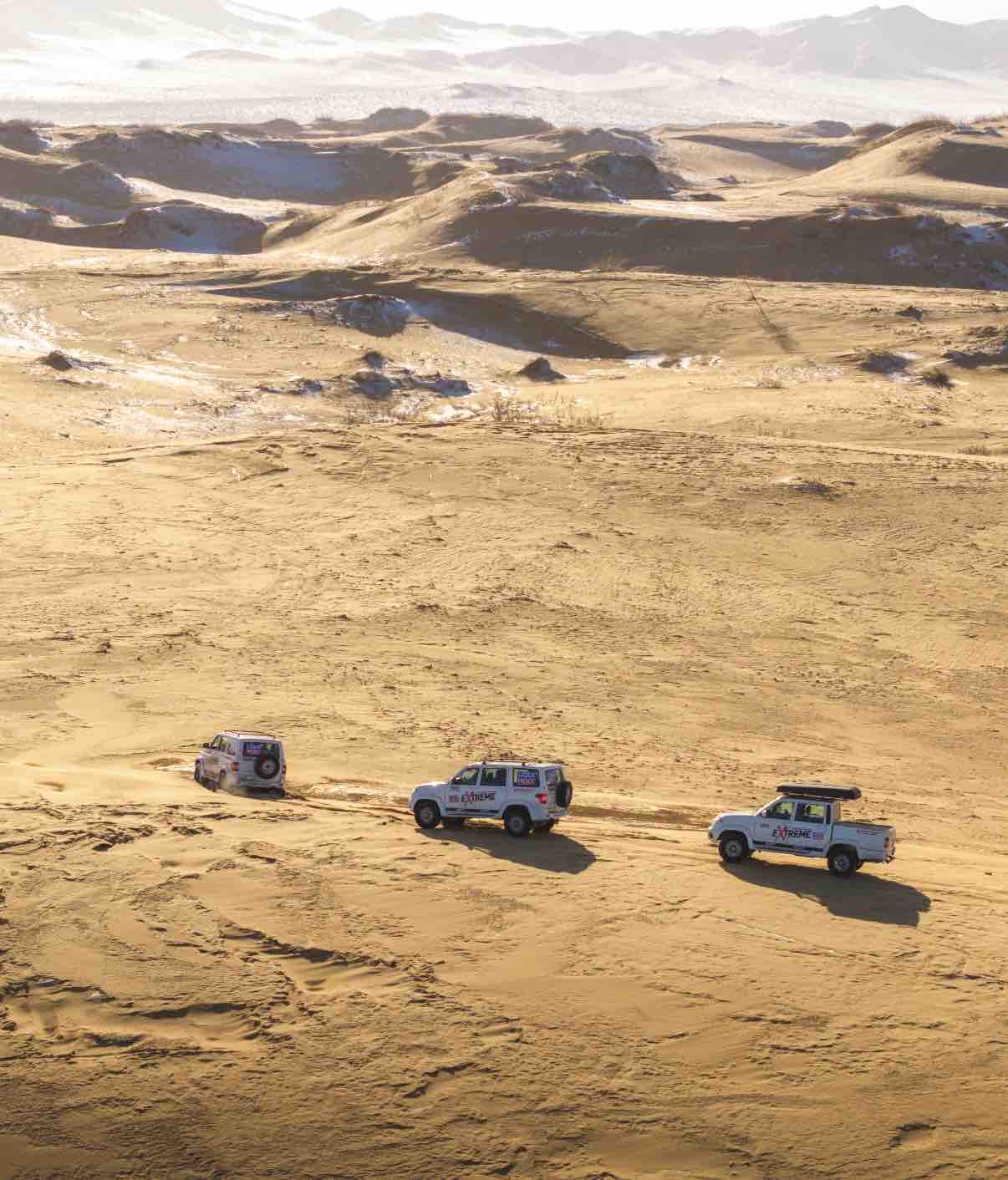
Highlights of the tour include popular tourist attractions such as:
- Exploring the bustling city of Ulaanbaatar
- Venturing into the remote corners of Northern Mongolia
- Experiencing the pristine beauty of frozen lake Khuvsgul and the Taiga with the Reindeer tribes
These tours showcase the best of the Mongolian winter.
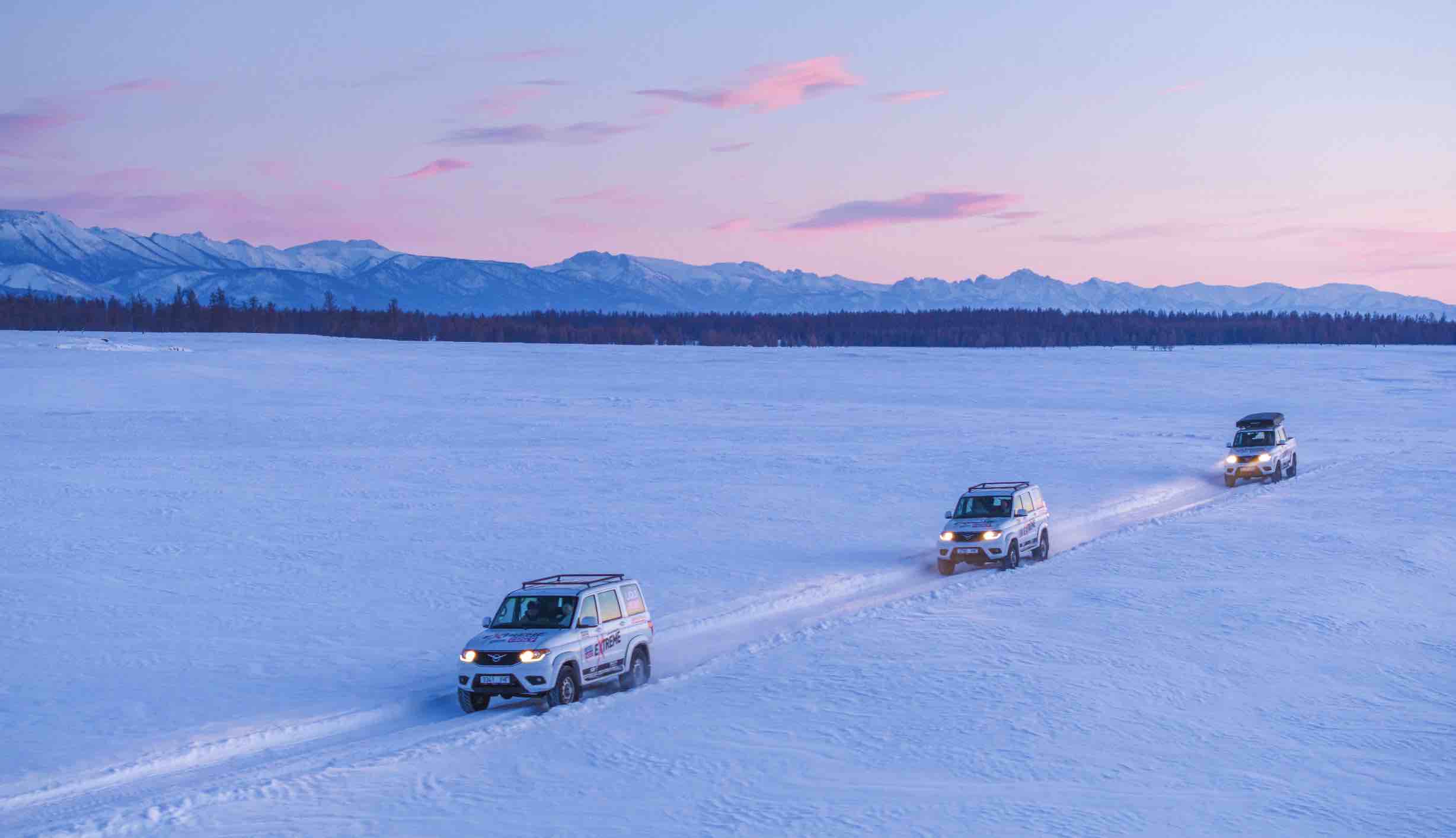
The itineraries are carefully crafted to include a variety of experiences, such as:
- staying in traditional yurt camps
- dog sledging
- driving over frozen Lake Khuvsgul
- visiting hot springs
- visiting Kazakh eagle hunters
- participating in winter festivals like the Khuvsgul Lake Ice Festival and Thousand Camel Festival
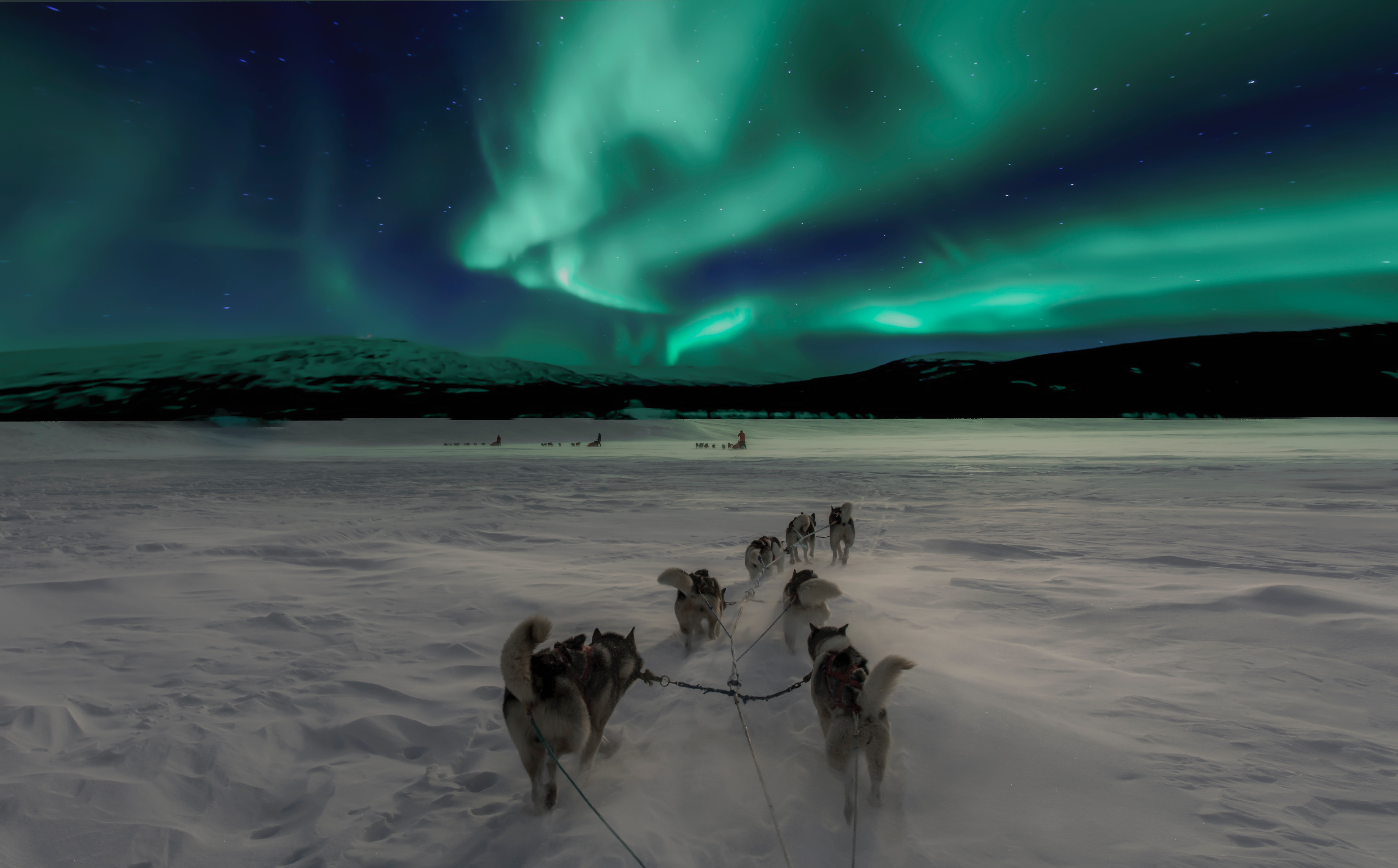
With options to customize the tour to suit individual preferences, these winter tours offer an unparalleled experience of Mongolia’s winter wonderland.
Exploring Terelj National Park in Winter
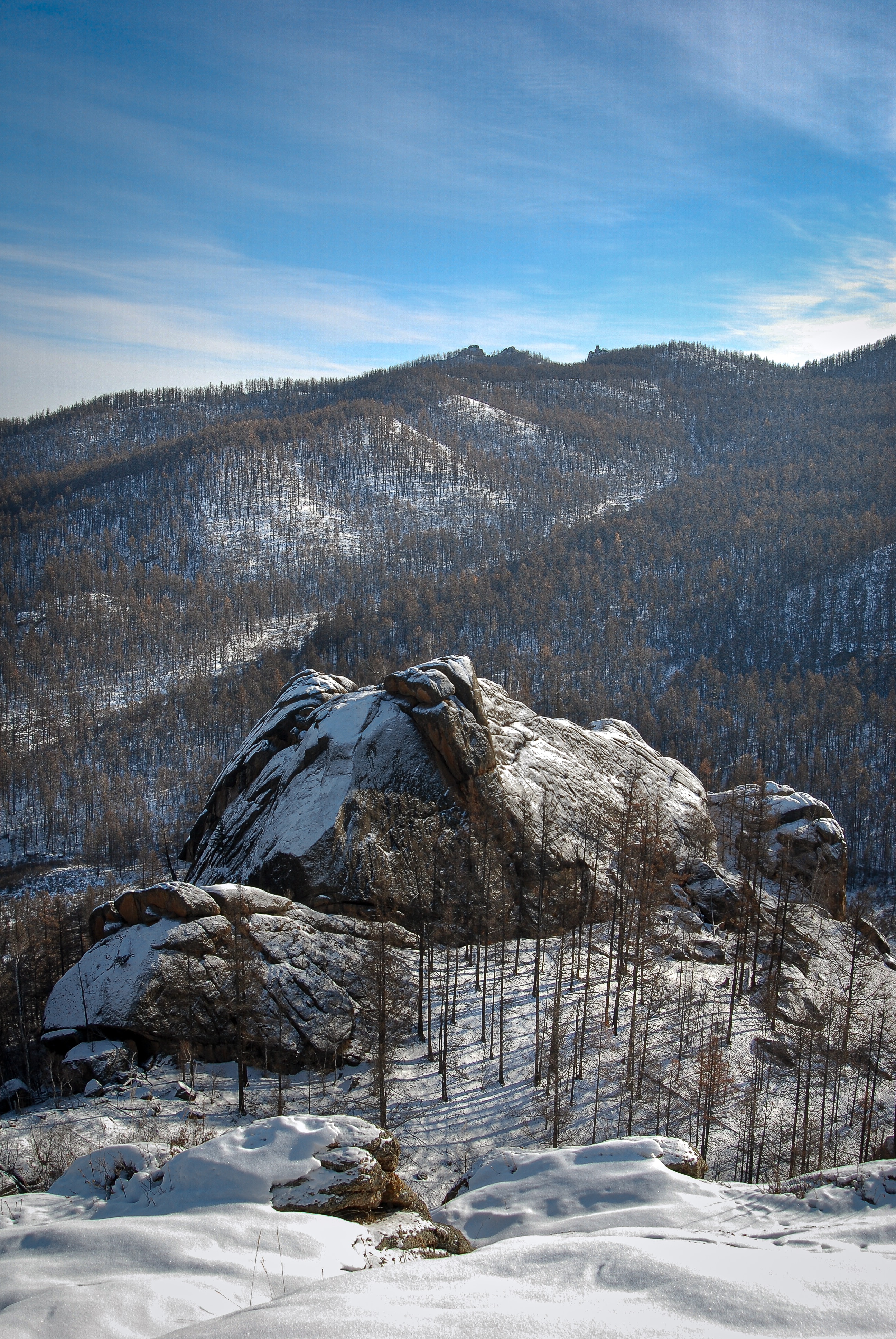
Terelj National Park, located just 1.5 hours from Ulaanbaatar, is a stunning destination to explore during the winter months. The park is adorned with snow-covered landscapes, offering visitors a glimpse into the pristine beauty of Mongolia’s winter wilderness. Terelj’s unique attractions, such as the glacial Khagiin Khar Lake, Yestii Hot Water Springs, and the Buddhist monastery, create a diverse and enriching experience for all who venture into its icy realm.
In addition to the park’s natural and cultural attractions, visitors can witness over 250 species of birds and indulge in various winter activities such as ice skating, horse sleigh races, and snowmobiling. As temperatures can fluctuate between 10°F (-12°C) and -35°F (-37°C), equipping yourself with warm apparel and suitable gear is vital when venturing into Terelj National Park during winter.
Gobi Desert: A Winter Wonderland
The Gobi Desert, the earth’s coldest desert, offers a unique winter experience, with nomads herding their animals, wild animals roaming the landscape, and the horizon stretching as far as the eye can see. Snow leopards, ibex, wild camels, gazelles, and various bird species such as eagles and vultures can be observed during the winter months, showcasing the resilience of the desert’s wildlife.
The Yolyn Am Valley offers a one-of-a-kind attraction in the Gobi Desert, including:
- A magnificent cascading frozen waterfall
- An ice field
- Camel trekking in front of the Flaming Cliffs, a popular activity during the Thousand Camel Festival
Exploring the Gobi Desert during winter unveils a fascinating world of wonder amidst the snow-covered dunes and unique wildlife.
Tips for Traveling to Mongolia in Winter
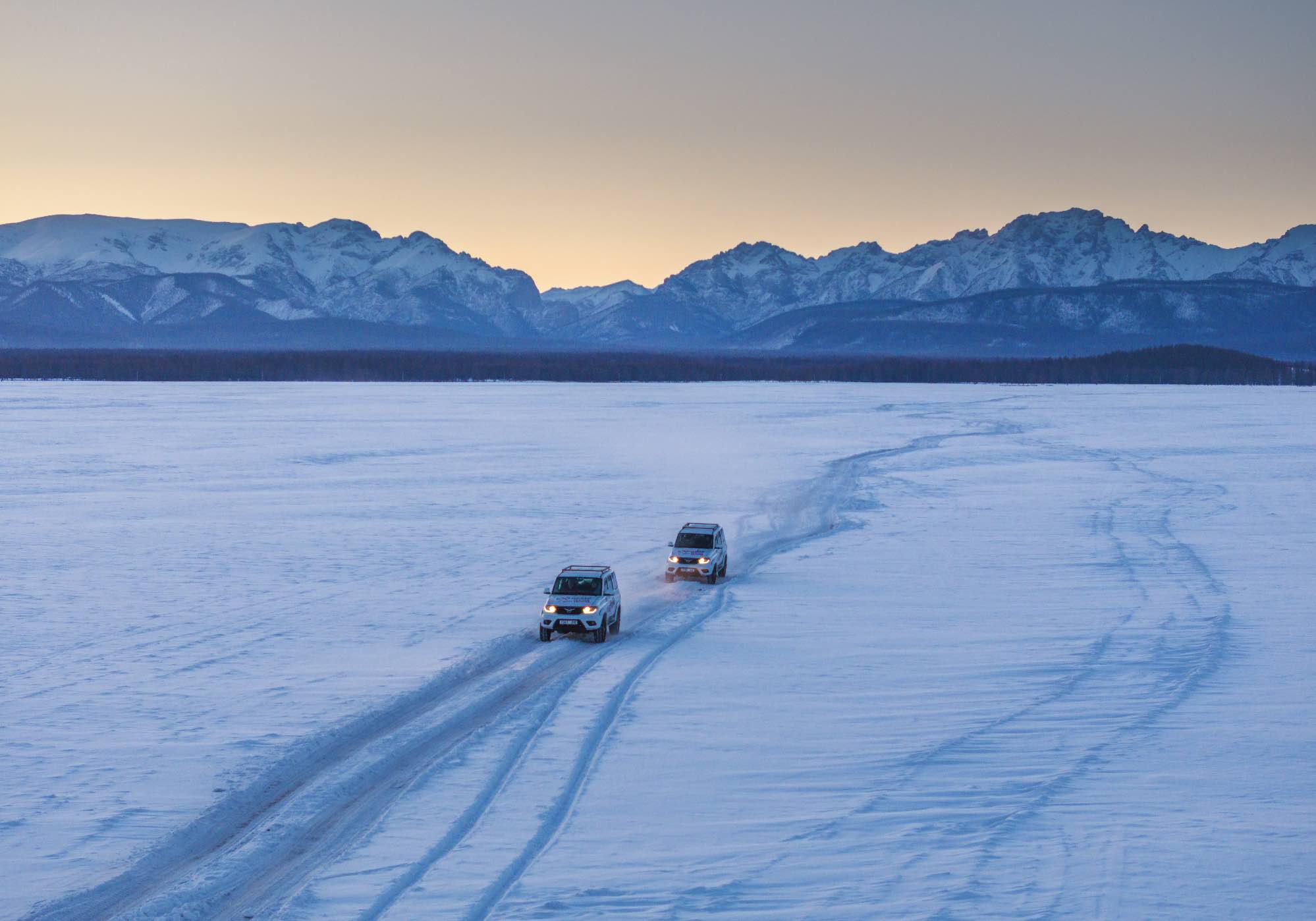
Journeying to Mongolia during winter may pose challenges, but the rewards are plentiful. To make the most of your journey, it is essential to be well-prepared and follow safety precautions. When traversing Mongolia’s winter landscapes, it is crucial to:
- Employ an experienced driver with a winterized car
- Have a well-defined plan to avoid getting lost or stranded in the snow
- Be aware of the risks associated with winter travel, such as frostbite and car difficulties
By taking these precautions, you can ensure a safe and enjoyable trip.
Packing adequate clothing and gear is essential for a comfortable winter adventure in Mongolia. Here are some recommended items to keep you warm in the frigid temperatures:
- Two pairs of pants
- Cashmere or wool socks
With proper preparation and an adventurous spirit, a winter journey to Mongolia can be an unforgettable experience, offering a unique perspective on this incredible country.
Capturing Winter Memories: Photography Tips
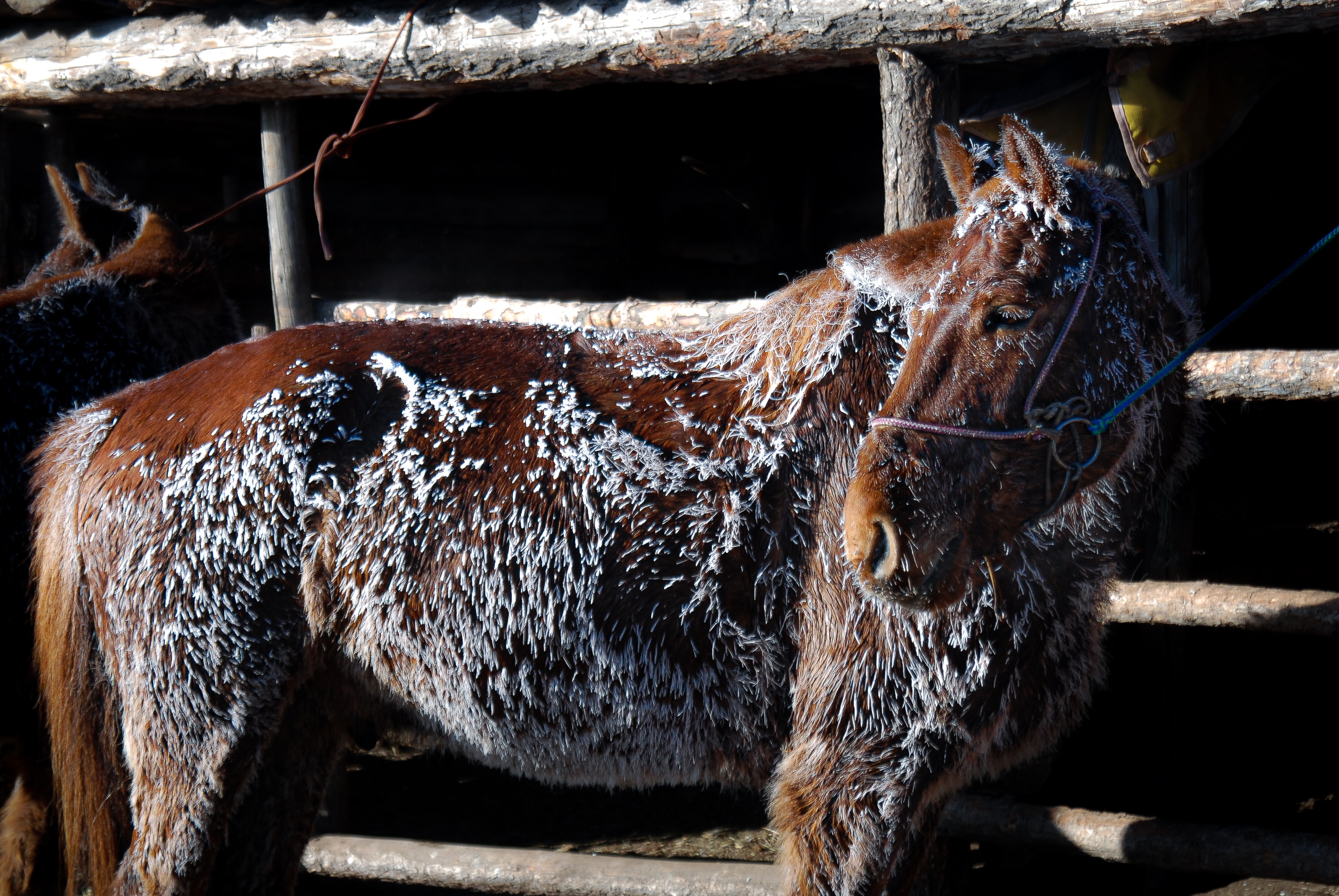
The winter landscapes of Mongolia provide ample scope for capturing breathtaking photographs. To capture the beauty of the snow-covered scenery, it is important to protect your camera gear from the harsh winter conditions. Here are some tips to help you:
- Store your gear inside a closed camera bag
- Allow for a gradual transition between temperatures
- Use a Ziploc bag to reduce condensation
- Keep batteries close to your body heat to extend their life
- Utilize a waterproof camera bag and a foam roll mat to prevent cold transfer and damage to your equipment
By following these tips, you can ensure that your camera gear stays safe and your winter photography experience is enjoyable.
When shooting snow scenes, use a fast shutter speed of at least 1/125 and an ISO setting between 1600 and 3200 to capture the perfect shot. For photographing the Northern lights, use a tripod, short shutter speed, low F-number, and shoot in RAW format for better post-processing options. By following these photography tips, you can create stunning images that capture the magic of Mongolia’s winter wonderland and preserve your memories for a lifetime.
Mongolia’s winter season unveils a world of wonder, with its breathtaking landscapes, unique wildlife, rich cultural traditions, and thrilling activities. From the snow-covered steppes of central Mongolia to the icy realm of Terelj National Park and the Gobi Desert’s winter wonderland, there is no shortage of adventure and beauty awaiting those who venture into this extraordinary country. Embrace the cold, immerse yourself in the nomadic lifestyle, and capture the magic of Mongolia’s winter in your heart and memory.
Frequently Asked Questions
How cold is mongolia in winter.
Mongolia experiences very cold winters, with temperatures ranging from -15°C to -30°C (-5°F to -22°F). The mountains tend to be even colder.
Is December good time to visit Mongolia?
December is a great time to visit Mongolia, with snow-covered lands and breathtaking views of endless white steppes and Siberian borderlands. Enjoy the unique beauty of winter in Mongolia!
What are winters like in Mongolia?
Winter in Mongolia is characterized by subzero temperatures, with the average daily temperature at -13° C and temperatures known to drop below -40° C. Ulaanbaatar is the coldest capital city in the world, with an average winter temperature of -25° C. Winter typically lasts from November to February and is a dry cold, making for a possible trip with adequate preparation and equipment.
What are the best months to go to Mongolia?
The best months to go to Mongolia are June to August, when there is sunny weather and pleasant temperatures, making it ideal for exploring the culture and lush nature of the country.
Are there any specific winter festivals worth attending in Mongolia?
Mongolia has several unique winter festivals worth attending, including the Khuvsgul Lake Ice Festival, Thousand Camel Festival, and Tsagaan Sar (Lunar New Year), offering visitors a memorable experience of the country's cultural traditions.
Request A Car Rental
Travelling to Mongolia and need a car rental plus extra equipments?
Get in touch with us
Tell us about your Rental requirements
- Toyota Landcruiser 76
- Toyota Landcruiser 79 Pickup
- UAZ Patriot
- Basic vehicle insurance
- Full vehicle insurance
- English speaking driver
- Rooftop tent
- Ground tent (max 2 people)
- Camping cooking gear
- Sleeping matts
See Interactive Map
Follow the adventure or share your experiences on our social networks
Explore mongolia.
- Destinations
- Things To Do
- Experiences
Top Destinations
- Ulaanbaatar
Top Experiences
- Attractions
- Self Drive Roadtrip
Travel Information
- Essential Tourist Info
- Visting Mongolia
- Getting Around Mongolia
- Partners & Sponsors
- Accommodation
2024 © Escape To Mongolia. Sitemap .

Best Time To Visit Mongolia
By Jessie Festa & Avantika Chaturvedi. This guide to when to visit Mongolia contains affiliate links to trusted partners!
Wondering when to best time to visit Mongolia is?
Then you’re in the right place!
If you’re planning a trip to Mongolia, one of the most important decisions to make is when to go. The thing is, there are a lot of factors to consider: the weather, your desired activities, what festivals are taking place, and seasonal considerations.
Luckily, the following guide goes over everything you need to think about when choosing when to visit Mongolia so that you can make an informed decision.
⏳ My top Mongolia travel recommendations include: ✈️ Airport Transfer: Book that here 🏨 Hotel: Puma Imperial Hotel (in Ulaanbaatar) 🗺️ Tours: Viator 🎒 Multi-Day Tour Operator: WHOA – use code JESSIEONAJOURNEY for $100 off! 📍 Recommended Excursions: 🐎 Genghis Khan Statue with Terelj National Park & Aryabal Temple 🇲🇳 4-Day Essencence on Mongolia Tour 🛍️ Full-Day Tour of Ulaanbaatar with Museum & Black Market 🥾 Bogd Khan National Park Hiking Day Trip 🥘 Cooking Class: Cooking Class in a Traditional Ger Home in Ulaanbaatar Suburbs 🏥 Travel Insurance: SafetyWing 📞 Staying Connected: Airalo eSIM
- 🐎 Genghis Khan Statue with Terelj National Park & Aryabal Temple
- 🥘 Cooking Class in a Traditional Ger Home in Ulaanbaatar Suburbs
- 🇲🇳 4-Day Essencence on Mongolia Tour
- 🛍️ Full-Day Tour of Ulaanbaatar with Museum & Black Market
- 🥾 Bogd Khan National Park Hiking Day Trip
👉 Click here for a full list of Mongolia tours .
Table of Contents
Free Mongolia Travel Planning Resources
But first, before we dive into our guide on the best time of year to visit Mongolia , I invite you to grab access to Jessie’s free Ultimate Travel Planning Kit — which includes 40+ travel resources — from printables to quizzes to itineraries — all meant to help you explore the world beyond the guidebook!
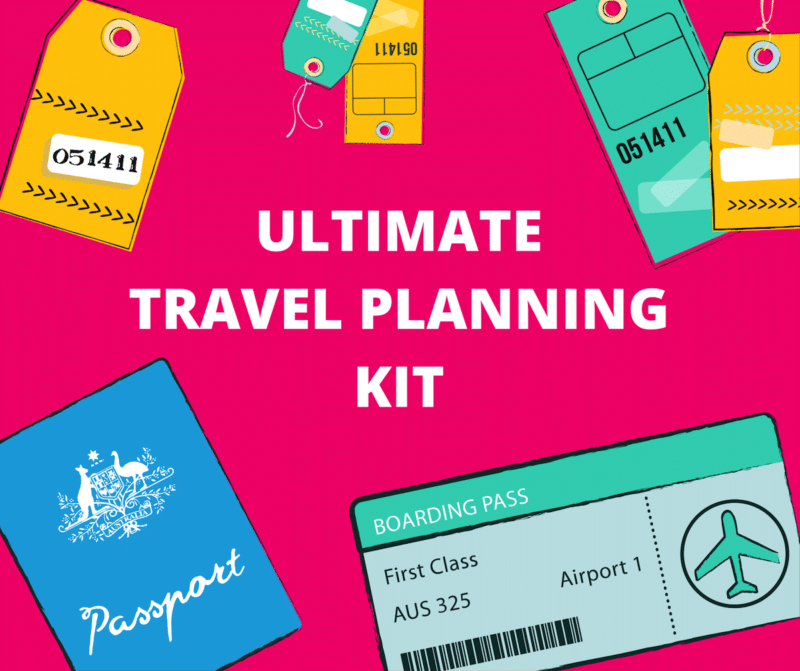
Some highlights of the kit include:
- Free “Where Should You Travel Next?” personality quiz
- Pre-plotted Google Maps for 45+ destinations
- Travel budget calculators to help you save money
- Printable travel journal with writing prompts
- Packing lists for different types of trips
Once you’ve grabbed your copy , keep reading to determine the best season to visit Mongolia based on your itinerary goals.
Why You Should Visit Mongolia
Mongolia is one of the most fascinating places I’ve ever visited. First of all, it’s hardly touched by tourism – with only about 66,900 tourists per year . This means you can still have a very authentic experience that isn’t watered down to appeal to the masses.
While there are places you go and see a lot, Mongolia is a place you will go and experience a lot – including many that will be unlike anything you’ve ever experienced before!
If interested, you can learn more about my Mongolia itinerary here. It highlights some of the best places to visit in Mongolia , like the Gobi Desert, the Altai Mountains, and Hustai National Park.
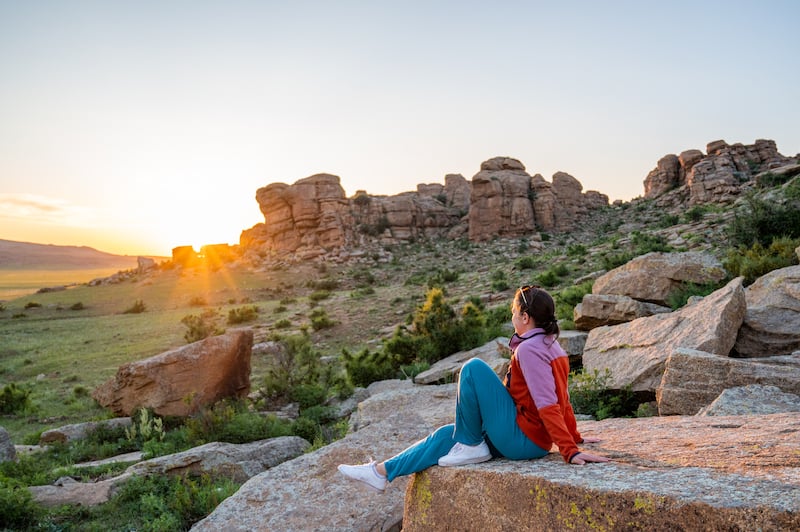
Now let’s analyze the best time to visit Mongolia based on the season.
Visiting Mongolia during peak season
The best time to visit Mongolia could vary depending on your preferred activities and preferences. Mongolia has several distinct seasons, each offering a unique experience.
However, the peak tourist season in Mongolia is from late June to early September, aligning with the short but splendid summer. During this period, temperatures hover between 18°C to 25°C (64°F to 77°F), allowing comfortable conditions for outdoor adventures like trekking, horseback riding, and camping – all excellent experiences that Mongolia is best known for.
During the summer, Mongolia’s expansive grasslands also burst with life, adorned with vibrant wildflowers and thriving wildlife, making it a photographer’s dream!
Of the summer months, July and August are particularly popular as the best time to visit Mongolia because the Naadam Festival takes place, an emblematic event showcasing Mongolian sports and cultural events.
Note that due to the country’s continental climate evenings can still be cool, so pack layers.
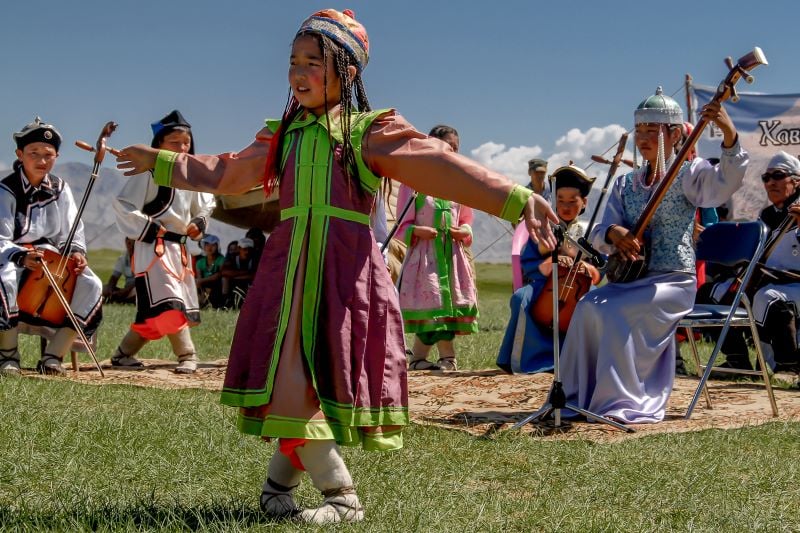
Visiting Mongolia during should season
The shoulder seasons of spring (April and May) and early fall (September) are also good months to visit, though Mongolia’s weather can be more unpredictable during this time.
Spring brings renewal, with lush landscapes and temperatures gradually climbing.
On the other hand, fall tinges the surroundings with golden hues, while the clear skies make it an excellent time for photography.
Mongolian winters (October to March) are harsh and require extra preparation, with temperatures plummeting well below freezing. Many tourist facilities may also be closed during this time. However, the vast white landscape and the subzero temperatures make for an exciting adventure in itself!
Worst Time To Visit Mongolia
While this is subjective, many agree that the worst time to visit Mongolia is during the harsh winter months from October to March.
Temperatures plummet to extreme lows, often reaching -40°C (-40°F) or even lower in some areas. The country becomes a frozen expanse with heavy snowfall, making travel challenging and many regions inaccessible.
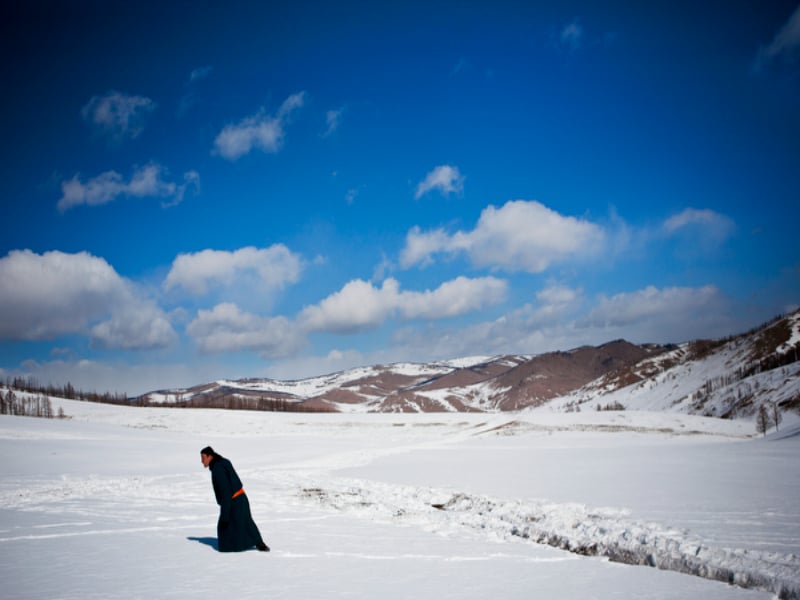
Outdoor activities are severely limited due to the intense cold, and many tourist facilities close.
The combination of freezing temperatures, icy conditions, and reduced infrastructure can make for an uncomfortable travel experience. Additionally, the short daylight hours further limit exploration possibilities.
While Mongolia’s winter landscape might have a unique beauty, it’s best suited for those well-prepared for extreme cold and seeking specific winter experiences like the Khövsgöl Ice Festival or winter wildlife photography.
Best Time To Visit For Festivals In Mongolia
The best time to visit Mongolia for festivals is during the summer months of July through September.
This period not only aligns with the Naadam Festival – Mongolia’s most significant event showcasing traditional sports like wrestling, horse racing, and archery – but also a number of other festivals.
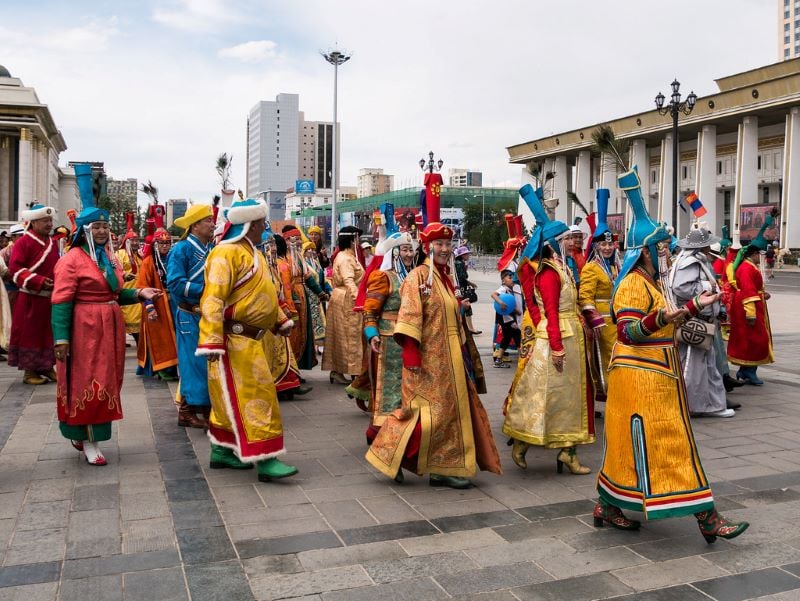
The Golden Eagle Festival celebrates the ancient art of falconry practiced by Kazakh nomads in the Altai Mountain .
Additionally, the Yak Festival, the Yohor Folk Art Festival, and the Tsaatan or Reindeer Festival all happen during summer, making these months the best time to go to Mongolia for festivals.
Cheapest Time To Visit Mongolia
The best time to visit Mongolia on a budget is during the shoulder seasons of spring (April to early June) and fall (September to October).
During these periods, tourist numbers are lower, leading to more affordable accommodations and reduced prices for tours and activities.
Mongolia’s weather is generally pleasant in these months, with mild temperatures and clear skies, making it suitable for outdoor exploration, photography, and cultural experiences.

While the summer months offer the best of Mongolia’s weather, they also tend to be more expensive due to higher demand.
Conversely, the harsh winter months should be avoided by budget travelers due to the extreme cold and limited accessibility.
By planning your trip during the shoulder seasons, you can enjoy the best of both worlds – cost savings and favorable weather – making it the best time to go to Mongolia without breaking the bank.
When To Visit Mongolia By Season
On that note, let’s go over each season in Mongolia. This way, you can make an informed decision on the best season for Mongolia based on what you’re hoping to get out of your trip.
Winter In Mongolia (December-March)
Weather in winter in mongolia.
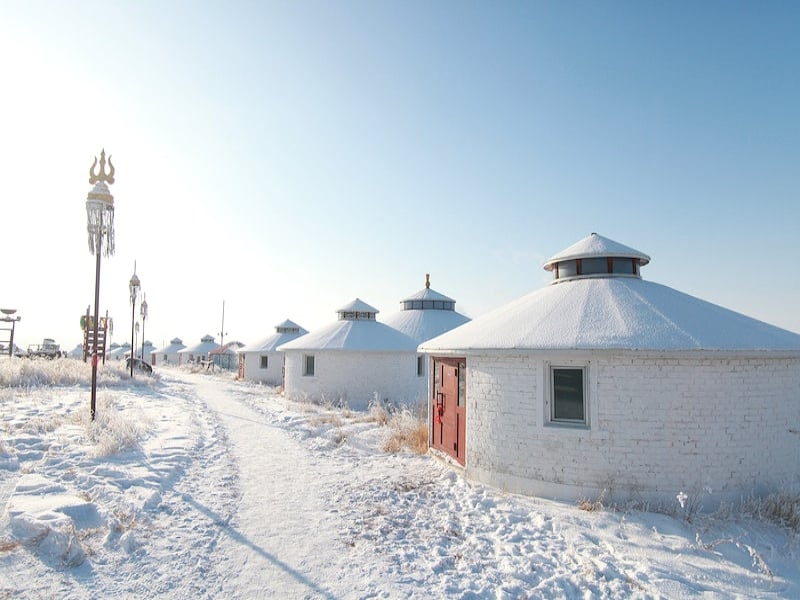
Frigid temperatures and heavy snowfall characterize winter in Mongolia. From early December to March, temperatures often plummet to -40°C (-40°F) or even lower in some regions.
Due to its high altitude, the country transforms into a frozen landscape, with icy conditions and reduced daylight hours.
Even though Mongolian winter is harsh and challenging, it can still offer an exciting and adventurous experience, making it the best time to visit Mongolia for a select few.
Pros of visiting Mongolia in winter
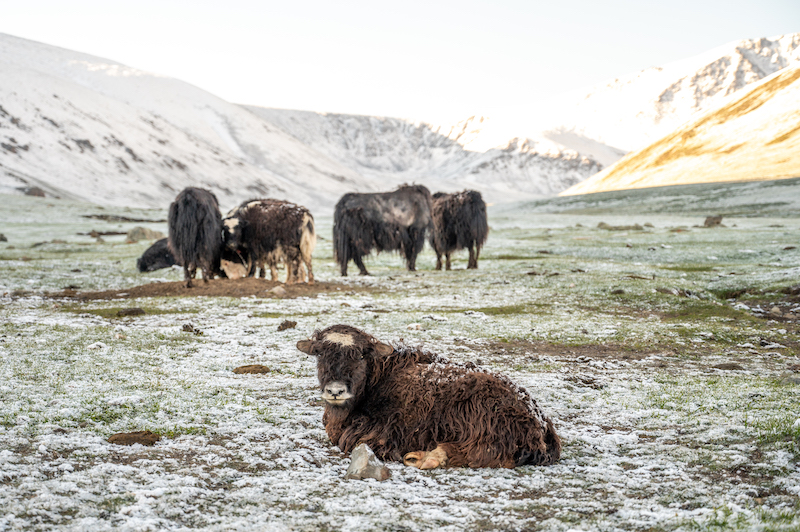
The snowy winter landscape of Mongolia can provide a unique backdrop for photography enthusiasts and outdoor adventure seekers can enjoy activities like dog sledding and ice fishing.
Travelers brave enough to visit Mongolia during this time can also experience unique winter festivals, like the Khovsgol Ice Festival and the Ulanbataar Winter Festival.
Fewer tourists also mean a quieter trip and a unique opportunity to experience the resilience of nomadic life.
Cons of visiting Mongolia in winter
Visiting Mongolia in winter comes with challenges. The extremely low temperatures can be unbearable for many travelers, requiring specialized clothing and gear.
Snow and icy conditions hinder accessibility to remote areas. Many accommodations and facilities also shut down due to the offseason, limiting your options.
The short daylight hours mean less time to explore outdoor activities, and the unpredictable, harsh weather can disrupt travel plans.
While the winter landscape is captivating, this season is best suited for those well-prepared for severe cold and seeking unique experiences.
Things to do in Mongolia in winter
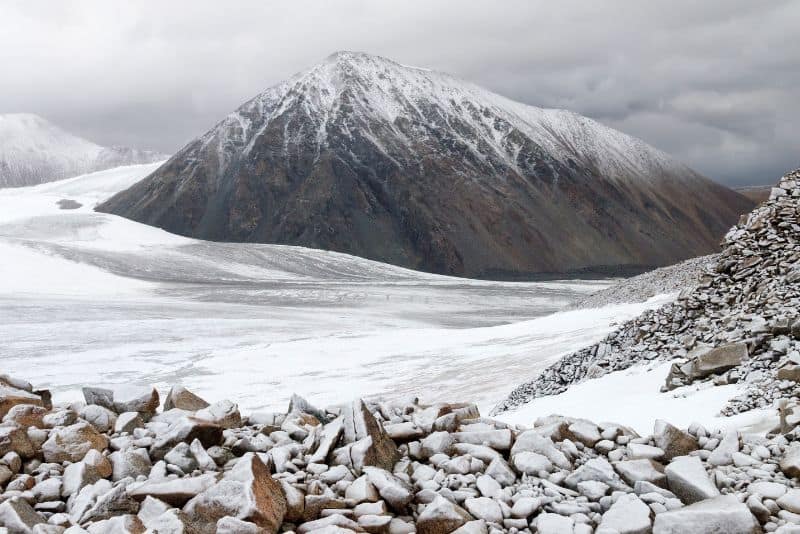
In winter, there are unique things to do in Mongolia for the adventurous. You can experience winter festivals like the Khovsgol Ice Festival and the Ulanbataar Winter Festival.
Sports like ice fishing, dog sledding, skiing, snowboarding, and ice wall climbing are also seasonal options.
For photographers, the snow-blanketed steppes, Gobi Desert, and Altai Mountains can be pure heaven.
While the cold is intense, these distinctive winter experiences provide a rare glimpse into Mongolia’s character and traditions, making it the best time of the year to visit Mongolia for intrepid travelers.
Spring in Mongolia (March-June)
Weather in spring in mongolia.
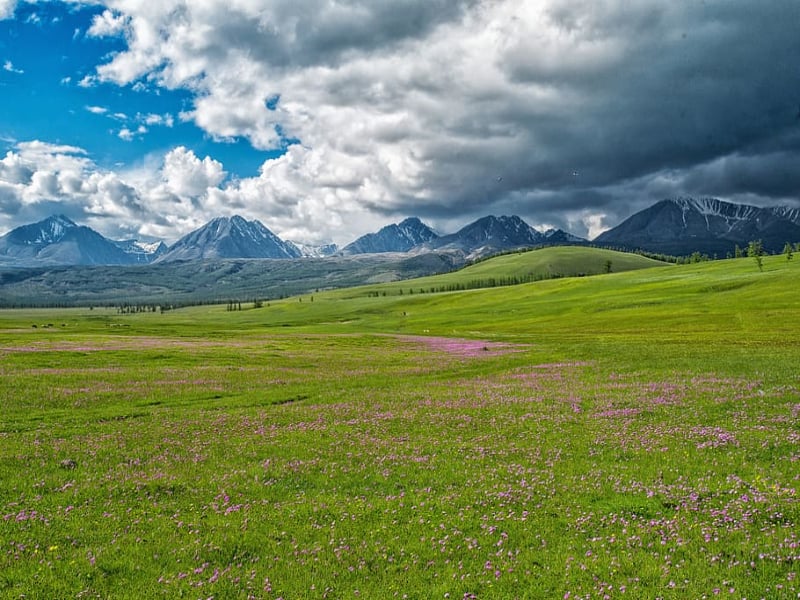
Spring in Mongolia, from late March to early June, brings a gradual transition from winter’s harshness to milder conditions.
Temperatures start to rise, ranging from 5°C to 15°C (41°F to 59°F), thawing the frozen landscapes. The season witnesses sporadic rainfall and occasional dust storms, with landscapes turning lush and vibrant.
Pros of visiting Mongolia in spring
Milder spring temperatures create comfortable conditions for outdoor activities like trekking and horseback riding, and it’s an excellent time for birdwatching as migratory species return.
Additionally, spring is shoulder season, meaning fewer tourists and more authentic encounters with local culture.
While Mongolia’s weather can be unpredictable, the beauty of spring’s awakening nature and the opportunities for adventure and cultural immersion – with the nomadic herders begin moving their livestock to summer pastures – make it worth it.
Cons of visiting Mongolia in spring
Visiting Mongolia in spring has some drawbacks – like unpredictable weather that can mak packing and planning challenging.
The thawing landscapes might also result in muddy or impassable roads, restricting travel to certain areas.
Some tourist facilities might still be gearing up for the peak season and could be under renovation or unavailable.
Additionally, while birdwatching is a highlight, wildlife viewing in general might be less rewarding compared to summer.
Things to do in Mongolia in spring
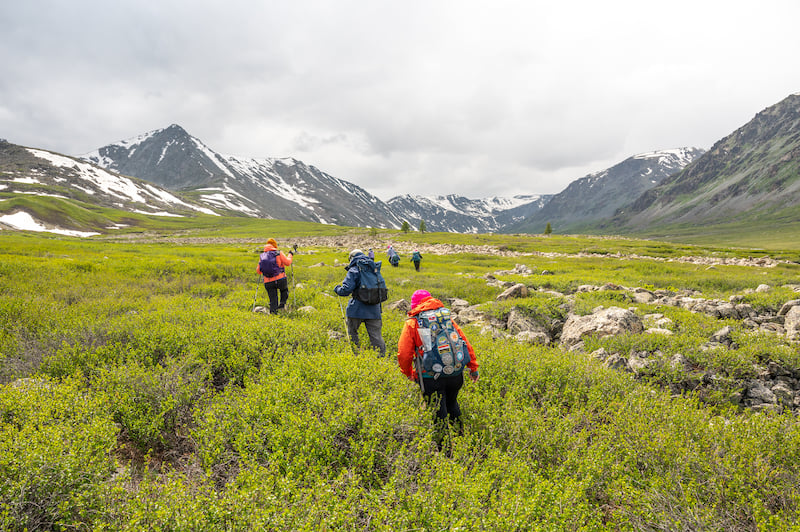
Spring offers an array of things to do in Mongolia. The best way to embrace the awakening landscapes is horseback riding across the now lush steppes and valleys.
This season also gives you a chance to engage in nomadic life, trekking with herders to migrate livestock to summer pastures.
Birdwatching enthusiasts can revel in the return of migratory species to scenic wetlands.
And the spring festivals of Mongolia like the Thousand Camel Festival and Nauryz are worth experiencing too!
Summer in Mongolia (June-September)
Weather in summer in mongolia.
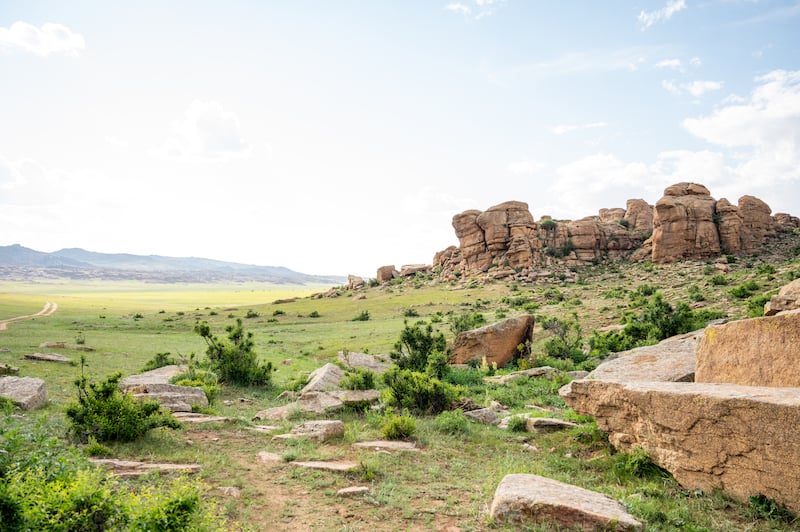
Summer in Mongolia, from late June to early September, is characterized by warm and pleasant weather and is the best time to visit Mongolia.
Daytime temperatures range from 18°C to 25°C (64°F to 77°F). The vast steppes and landscapes flourish with greenery and wildflowers, coupled with extended daylight hours. While rain is infrequent, occasional thunderstorms can occur.
Pros of visiting Mongolia in summer
Visiting Mongolia in summer offers a wealth of advantages. The warm and comfortable temperatures are perfect for outdoor activities like hiking, horseback riding, and camping.
Additionally, the landscapes transform into vibrant green expanses, providing stunning views for nature enthusiasts and photographers.
Longer daylight hours mean more time to explore the diverse geography, from the Gobi Desert to the rolling steppes.
Cons of visiting Mongolia in summer
While summer is one of the best seasons to visit Mongolia, a few downsides are worth noting. Warmer temperatures attract more tourists, meaning prices for tours and accommodations might be higher due to increased demand. You may also need to book in advance.
Despite these minor drawbacks, the advantages of experiencing Mongolia’s lush landscapes, pleasant weather, and cultural festivities often outweigh the cons, making summer an appealing time to visit.
Things to do in Mongolia in summer
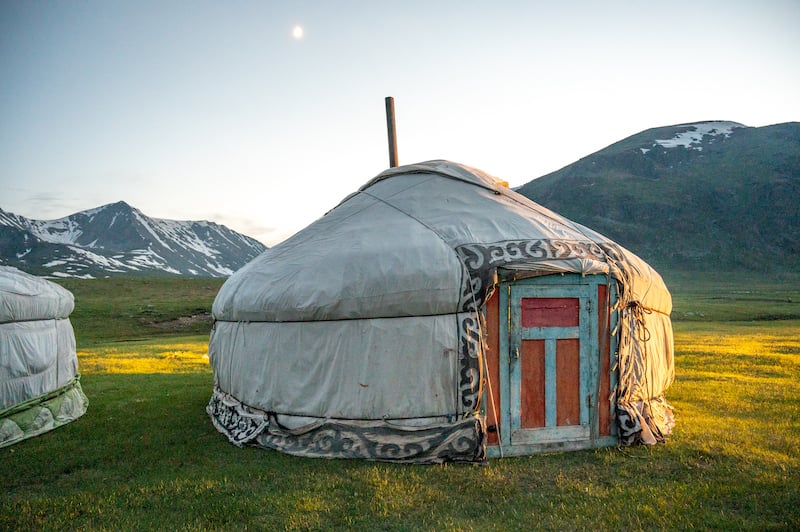
Exploring vast steppes on horseback or trekking the Altai Mountains are just a few popular Mongolia summer activities.
This is also a great time to take advantage of the extended daylight hours and then camp under starry skies.
The Naadam Festival in July is the highlight of the summer, celebrating Mongolian culture through traditional sports and festivities.
Lastly, experiencing authentic nomadic life by staying in traditional gers, photographing Mongolia’s stunning landscapes, and wildlife spotting in the country’s national parks are all great things to do in Mongolia in summer.
Fall in Mongolia (September-December)
Weather in fall in mongolia.
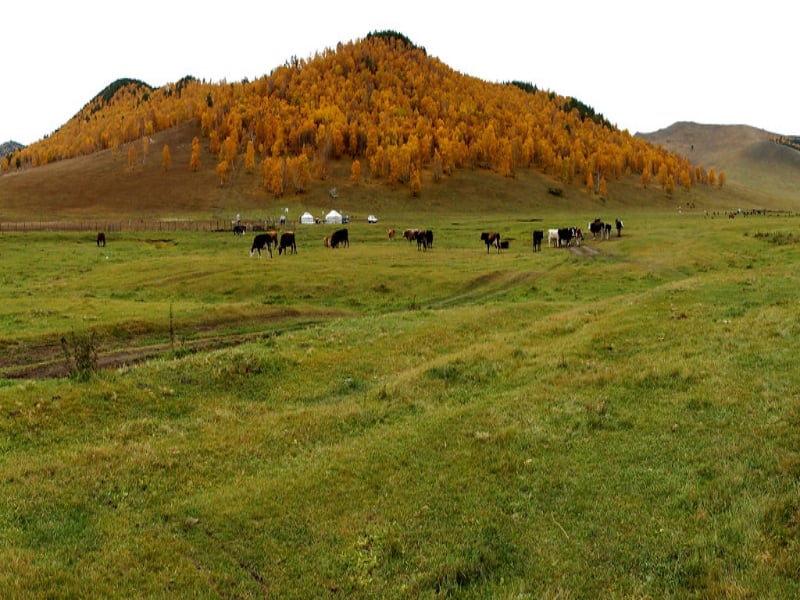
Fall in Mongolia, from September to early December, ushers in cooler temperatures and a dramatic transformation of landscapes.
Daytime temperatures range from 5°C to 15°C (41°F to 59°F), while the trees and grasslands transition into hues of gold and red. The skies also tend to be clear during these months, providing excellent visibility for outdoor activities.
Pros of visiting Mongolia in fall
Visiting Mongolia in the fall offers a host of advantages.
The comfortable temperatures create an ideal climate for outdoor activities like hiking and sightseeing, while landscapes transform into a mesmerizing tapestry of golden and red hues.
Fall is also a prime time for cultural experiences – and with fewer tourists compared to summer for a more authentic encounter with Mongolia’s natural beauty and heritage.
Cons of visiting Mongolia in fall
It is worth noting that as the season transitions to cooler temperatures, the nights can be chilly, requiring warmer clothing. This could translate to heavier luggage due to packing separately for day and night times.
Some tourist facilities might also close or have reduced services in preparation for the offseason.
The changing weather can be unpredictable too, making packing and planning a bit more challenging.
Things to do in Mongolia in fall
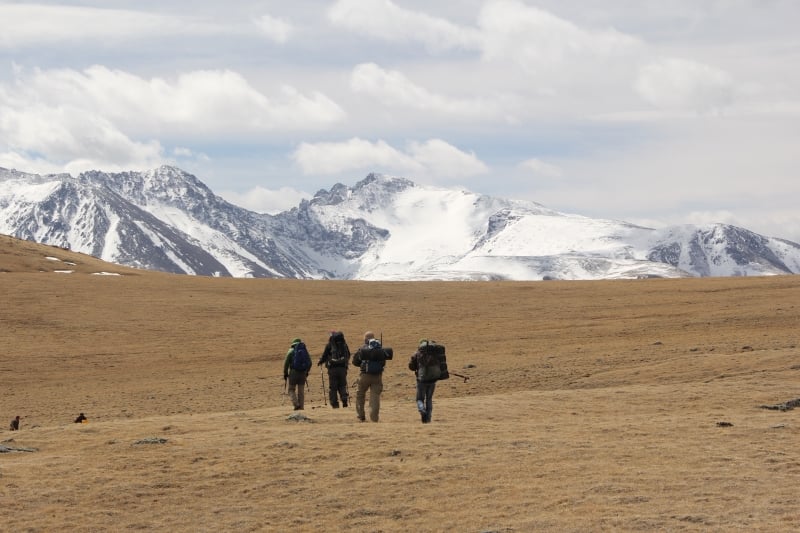
During fall, comfortable temperatures and stunning autumn foliage make for excellent outdoor explorations like trekking, horseback riding, and photography.
October is the best month to visit Mongolia for the fall foliage. Moreover, Mongolian festivals like the Golden Eagle Festival in September let you engage in cultural traditions with fewer tourists around.
Best Tours In Mongolia
While traveling Mongolia, it’s recommended to book a few tours with a knowledgeable local guid. This can help you truly learn about the place you’re visiting and immerse yourself in the culture without having to worry about transportation.
A few top-rated Mongolia tours, each departing from Ulaanbaatar, include:
Visiting Mongolia FAQ
Q) when should i travel to mongolia.
The best time to travel to Mongolia is during the summer months of June to August. This period offers comfortable temperatures, vibrant festivals, and access to rural areas on your Mongolia visit. However, be prepared for occasional rainfall and fluctuating temperatures in some regions.
Q) When is the best time to visit Ulaanbaatar?
The ideal time to visit Ulaanbaatar, Mongolia’s capital, is during the late spring to early autumn, from May to September. These months provide milder temperatures and more comfortable conditions for exploring the city’s cultural attractions and enjoying outdoor activities on your Mongolia visit. Winters are extremely cold, with temperatures dropping significantly.
Q) When is the best time to travel to Mongolia’s Gobi Desert?
The Gobi Desert is best explored in the late spring or early autumn, from May to September. During these months, temperatures are moderate, making it suitable for desert adventures. Avoid the extreme summer and winter temperatures, as they can be too harsh for comfortable travel.
Q) When is the best time to travel to Mongolia’s Altai Mountains?
Plan your trip to the Altai Mountains between June and September for warm weather, clear skies, and access to highland trails and stunning landscapes. Winter brings severe cold and heavy snow, while early summer might still have lingering snow at higher elevations.
Q) When is the best time to visit Inner Mongolia?
The optimal time to visit Inner Mongolia is during its pleasant shoulder seasons, from May to June and September to October. These months offer comfortable temperatures and vibrant grasslands. Summers can be hot, while winters are bitterly cold.
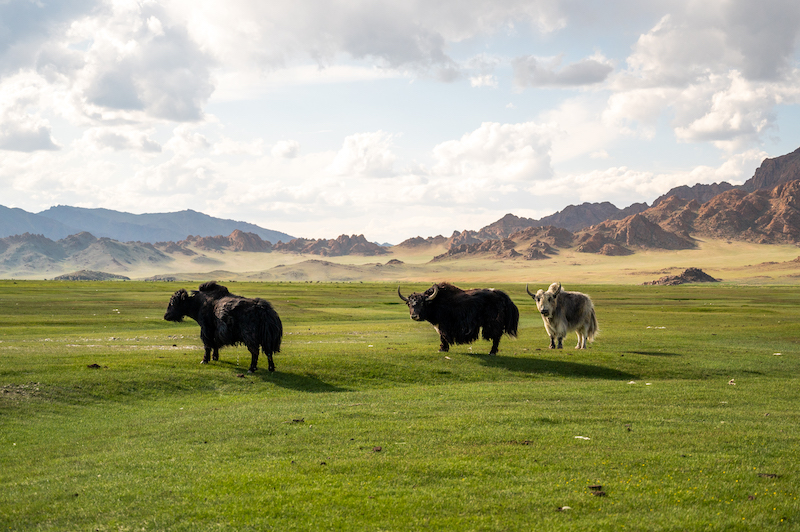
Q) What is Mongolia’s time zone?
Mongolia operates on a single time zone, which is known as “Ulaanbaatar Time” (ULAT). This time zone is UTC+8, and it remains consistent throughout the year without observing daylight saving time changes.
Q) How many days are enough for Mongolia?
Spending at least 10 to 14 days in Mongolia is recommended. This duration allows exploration of key attractions like the Gobi Desert, Altai Mountains, and nomadic lifestyle. However, the vastness of the country warrants more time traveling in Mongolia for a deeper immersion into its diverse landscapes and traditions.
Q) Are Mongolians friendly to tourists?
Yes, Mongolians are generally known for their hospitality and friendliness towards tourists, which is one of the biggest reasons why Mongolian tourism flourishes. Respect for local customs and traditions will enhance your interactions and make your experience even more enjoyable.
Q) Is Mongolia cheap or expensive?
Mongolia tourism is often considered to be moderately affordable for travelers. While prices can vary based on your preferences and travel style, overall the cost of accommodation, food, transportation, and activities tends to be lower than in many Western countries. However, certain remote areas might have limited amenities and higher costs due to logistical challenges.
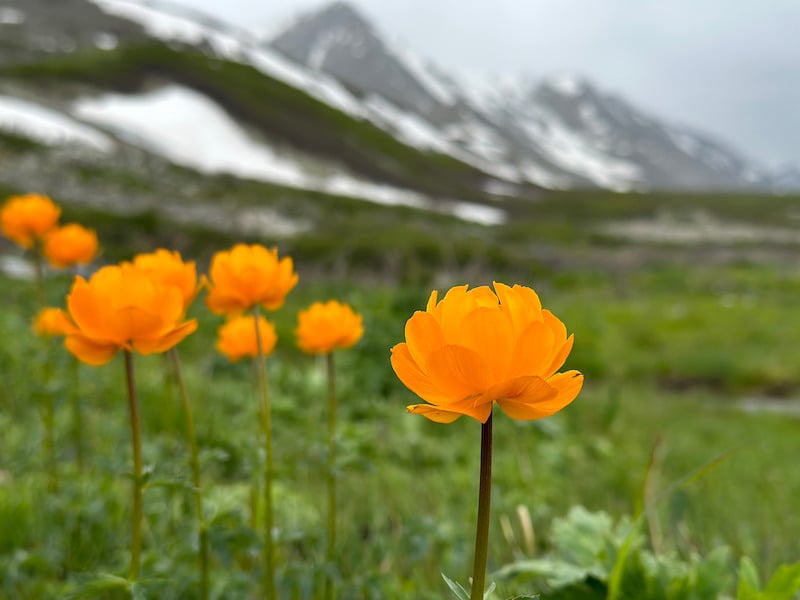
Mongolia Travel Insurance
No matter when you visit Mongolia, it’s wise to get travel insurance.
One of the best travel medical insurance for travelers is SafetyWing as they’ve got a large network and offer both short-term and long-term coverage — including coverage if you’re traveling for months as well as limited coverage in your home country.
Additionally, SafetyWing is budget-friendly and offers $250,000 worth of coverage with just one low overall deductible of $250.
Click here to price out travel insurance for your trip in just a few clicks .
Best Time To Visit Mongolia: Final Thoughts
The best time to go to Mongolia ultimately depends on what you’re hoping to get out of your travel experience.
Along with considering the weather in Mongolia, think about your desired activities and experiences. Additionally, you might contemplate traveling during Mongolia’s shoulder season to encounter fewer tourists and save some money.
That being said, no matter when you visit Mongolia, you’re sure to have an incredible and memorable experience!
What would you add to this guide to the best time to visit Mongolia?
Enjoyed this guide on the best time to travel Mongolia ? Pin it for later!
Related posts:

Hi, I’m Jessie on a journey!
I'm a conscious solo traveler on a mission to take you beyond the guidebook to inspire you to live your best life through travel. Come join me!
Want to live your best life through travel?
Subscribe for FREE access to my library of fun blogging worksheets and learn how to get paid to travel more!

Turn Your Travel Blog Into A Profitable Business
Subscribe to my email list to snag instant access to my library of workbooks, checklists, tutorials and other resources to help you earn more money -- and have more fun -- blogging. Oh, and it's totally FREE! :) // Privacy Policy .
Check your inbox for your welcome email + resource library password!
Leave a Comment Cancel Reply
You are using an outdated browser. Please upgrade your browser to improve your experience.
- Find your trip
- Be inspired
- Mongolia Guide
- You haven't added any tours to your wishlist.

Traveling in Mongolian winter
- Mongolia coronavirus & travel restrictions update
- Trekking in Mongolia
- Living with Mongolian Eagle Hunters
- Buddhism In Mongolia
- Mongol Naadam
- 10 facts about Mongolian Gobi Desert
- 7 adventure travel experiences in Mongolia
- Rare animals in the Gobi Desert
- Tourist attractions in the Gobi Desert
- Mongolian Horse Culture & Horsemanship
- 10 reasons to travel to Mongolia
- STATE PALACE - Intimidating or Inspiring?
- Shamanism in Mongolia
- The spiritual side of Mongolia
- Horseback riding in Mongolia
- 8 things to do while staying with nomadic family
- Best of Mongolia
- Trans-Siberian Railway: How a railway reached Mongolia
- Mongolian Family System
- The Die-Hard Nomads
- How Mongolia celebrates New Year (Tsagaan Sar)
- Mongolian Ger: Felt-dwelling of nomads
- What is Mongolian shamanic ceremony like?
- Mongolian Nomadic Lifestyle - Your Questions Answered
- Przewalski's horses: From extinction to reintroduction
- Snow Leopard: Protecting the Mountain Ghosts in Mongolia
- My nature land
Mongolian winter is freezing cold! People might say there are no fun outdoor activities until summer comes. However, if well prepared, Mongolian winter can bring the most incredible and unique experience.

Mongolia is located on the high ranges of Central Asia, isolated from the humid air of Atlantic and Pacific, which creates sharply continental climate. It is characterized by sunny days even in winter, dry air, low precipitation and sharp daily temperature changes. Winter nights can drop to −40 °C in the northern mountains, while summer days can reach 40 °C in the Gobi Desert.

But don't let the cold stand in your way! The winter months, from December to February, are an exceptionally beautiful time to see endless white steppes and Siberian borderlands. Glittering snow, clear blue sky, frozen rivers and lakes are the image of Mongolian winter. Even though it doesn’t snow much in Mongolia, snow that fall sticks and stays almost until May as the temperature never increases above 0°C.

Without a doubt, winter is the season that shapes the extraordinary Mongolian culture and characteristics . No matter how freezing cold it is outside, every Mongolian continues their daily life. Children go to school from Monday to Friday. Nomadic herders continue looking after their livestock. Winter trip in Mongolia is a remarkable experience – it will show you how good Mongolians are at adaptation.

Highlights of winter trips include frozen Lake Huvsgul (bring your skates!), the Kazakh eagle hunters, and the lambing season in the Gobi. The Ice Festival on northern Lake Huvsgul, living with the Kazakhs in the west and the Thousand Camels Festival in the Gobi Desert are spectacular journeys into winter landscapes that few foreign visitors ever get to see and experience. Also, winter trips offer a chance to participate in the celebration of Tsagaan Sar (Lunar New Year) . Because these events are locally organized and not popular tourist attractions, they are intimate and fun. A true cultural adventure in every sense.

Lastly, Mongolia in winter is a very different country from Mongolia in summer. It offers unique beauty to the scenery, however, winter tourism in Mongolia is not as developed as it’s in summer. Almost all tourism related lodging facilities in countryside stop its operations due to a small number of tourists and running cost. Therefore, trips in winter are heavily dependent on local families and their gers/houses.
MONGOLIA WINTER TOURS
People might say there are no fun outdoor activities until summer comes. However, if well prepared, Mongolian winter can bring the most incredible and unique experience.
Mongolia Private Tours & Travels
designed to put you in center & customizable to your needs!
- Mongolia Weather
- Travel Tips
- Famous Tourist Attractions
- Things to Do
- Transportation
- Facts about Mongolia
- Mongolia Food
- Shopping & Souvenirs
- Travel Safety
- 5 Mongolia Festivals
Top 7 Things to Do in Mongolia in the Winter
2. visit the camel festival, 3. ice skating, 4. visit the ice festival, 5. dog sledging, 7. search for snow leopard.
When to visit in Mongolia
Mongolia weather.
- Mongolia in November
- Mongolia in December
- Mongolia in January
- Mongolia in February
VISITING MONGOLIA IN WINTER (NOVEMBER TO FEBRUARY) Mongolian winter (November to February) is known as cold with temperatures typically ranging from -8°C to – 30°C degrees, with exceptional possible peaks as low as -40°C and high as 1°C as observed in previous years. But the dry climate makes it feel not extremely cold even at its – 40° c. Winter still can be magical for those who are well-prepared adventurers. Of course; the tour price is lower than in other seasons. Ski resorts, dog sledding, and horse riding are available. Mongolian famous national holiday Tsagaan Sar takes place at the end of January or in February depending on the lunar calendar annually. Daylight is short between 7:30 am to 6 pm.
WHAT TO DO IN THE WINTER OF MONGOLIA
Things to do in winter. Here are some activities winter offers in Mongolia.
- Dog sledding
- Horse riding
- Visit nomad families and see newborn animals
- Visit the Ice Festival
- Explore the Terelj National Park.
- Climb the Genghis Khan Statue Complex.
- Visit the historical Kharkhorin village
- See truly wild horse Takhi (Prezevalski)
- Visit Eagle Hunters in Western Mongolia
EVENTS & FESTIVALS IN WINTER
- Horse festivaL
- Ice festival
- Lunar New Year

- Car rental & airport transfer service
- Terms & Condition
- How to book a tour?
- How to pay?
- Skip to primary navigation
- Skip to content
- Skip to primary sidebar
- Skip to footer
Heart My Backpack uses affiliate links, which means that if you make a purchase through my links, I may earn an affiliate commission.
Mongolia in Winter Is Actually Pretty Crazy
February 19, 2015 by Silvia 58 Comments
Would you take a Mongolia holiday in the winter? This is what it’s like!
The Mongolian countryside is seriously beautiful. That’s my big revelation from two weeks of travel in Mongolia.
Okay I know that won’t be big news to anyone, but I just wanted to let you guys know, if you were wondering, that yes, Mongolia is really beautiful and totally lives up to the hype. And Mongolia in winter? Still totally magical.
Okay, Ulaabaatar is very smoggy in the winter, but taking a holiday out of the city was a quite literal breath of fresh air, and so, so beautiful. Plus it was totally empty!
Mongolia holidays – in winter
Winter isn’t a great time for tourism in Mongolia, and for good reason. It’s incredibly cold, roads are blocked by snow, and camping would be a frozen nightmare. I was sad that we couldn’t simply wander off for a week with a tent and river for a map, or buy horses and journey across the country for a month before reselling them at the Kazakh border, but we made due.
Actually, in many respects winter might be the best time to travel to Mongolia!
In Central Asia I met a lot of travelers who had traveled through Mongolia, and many of them complained that the country was expensive and surprisingly crowded with tourists on holidays. However we didn’t see many tourists there in February. I know, I was shocked too.
Alicia and Bryce only had a week in Mongolia, so we didn’t have time to venture far outside of Ulaanbaatar. Our main objective was – can you guess? – to stay in a ger!
At first I thought that we’d have to take an expensive tour to get out of the city, as Mongolia isn’t big on roads or public transportation so usually people take special Mongolia trekking tours, but eventually we tracked down the number of Bert, a Dutch expat running a small yurt camp with his wife in nearby Gorkhi-Terelj National Park .
We took a local bus to Nalaikh and then caught a minivan to Terelj, where Bert met us and brought us to our new home for the next few nights!
A Mongolian ger: the coziest winter holiday accommodation ever? I think so.
We each paid 30 euros/night at Bert’s, which included food and drinks. So like, it was much cheaper than doing a tour.
It was interesting hearing an expat’s perspective on life in Mongolia, and it didn’t hurt that Bert makes his own cheese and cured meats! Seriously, the meals we had at Bert’s were so, so delicious. Between stuffing ourselves with yummy Mongolian food at mealtimes, hiking through the surrounding hills and frozen river during the day, and cozying together in our stove-heated ger at night, I’d say we had found a special version of paradise.
Well, except for that lingering cough from Ulaanbaatar , ugh.
The Mongolian cows were so furry!
Mongolia – not your typical winter holiday travel destination (but still magical!)
Even with the dry climate, there was a light dusting of snow which made the rolling Mongolian hills even more beautiful. They looked like they were made of folds of velvet!
I’ll admit that I had been a little skeptical of Mongolia after loving Central Asia so much. It’s hard not to compare Mongolia to Kyrgyzstan , especially the countryside, both with their nomadic locals and lots of opportunities for yurt stays and horse treks. ( Kazakhstan is probably even more similar, but I sadly only had time to visit cities there.)
I spent just under two weeks in Mongolia, whereas I traveled through Kyrgyzstan for a month, so of course I have fonder feelings for Kyrgyzstan. Kyrgyzstan is obviously less touristy than Mongolia, and being able to communicate in Russian there was a huge plus for me.
But I was surprised at how different I found Mongolia to be! I mean, the two countries have distinct cultures and histories so this should have been obvious, but I had basically just lumped them together in my head as “places where people ride horses and live in yurts.” I know . So it turns out that Mongolia totally is worth a visit after all! Which I’m sure all of you guys already knew – I was just a tad late to the party, as usual.
Staying in a ger in Mongolia without a tour:
The bus from Ulaanbaatar to Nalaikh costs 900 MNT, and we caught it along Peace Avenue. The minibus to Terelj costs 1300 MNT.
We simply called Bert when we were in Ulaanbaatar to reserve a ger (you’d probably need to book further in advance in the summer). His number is: 99734710. We paid 30 euros/night for accommodation and food at Bert’s. Highly recommended!
In Ulaanbaatar we stayed at Sunpath Mongolia, which is centrally located and run by the nicest people I met in Mongolia. Sunpath was definitely the highlight of my time in Ulaanbaatar! Check current prices and availability for Sunpath Mongolia
The best Mongolia tours:
And if you do want to see more of Mongolia, then your easiest option will be to book a Mongolia tour. There are a lot of Mongolia tour companies out there, however you do need to be a bit careful when choosing a Mongolia tour because some are less reliable than others.
If you want to be sure of high standards and professionalism, I’d recommend going with either G Adventures or Intrepid Travel, which are both well established in the region and have really fun itineraries ranging from 1 – 3 weeks.
Check the G Adventures Mongolia tour itineraries, prices and availability here
Check the Intrepid Travel Mongolia tour itineraries, prices and availability here
Related Posts

Reader Interactions
Get updates.
Subscribe to my newsletter for exclusive updates and stories from my world travels and life in Norway!
Nathan Anderson says
February 19, 2015 at 11:18 pm
Loving these pictures! I went to Mongolia in March, and even then the crowds were almost non-existent. If you can handle the temperature, it’s a great time to go 🙂 Glad you had a good experience… Mongolia is one of my favorite places.
I went through the Sunpath Guesthouse for my Gobi tour! They were super nice and very helpful… would definitely recommend them as well.
Thanks for bringing back the memories!
Silvia says
February 24, 2015 at 9:20 pm
That’s so crazy that you also used Sunpath – such a small world! I’m glad you also had a good experience in cold Mongolia; I agree that it’s a special time to go.
becky hutner says
February 19, 2015 at 11:42 pm
I LOVE YURTS! what is it about staying somewhere round & stove-heated that’s so delightful? i have to admit though, every time i see photos of monoglia, i can’t help but think it looks a bit…barren? on the brown side? is it the kind of beauty you really have to see in person? (so not a dig @ Your photos…)
February 24, 2015 at 9:21 pm
The area we were was really dry (and pretty close to the desert) so it was really barren and brown! I guess other parts of the country are more lush though? It wasn’t my favorite kind of landscape, but definitely something distinct!
Marie @ Marie Away says
February 20, 2015 at 12:47 am
This sounds amazing! I’ve always been so intrigued by Mongolia, and your photos are stunning! It sounds like an awesome experience to spend some time in the countryside during a cold Mongolian winter 🙂
February 24, 2015 at 9:22 pm
Cold Mongolian winter was surprisingly cozy 🙂
jennifer says
February 20, 2015 at 12:50 am
I want to sleep in a ger! Do you have anymore pictures of the inside? I want to seeeeeeee so bad!
Haha I didn’t really take many photos of the inside but just imagine a tent with thick woolen walls and some beds and a stove in the middle 🙂
Andrea @ GreenAndTurquoise says
February 19, 2015 at 8:52 pm
Great post! Mongolia has always fascinated me, both from a cultural and environmental point of view. Such a unique landscape! And I love your pictures, the hills really do look like they’re made of velvet 🙂
February 24, 2015 at 9:14 pm
It really is so unique!
February 20, 2015 at 3:42 am
I’ve read two of your posts today and they were food for the soul. I’m feeling particularly frustrated today with news of the world and a hateful comment someone wrote on my blog’s FB page in response to a post. There are too many haters in this world and then I read your post about an expat who owns a yurt and makes his own cheese and cures meat and I remembered how much good there is in this world – and that travel helps to hush the haters. I can’t say I have a burning desire to travel to Mongolia, but thank you for sharing your journey and brightening my day.
February 24, 2015 at 9:24 pm
Ugh I really don’t understand why people feel the need to write hateful comments on the Internet. It’s so unnecessary. But you’re right, hearing about Bert’s life in Mongolia did remind me how many amazing things people are doing in this world – definitely inspires me to chase after an interesting life.
Franca says
Wow, Mongolia really is different from any other country I went to. Do you know how difficult or easy it would be to travel there as vegan?
February 24, 2015 at 9:25 pm
Hmm most of the food I had was meat based, but there was also a lot of cabbage soups and salads and things, so I think it could be doable as a vegan! There wasn’t much dairy at all, so there you’d be fine!
Justine says
February 20, 2015 at 10:50 am
I’m so glad the countryside lived up to the hype. There’s nothing worse than hearing rave reviews about a place only to have it fall short of your built-up expectations. It looks beautiful there. And it sounds like you guys found a great host. I’m mean, seriously, he makes his own cheese?! That’s freaking awesome 🙂 Oh, and the fuzzy cows are so cute. I’ve never seen anything like that!
February 24, 2015 at 9:26 pm
The fuzzy cows were probably my favorite part of Mongolia, haha.
Lizzie says
February 20, 2015 at 9:20 pm
Mongolia intrigues me SO MUCH. I love your photos and your story about your time there has made me want to go even more (if that’s possible!).
February 24, 2015 at 9:27 pm
You definitely should add Mongolia to your list!
Rebekah says
February 20, 2015 at 9:32 pm
your pictures are amazing. I would really like to visit there at some point. Its too bad the capital was so smoggy- its always gives me a wicked bad cough too (Thanks China)
Ugh, smog, always ruining places (especially in Asia). But otherwise it was great!
Dariece says
February 21, 2015 at 3:31 am
Wow, stunning photos! Definitely cold in the winter, but still beautiful.
Thanks for the shout-out as well 🙂
February 24, 2015 at 9:28 pm
Thanks, Dariece! Reading about your experiences in Mongolia still makes me want to return in the summer someday, but the winter was also pretty special!
Vanessa @ The Travelling Colognian says
February 21, 2015 at 7:42 pm
These photos are beautiful, Silvia, and I bet, travelling through Mongolia in winter is amazing in spite of the cold. Great that you managed to do your stay in a yurt without a tour, I will definitely keep Bert in mind for a potential trip to Mongolia. I stayed in a yurt in the Tian Shan Mountains in Xinjiang Province in Northwest China in late October and I was the only guest there. It was already quite cold and there was snow, but the sky was clear and the views absolutely breathtaking. That’s the advantage of travelling off-season: on my whole journey from Beijing to Kashgar I met less than two hands full of western people and just a very few chinese tour groups.
February 24, 2015 at 9:31 pm
Oh wow, staying in a yurt in the Tian Shan mountains sounds like an amazing experience! And you know how much I love Kashgar 🙂
Victoria@ The British Berliner says
February 23, 2015 at 4:34 pm
I love your pictures and I would so like to do this. I want to visit Mongolia now as it’s increasingly becoming popular and yes, I’d probably have to go in the summer (school holidays and all that!) Would you know if Bert has a social media platform on FB or Twitter, as I don’t fancy turning up and all the yurt camps are booked out?
February 24, 2015 at 9:33 pm
Hmm I’m not sure if Bert has social media, but I sort of doubt it. I think your best bet would be to call/Skype him (I wrote his number in the post). I hope you do go!
Sabina // Sabina Meets World says
February 24, 2015 at 3:12 am
That’s awesome that you got to stay in ger! It looks like it was the perfect place to stay while exploring the surroundings. Also, I am in love with all your pictures. They’re incredible.
February 24, 2015 at 9:35 pm
The ger really was so perfect – and so cozy in the winter!
Chalsie says
February 24, 2015 at 7:14 pm
How interesting that you had a different experience from the people you met in central Asia! I love travelling in winter to most countries. Definitely an added bonus that winter is usually the off peak season.
Mongolia looks incredible! You’ll have to go back one day for some camping and hiking!
Chalsie | The Workshop Co. x
I’m really glad I went to Mongolia in off season, even if I did miss out on the camping.
February 25, 2015 at 9:14 pm
You just sold Mongolia in winter to me! ok, I might be a fan of traveling in off season but after spending a weekend in Lviv when it was -20C outside (but the weather was just the best) I rethink every journey in that time 😉 But here Mongolia looks and sounds easily doable in the winter time! And I so would love to visit! (did I already tell you I love how you go to all the destinations from my bucket list? ;))
February 27, 2015 at 7:12 pm
I’ve decided that all the cool people go to Mongolia in the winter 🙂 (And by cool I of course mean crazy)
August 3, 2016 at 1:47 am
I’m going this winter to mongolia and I’m concerned about the cold specially away from the city so I have to ask, did you need any special winter clothes? specially for your feet. I’m from South America and the coldest place I’ve been is Prague with -15° at is lowest so any advice about that will be very helpful!!
Is really cool to know that there’s other people crazy enough to do this in winter just like me 🙂
August 3, 2016 at 10:05 pm
I had a couple of very thick wool sweaters and a very warm scarf and hat! It’s a bit of a crazy experience, but a lovely adventure.
Steph of Big World Small Pockets says
September 18, 2015 at 6:05 am
Seriously stunning!
September 21, 2015 at 9:24 am
December 6, 2015 at 10:43 am
Thanks for writing this up! I’m planning to go into Ulaanbaatar from Hohhot next week – will definitely get in touch with Bert!
December 9, 2015 at 6:39 pm
You definitely have to get in touch with Bert! Have fun 🙂
Norman says
December 29, 2015 at 11:10 am
Hey Silvia,
loved this little artcile (also read your other blogs about central asia). I’ve been touring Russia in winter a lot an came to enjoy the country during that time. as you already pointed out – there is just half the crowd (or less). Also it almost feels like these parts of the world are better visited in winter. Like it was part of their soul.
My dad made me a very special christmas present: A 4 week trip to central asia. But I really can’t seem to decide between Mongolia and Kyrgyzstan. Been thinking about it for the past 5 days nonstop! Do ppl in Kyrgyzstan really speak plain standard Russian? Because that would obviously a major argument for going there.
What are your throught on which to pick? I hate crowds & love authentic culture.
cheers Norman 🙂
December 29, 2015 at 8:24 pm
What an amazing Christmas present! I would absolutely 100% choose Kyrgyzstan! It’s so less touristy than Mongolia, and the people are incredibly welcoming and nice. In fact, after talking to people in Beijing who had been both places my friends and I totally changed our trip and skipped Mongolia and headed to Kyrgyzstan instead (two nights before we were set to leave for Mongolia, ha). It was nice finally making it to Mongolia this year, but I’m so glad I went to Kyrgyzstan. And yes, their Russian is standard – it’s actually easier to understand than Russian in Russia, because it’s not their first language so they’re simplifying things. Good luck!
August 19, 2016 at 11:26 am
I am a 30 year old female traveler going to Ulaanbatar alone during the first week of October. Did Bert’s ger have running water while you were there? Do you share the yurt with other people? During the day, was it easy explore the surrounding area without booking a driver or riding an animal?
August 22, 2016 at 7:23 pm
Hmm I can’t remember about running water. We shared the yurt with our friends, but there was another traveler alone who had his own yurt. And we just explored everywhere on foot – there’s lots of hiking in the area!
August 27, 2016 at 4:43 am
I,m Dany, a white male, leaving in Beijing, China. I,m planning a trip to Mongolia this winter in late december. Anyone willing to join me, please write me. Cheers. Dany.
November 4, 2016 at 4:15 pm
Hi, Love your Post <3 Thank you for sharing your experience, could you tell me if you have any advice for the shoes? Which one did you get? was them light and easy to wear?
Thank you so much 🙂
Harriet says
December 1, 2016 at 2:38 pm
Hi! Really enjoyed your post. I a man currently on the road about to set off on the Transsiberian. Bert’s place sounds exactly what we’re looking for. I know it’s been a while but do you have any more info like an email? Is this number you have a landline or a mobile? Searched high and low for more info, but we really want to get in touch before we get to Ulaan Bataar as we don’t have much time there. Thank you! Harriet
December 14, 2016 at 2:46 pm
Ugh sorry, all I could find was this number as well! We called I think the day before we went to his place (so when we were already in UB) and it was fine – I doubt it fills up. Good luck, and have fun!
ceyhun says
January 22, 2017 at 10:18 am
The pictures are amazing
January 24, 2017 at 9:30 am
It’s an amazing place!
David Nicholls says
August 14, 2017 at 3:37 pm
Hi, Looks amazing. My girlfriend and I are heading there in November. Burt’s looks like a greta idea. Did you just ring him when you got to UB? We were going to try and pre-book if there’s any other way of getting him. Also, sounds like any more than a couple of days in UB will be enough with the fog. Great read, thanks for the info.
August 14, 2017 at 3:39 pm
And I just read the comment where you said you didn’t have an email. Thanks 🙂
Hannah says
January 1, 2018 at 2:41 pm
Hey! Does Bert have an email address? or another way of contacting him? We are hoping to visit Mongolia in 2018 or 19 and this sounds amazing!
January 3, 2018 at 6:09 pm
I’m afraid I only have the phone number!
Chimgee says
September 8, 2018 at 1:21 pm
I just called Bert on 9973 4710, and he answered a call. You too May call him too ,976 -99734710
January 7, 2018 at 5:46 pm
Hello! Silvia. Thank You for your inspiring Mongolia blog. One question, it’s fine for a solo traveler to explore the Khuvsgul lake? I was trying not to take the tour. I wish to contact to Bert too (his is popular now, I guess). Just sound crazy to call him from Malaysia. I will be visiting in early March this year, I want to catch the Ice Fests 🙂 You should try Nepal, Annapurna Base Camp…I went last Feb, 2017. It was amazing, especially the humble folks. Cheers! huck
January 18, 2018 at 6:43 pm
I went to Mongolia last July and the temperature hit 98°F in Ulan Bator! It was very dry so not bad. Went to Terelj as well. Even in July, there weren’t many tourists (white European ones, anyway) anywhere.
September 8, 2018 at 1:33 pm
Mr Bert still on this number, I just now called him. You.guys may call him,good luck,
December 27, 2018 at 11:20 pm
Do you maybe have an emailadress or website of Bert?
Steven George says
April 24, 2019 at 2:09 pm
Beautiful images that attracts me to visit this country… could you suggest when will be I can visit here…
Leave a Reply Cancel reply
Your email address will not be published. Required fields are marked *
Once a full-time nomad, I'm now trying to find a balance between continuing to explore off the beaten path places around the world while also building a home in Norway. Want to know more? Head to my About page !
COME AND GET IT!
Subscribe to my newsletter for exclusive updates and stories from my world travels and life in Norway:
- 86-19138970032 (GMT+8 18:00~09:00)

- Beijing Xian Tours
- Shanghai Beijing Tours
- Hong Kong Guilin Tours
- Hangzhou Suzhou Tours
- Kunming Lijiang Tours
- Shanghai Yangtze Cruise Tours
- Chengdu Tibet Tours
- More Short Stay Tours
- China Tours in January
- China Tours in February
- China Tours in March
- China Tours in April
- China Tours in May
- China Tours in June
- China Tours in July
- China Tours in August
- China Tours in September
- China Tours in October
- China Tours in November
- China Tours in December

- High Speed Trains
- China Yangtze Cruise Tour
- Photography
- Desert Adventure
- Ethnic Villages
- Biking Tours
- Kung Fu Tours
- Heritage Sites Exploration
- China Spring Tours
- China Summer Tours
- China Autumn Tours
- China Winter Tours
Notice! 2024 available cruise routes include 4~5 days Chongqing-Yichang(most classic) and 11~12 days Chongqing-Yichang-Shanghai(limited).

- Best-value Yangtze Cruises
- Top Family-friendly Cruise Ships
- Top 3 Luxury Yangtze River Cruises
- Yangtze River Highlights
- Yangtze River Cruise Routes
- Upstream or Downstream?
- Dining & Drinking
- Accommodations
- On-board Activities
- Yangtze Cruise Booking Steps

- Inner Mongolia

- Fanjingshan
- How to Plan Your First China Tour
- How to Plan Beijing Tour
- How to Plan Xian Tour
- How to Plan Shanghai Tour
- How to Plan Guilin Tour
- How to Plan Sichuan Tour
- How to Plan Family Tour
- 2024 China Travel Ideas
- Best Time to Visit China
- What to Pack for Your China Journey
- Make Payment in China
- Updated China Travel News
- Ultimate Chinese Visa Guide
- Chinese Visa Types
- Chinese Visa Requirements
- Do I Need a Visa for China
- Chinese Visa Application
- Chinese Visa Exemptions
- 144-hour Visa Free
- Shenzhen Visa on Arrival
- Hainan 30-day Visa Free
- Embassies & Consulates
- Invitation Letter
- Useful Visa FAQs & Tips
- Entry Regulations
- Baggage Allowance
- Customs Declaration
- Exit Regulation
- How to Book Train Tickets
- How to Collect Train Tickets
- How to Cancel & Alter Train Tickets
- How to Read Train Tickets
- China High Speed Train Types
- Seats Class & How to Choose
- Friendly Facilities on the Train
- The Train Station Departure Process
- Available Food and Drinks on the Train
- Western Toilets on the Train
- Luggage Racks & Baggage Allowance
- Beijing Train Stations
- Shanghai Train Stations
- Guilin Train Stations
- Xian Train Stations
- Chengdu Train Stations
- Hong Kong West Kowloon Railway Station
- Beijing - Xian
- Beijing - Shanghai
- Guangzhou - Shanghai
- Shenzhen - Shanghai
- Chengdu - Xian
- Shanghai - Hangzhou
- Shanghai - Xian
- Chengdu - Chongqing
- Kunming - Lijiang
- Beijing Capital International
- Beijing Daxing International
- Shanghai Pudong International
- Shanghai Hongqiao International
- Guangzhou Baiyun International
- Hangzhou Xiaoshan International
- Chengdu Tianfu International
- Chengdu Shuangliu International
- Xian Xianyang International
- Shanghai - Beijing
- Hong Kong - Shanghai
- Guangzhou - Beijing
- Chengdu - Lhasa
- Shanghai - Guilin
- Shanghai - Sanya
- Travel in Spring Season
- Travel in Summer Season
- Travel in Autumn Season
- Travel in Winter Season
- Weather in January
- Weather in February
- Weather in March
- Weather in April
- Weather in May
- Weather in June
- Weather in July
- Weather in August
- Weather in September
- Weather in October
- Weather in November
- Weather in December
- Top 10 China Destinations
- Top 15 Things to Do
- China World Heritage Sites
- Top 10 Best Natural Beauties
- Top 10 Museums in China
- Top 10 Old Towns & Villages
- Five Great Mountains in China
- Top 10 Monasteries & Temples
- Top 10 Ski Resorts
- Top 10 Beautiful Lakes in China
- 7 Best Beaches in Sanya
- Top 6 Beautiful Waterfalls
- Panda Volunteering
- Having fun on Ice and Snow Festival
- About Us Who We Are Our Team Why Travel with Us Feedback & Reviews Travel Stories Travelers' Gallery Payment Guide Customer Support Contact Us
- Tour Experiences

Destinations
- Travel Guide
Inner Mongolia Winter, Visiting Inner Mongolia in November to March
Winter is another special and beautiful season to visit Inner Mongolia. The snowy white world is not a silent one, but a joyous wonderful playground for travelers to soak in its unique beautiful nature and entertainment culture. Those dense forests, geopark, ski resorts, grasslands and so on will be your home field for a winter trip to Inner Mongolia !
Inner Mongolia Weather in November to March
Inner Mongolia has a long winter, which usually starts in November and ends in February and even March based on different regions. Winter there is extremely cold, windy and dry, with quite a few rainfall and some snowfall. Thus, you can play greatly in the s now wonderland , especially those ski resorts with various sports on ice and snow and the primitive forests for trekking challenge and winter photography like rime. But, it is not suitable to visit the desert areas. Temperature usually drops below zero, so you need to dress very warmly . The average temperature is about -12°C ~ -7°C in Hohhot, Baotou and Ordos, -26°C ~ -25°C in Hulunbuir, and -3°C ~ -12°C in Ejina Banner, -6°C ~ 6°C in Chifeng, etc.
Check more about:
Hohhot Weather | Baotou Weather | Ordos Weather | Hulunbuir Weather | Ejina Weather | Badain Jaran Desert Weather | Chifeng Weather | Xilingol Weather
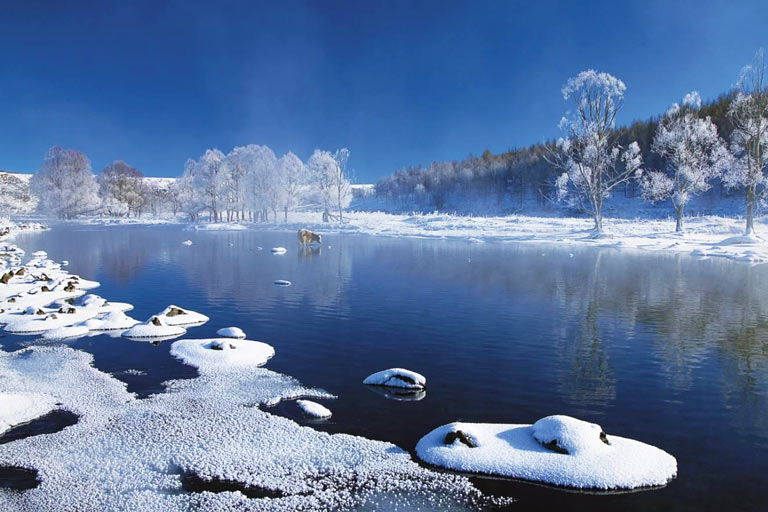
5 Days Best Hulunbuir Tour with Grassland Exploration
What to Do in Inner Mongolia in Winter
Get a Physical Release with Hot Spring: Arxan Mountain and Reshuitang in Hexigten are top popular to get a great release in the steamy hot spring.
Enjoy the Winter Naadam Festival: the well-known and grand Naadam Festival is also held in winter, mainly in December. Go to the snow-covered wild grassland to see the traditional skills and artistic talents of Mongolian boys and girls dressed up and watch their exciting horse racing, camel racing, horse lassoing and lots of singing and dancing performances.
Visit the Historical Dazhao Temple: go to the famous Dazhao Temple in Hohhot to join the jubilant temple fair during Chinese Lunar New Year period, when you can see various interesting activities and entertainment with locals, such as Buddha Thangka Exhibition, etc.
Admire Alluring Snow Scenery in the Forest: the boundless forest of the Greater Khingan is fully capped by the silver and white snow, which looks like an unreal fairytale world for photography. Prepare your camera to record the crystal and shining rime on the branches in the sunshine. Arxan, Mordaoga, etc. are better for dense forest. And Wulan Butong Grassland, Asihatu Stone Forest, etc. are also charming with distinct view.
Play while Skiing: put your ski suit to immerse into the fun and joy of skiing in the snow wonderland and show your talent with your friends and family on the professional resorts in Arxan Mountain, Chifeng, etc.
Join in the Ice and Snow Festival: Go to Manzhouli to appreciate various sculptures of snow and ice and the colorful dreamy world ignited by ice lanterns with rich exotic Russian flavor. Also Arxan Mountain Ice and Snow Festival also takes you to admire the artistic sculptures and offers you more fun with multiple activities and sports on the white snow.
Look at Volcanoes with Snow: travel to the quite Wulan Hada Volcano group to have a fresh look at those remote volcanoes with various outlook covered by white snow.
Check All Top Things to Do in Inner Mongolia | All Top Attractions in Inner Mongolia
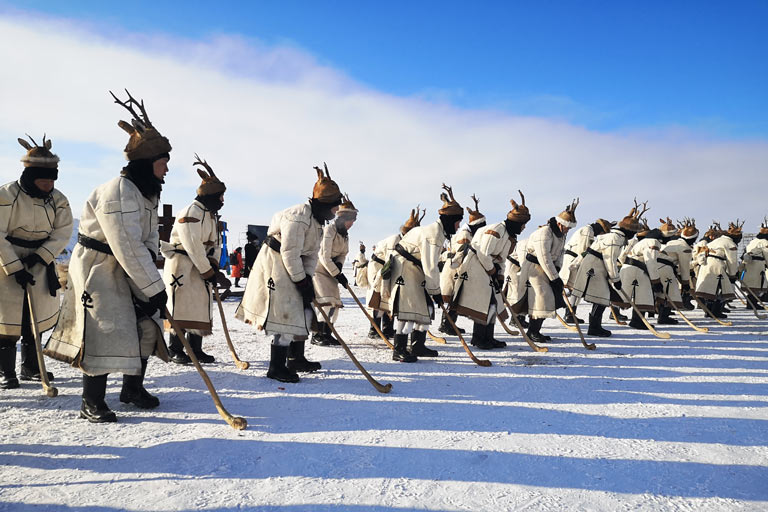
9 Days Hulunbuir In-depth Tour with Arxan UNESCO Global Geopark
What to Wear & Pack for an Inner Mongolia Winter Trip
What to Wear : Winter clothes like sweaters, down jackets, thermal clothes, trousers, wool socks, comfortable hiking / walking shoes, boots, wool hats, scarves, sunglasses, etc.
What to Pack : Necessities like sunblock, umbrella, etc.
How to Plan Your Inner Mongolia Tour?
Places to Visit in Inner Mongolia: Hohhot, Hulunbuir, Ordos, Baotou, Ulanqab, Badan Jaran, Ejina, Xilingol, Chifeng…
How to Get to Inner Mongolia: International and domestic flights to Hohhot, Hulunbuir…; Domestic flights to Xilingol, Chifeng…;High Speed Train to Hohhot, Ulanqab, Baotou, Ordos, Chifeng…; Drive to Badan Jaran, Ejina…
Best Time to Visit: April to October (especially from June to September for grasslands, June to October for deserts)
Inner Mongolia is so large and abundant with diverse distinct natural and cultural highlights, therefore, you can hardly discover all the bests in one single visit. It would take 3 days to more than 1 month for various needs. And your itinerary can be decided based on your trip length, interests and a major area of this vast destination.
Classic Inner Mongolia Tours - Middle Part (Hohhot, Baotou, Ordos...)
A classic Inner Mongolia tour usually starts from Hohhot, the capital of Inner Mongolia and most convenient traffic hub. Planning 3 days is popular for an essential discovery of Hohhot city highlights with surrounding grassland like Huitengxile or Xilamuren. 1-2 days extension to Kubuqi Desert in Ordos is also frequently chosen. And a 5-6 days trip including Hohhot , nearby grassland, Ulanqab volcanoes, Baotou and Ordos are the favorite one among travelers to discover grassland, desert, historical culture of Genghis Khan, Tibetan Buddhism, etc. in Inner Mongolia.
☛ 5 Days Classic Inner Mongolia Tour
☛ 6 Days Inner Mongolia Bests Discovery Tour (Hohhot / Ulanqab / Huitengxile Grassland / Baotou / Kubuqi Desert / Ordos)
Authentic Grassland, Wetland & Forest Park - East Part (Hulunbuir, Arxan...)
If you are interested in the most beautiful grassland, arrange 4-5 days to Hulunbuir to catch Hulunbuir Grassland and all the fabulous primitive nature and in-depth nomadic tribe culture highlights in Hailar, Ergun, Genhe and Manzhouli. If you have more time, add 2 more days to Arxan National Forest Park .
A middle and east Inner Mongolia discovery to Hohhot, Baotou, Ordos and Hulunbuir usually takes about 6-8 days, which helps you savor the top representative prairie sightseeing and culture of Inner Mongolia.
☛ 5 Days Best Hulunbuir Tour with Grassland Exploration
☛ 9 Days Hulunbuir In-depth Tour with Arxan UNESCO Global Geopark
Wild Desert & Golden Populus Forest - West Part (Badain Jaran, Ejina...)
The west Inner Mongolia is favored for seeking wilder sightseeing and adventure. If you want to discover China’s most beautiful desert, a 2-4 days Badain Jaran Desert trip to the west Inner Mongolia is your best choice to go! Besides, the splendid Ejina Populus Euphratica Forest is quite hot for a 2-3 days’ photography tour in autumn. If you want a longer vacation, plan as many other visitors to discover Badain Jaran together with nearby hot and convenient destinations like Xining, Zhangye, Dunhuang, Jiayuguan, etc. It usually needs 7 days for a Xining Zhangye Badain Jaran Desert trip.
☛ 5 Days Zhangye Danxia Badain Jaran Desert Geography Miracle Tour
☛ 7 Days Qinghai Lake Zhangye Danxia Badain Jaran Desert Wonders Tour
☛ 4 Days Ejina Populus Euphratica Forest Photography Tour
If you are seeking more authentic sightseeing and deeper Inner Mongolia culture and history highlights, it is also popular to discover Chifeng and Xilingol for 4-5 days.
Besides, it is also a great idea to extend to more popular destinations in China to appreciate more wonderful nature, culture, history and food of this vast country, such as Beijing, Shanghai, Xian, Chengdu, Xinjiang, Gansu, Tibet, Yangtze River, Yunnan, Guilin, Zhangjiajie, Huangshan, etc.
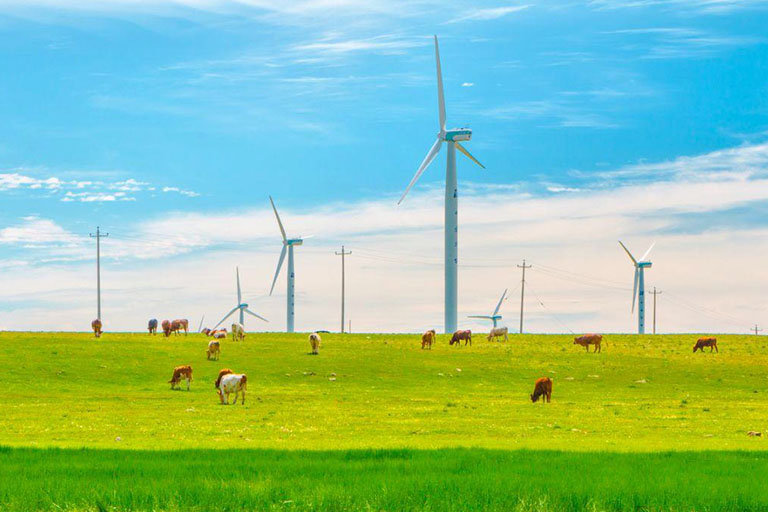
Travel Inner Mongolia with China Discovery
Have your own ideas of where and what to discover in Inner Mongolia? We China Discovery offers many popular and valuable private Inner Mongolia tour packages taking you to enjoy wonderful exploration of the best highlights of Hohhot, Hulunbuir, Ordos, Baotou, Ulanqab, Badain Jaran, Ejina, Chifeng, Xilingol, etc. And our professional travel team with experienced travel expert, local English-speaking travel guide and driver and non-smoking comfortable licensed private vehicle will help you throughout the trip from the planning, navigation, hotel arrangement and scenic spot visiting. So you will have the much better travel experience in the large and beautiful Inner Mongolia. You can check our tour packages to get some inspiration. All tours can be tailor-made according to your group size, time, physical condition, plan, interests, budget and any other special need! Please feel free to contact us to customize your own Inner Mongolia trip or if you need any help !
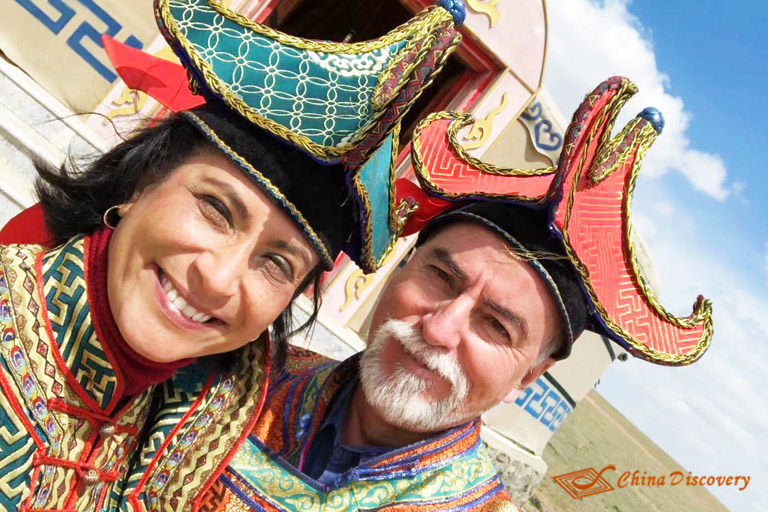
Beautiful Inner Mongolia Landscape in Winter
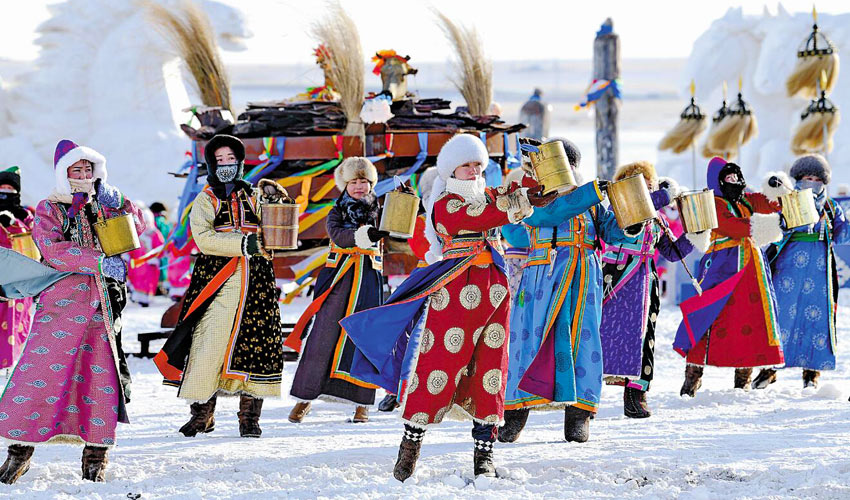
More about Inner Mongolia Travel Guide
- Top Cities & Destinations
- Hot Attractions
- Things to Do
- Famous Grasslands
- Top Deserts
- Transportation
- Weather & Best Time
- Inner Mongolia Summer
- Inner Mongolia Autumn
- Hotels & Where to Stay
- Photos & Landscpaes
- Travel Tips
- Naadam Festival
- Horse Riding
- Mongolian Yurts
- Inner Mongolia Tour Plan
Inner Mongolia Cities' Travel Guides & Tours
- Hohhot Travel Guide
- Hohhot Tours
- Hulunbuir Travel Guide
- Badain Jaran Tours
- Ejina Travel Guide
- Ejina Tours
- Baotou Travel Guide
- Baotou Tours
- Ordos Travel Guide
- Ordos Tours
- Chifeng Tours
- Xilingol Tours
- Ulanqab Tours
- Bayannur Travel Guide
- Inner Mongolia Travel Guide
- Popular Inner Mongolia Tours
Hottest Attractions in Inner Mongolia
- Hulunbuir Grassland
- Badain Jaran Desert
- Huitengxile Grassland
- Inner Mongolia Museum
- Kubuqi Desert
- Xilamuren Grassland
- Mausoleum of Genghis Khan
- Arxan National Forest Park
- Ergun Wetland
- Dazhao Temple
- Wudangzhao Lamasery
- Ejina Populus Euphratica Forest
- Ulan Butong Grassland
- Xilingol Grassland
- Tengger Desert
- Site of Xanadu
- Wulanhada Volcano Geopark
- Gegentala Grassland
See other Seasons of Jiuzhaigou
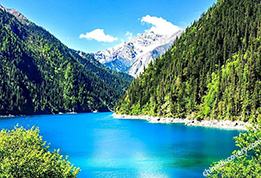
Spring in Jiuzhaigou
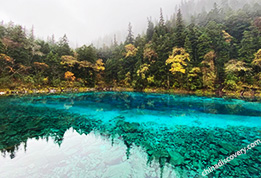
Autumn in Jiuzhaigou
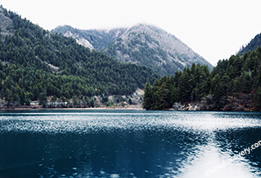
Winter in Jiuzhaigou
Recommended tours.
Top 3 tours chosen by most customers to explore in the best way. Check the detailed itinerary, or tailor your own trip now with us.
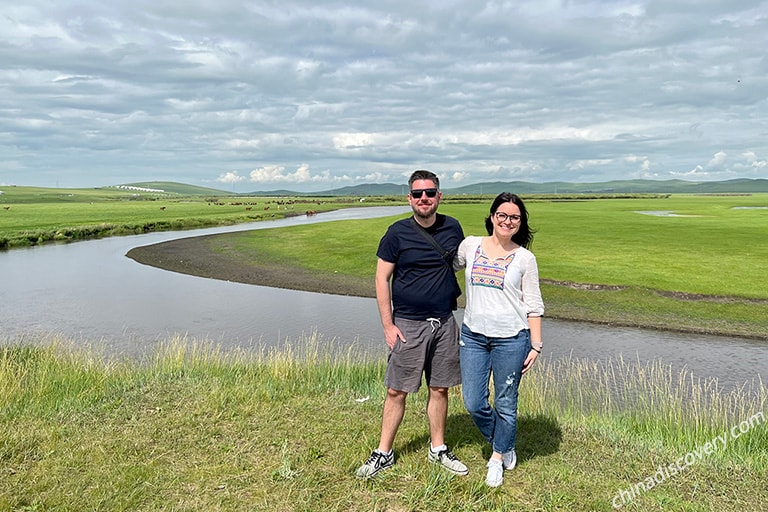
Hulunbuir / Erguna / Manzhouli / Hulunbuir
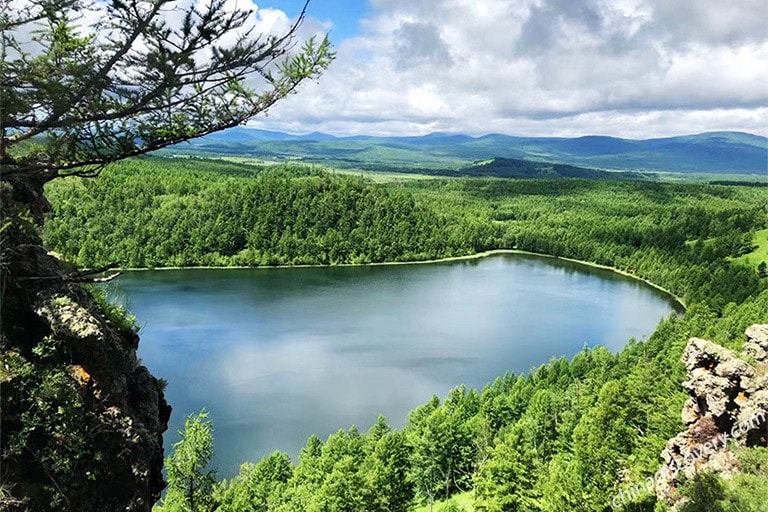
Hailar (Hulunbuir) - Erguna - Shiwei- Manzhouli - Arxan - Hailar (Hulunbuir)
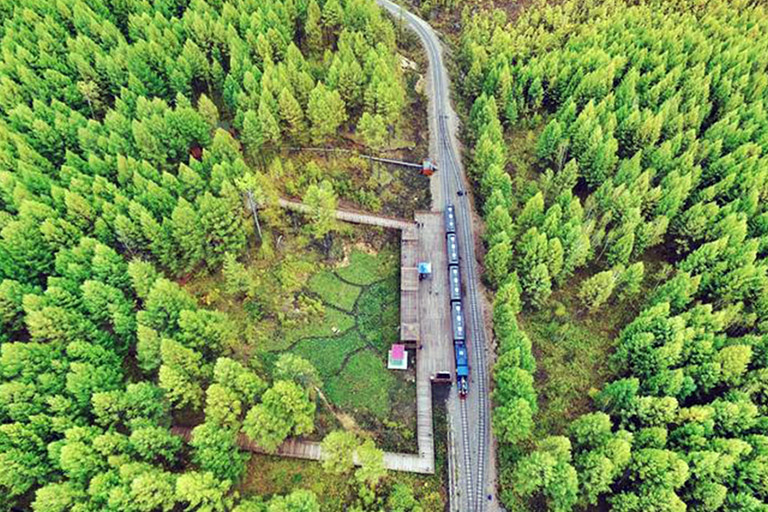
6 Days Hulunbuir & Greater Khingan Highlights Tour
Hailar / Hulunbuir Grassland / Erguna / Greater Khingan Range/ Shiwei / Heishantou / Hailar
Start planning your tailor-made holiday to China by contacting one of our specialists. Once inquired, you’ll get a response within 0.5~23.5 hours.

Have a question? Get answers from our travel experts or guests
- Your Question:
- Your Email:
- Affordable and valuable price
- 100% tailor-made packages
- Highly rated customers reviews
- Efficient customer support
China Tours
- Top 10 China Tours
- Classic China Tours
- China Tours from Beijing
- China Tours from Shanghai
- China Tours from Hong Kong
- China Tours from Chengdu
- Short China Trips
- Customize China Tour
- China Panda Tours
- Family Tour with Kids
- High-Speed Train Tour
- Silk Road Travel
- Yangtze River Cruise
- Hiking & Trekking Tours
- Photography Tours
- China Minority Travel
- Beijing Shanghai Tours
- Shanghai Yangtze Tours
- Chengdu Jiuzhaigou Tours
- Chengdu Lhasa Tours
- Suzhou Hangzhou Tours
- Guilin & Yangshuo
- Zhangjiajie
“Very good experience”
“WONDERFUL 25 DAYS IN CHINA - PRIVATE TOUR”
“Awesome China tour from northeast to southwest”
Any questions, please email us at: [email protected] or call us at: 86-19138970032 (Monday-Friday 9 a.m. to 6 p.m. GMT+8)
- Terms & Condition
- Privacy Policy
- Customer Support
Copyright © 2011-2024. All rights reserved.
Cookie policy
We use cookies to give you the best experience on our website. Continue using our website means you agree with our cookie policy. For more info, please read here .
- Journey into Infinity Grassland

- Products search
No products in the cart.
- Adventures Tours
- Classic Tours
- Community Tours
- Family Tours
- Festival Tours
- Special Interest Tours
- Travel Guide
Best Time To Visit Mongolia | 4 Seasons In Mongolia – Good Time to Travel
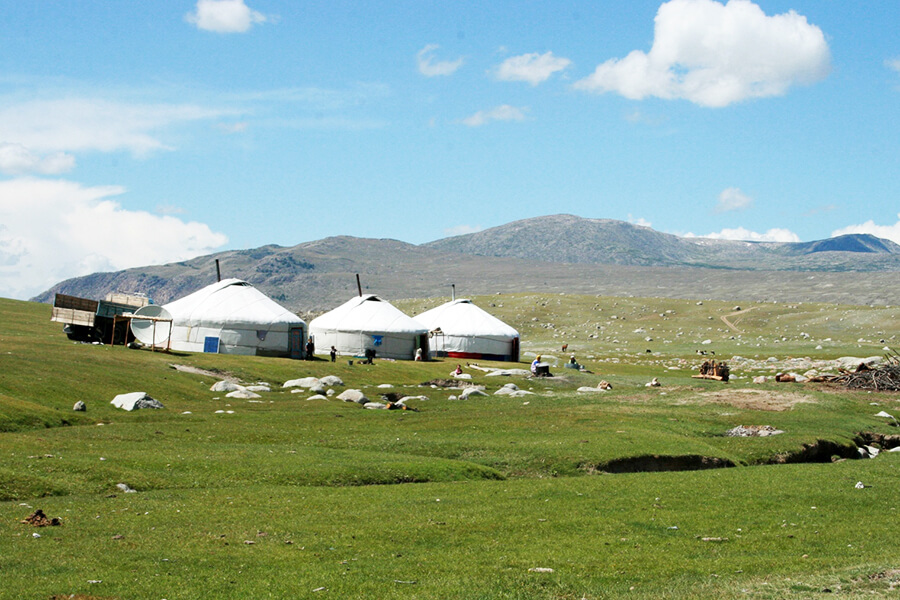
When should I visit Mongolia? And what is the best time to visit Mongolia? Go Mongolia Tours will give you the exact answer for you with this article.
Weather in Mongolia
Located in Central Asia, the country is bordered only by Russia and China. Mongolia has an extreme continental climate with long, cold winters and short summers in which most of the precipitation falls. This country’s days are sweltering and very cold at midnight, varying from 20-30 degrees. Located in a temperate climate zone, the climate of Mongolia is sharply continental. This means that it is characterized by a sharp drop in temperature and a small amount of precipitation.
Mongolia has 4 seasons, winter lasts from November to February, spring from March to mid-May, summer lasts from mid-May to late August, and autumn from September to September. the end of October. The cold period in the North can last for 1 month or more than 2 months in the Gobi desert area.
Spring in Mongolia
After winter, the snow melts, and the animals wake up from hibernation. All the animals and plants here begin a cycle of reproduction and development. In Mongolian “Khansh neekh” means some animals that hibernate, waking up from their sleep. For people and livestock, it can be a harsh season of the driest and windiest days, though temperatures quickly turn warmer in the spring. Finally, spring is a season of prosperity – Of strong beginnings and growth. Starting in March, spring usually lasts about 60 days although it can be as long as 70 days or as short as 45 days in some parts of the country.
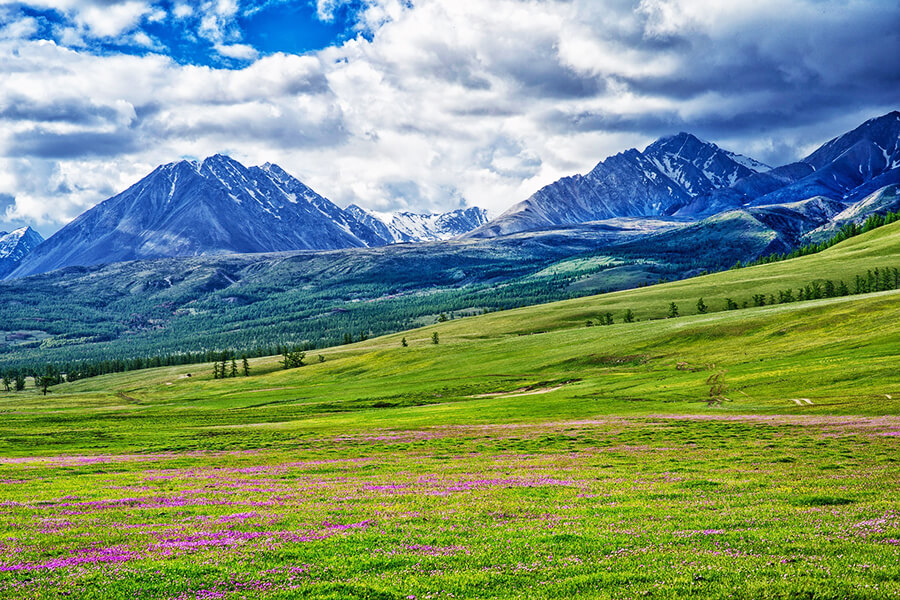
Summer in Mongolia
In the summer, the best time to setup Mongolia Tours is from mid-June to late August. Summer temperatures can be as high as 38 °C (100.4 °F) in the southern Gobi region and 33 °C (91.4 °F) in Ulaanbaatar. In addition, the country’s most famous festival: the “Naadam Festival” is also held in July every year. Visitors in Mongolia will have the opportunity to mingle with the locals and observe and experience the authentic traditional culture here.
According to those who have travel experience in Mongolia, the most suitable time in Summer to come here in July. The weather at this time is extremely cool and pleasant, the day is only hot when the sun is not covered by clouds. Therefore, this is the peak time for tourism, and the demand for accommodation is very high, leading to the phenomenon of the scarcity of accommodation as well as extremely crowded traffic.
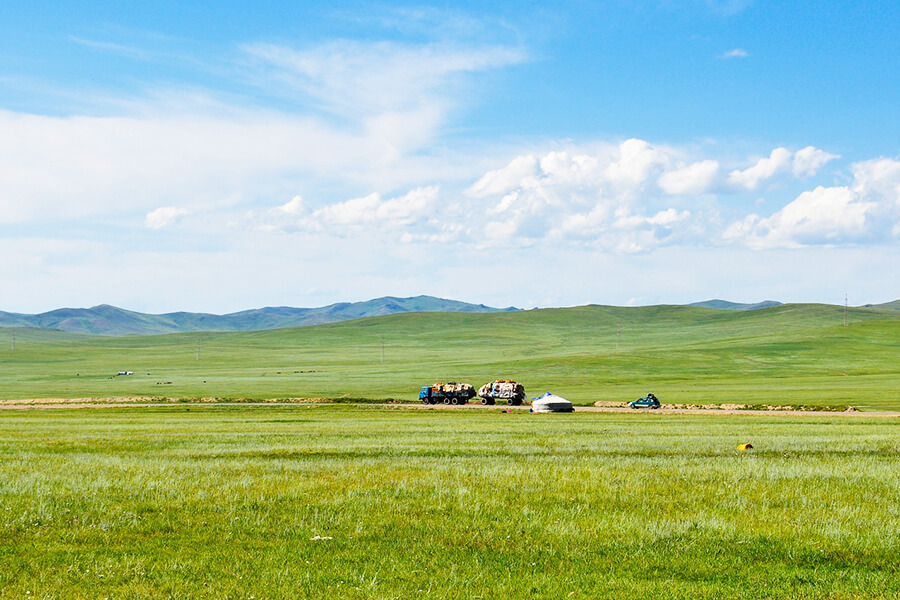
Autumn in Mongolia
In autumn, the climate of Mongolia turns cold and dry with fresh air and a high blue sky. This also is the best season of beautiful for a Mongolia trip. In September, you will see thousands of swans and other migratory birds stopping by the lakes of Mongolia on their journey south. You’ll also see species that don’t normally live in landlocked countries.
Autumn in Mongolia is quite short, only about 2 months and this is known as a time of change of seasons between the heat of summer and the cold of winter. The color of this season is the yellowing of grass, bringing a peaceful feeling to tourists who come to enjoy their trip to Mongolia.
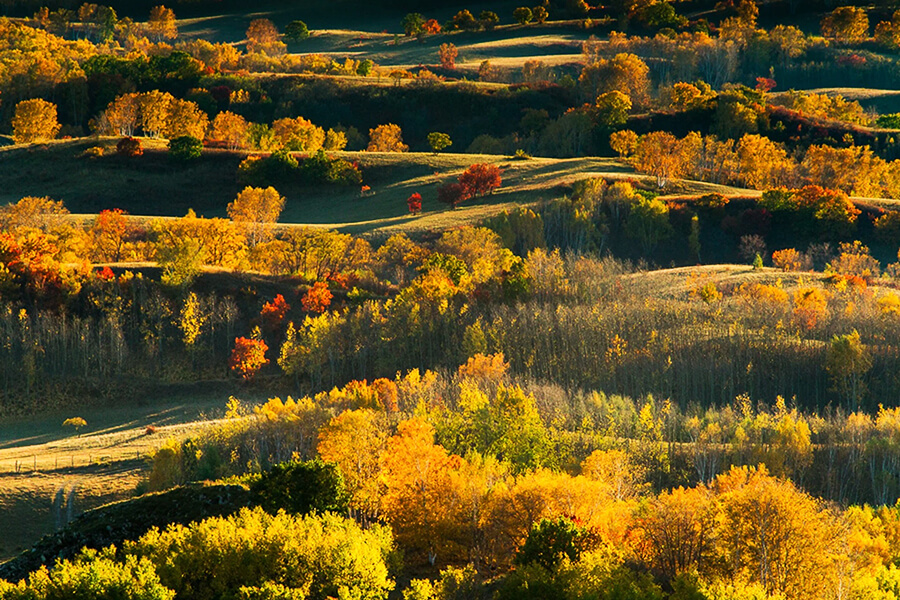
Winter in Mongolia
The weather in this country is often harsh in winter. Due to the influence of the cold Siberian wind, Mongolia’s temperature in winter often drops below minus 40 degrees Celsius. If you want to experience the harsh winter in Mongolia, you can visit the suburbs of the capital Ulaanbaatar. The people here have a semi-nomadic lifestyle, they often set up tents in the valleys or hills in the winter.
The special thing in winter in Mongolia is the festival to celebrate surviving the cold weather. In March, when the weather starts to warm up, the Mongols flock to Khovsgol Lake for a two-day ice festival. The greedy will bring a pitcher of milk, water, black or green tea, and salt, a bag of khuushuur (fried buns filled with meat), and gather together on the frozen lake to celebrate the end of the frozen time, the hardest of the year.
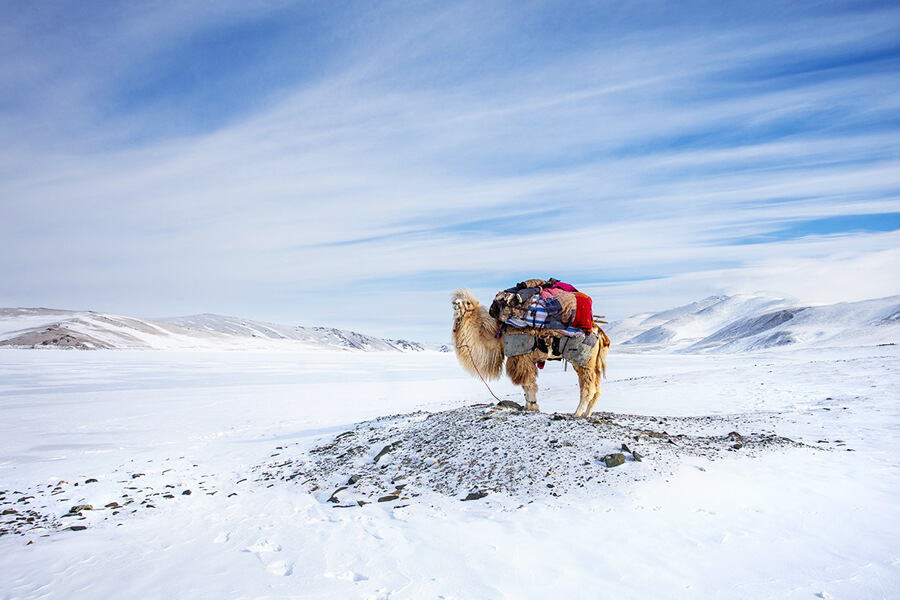
The Best Time to visit Mongolia
The best time to travel to Mongolia is usually from May to early October. July is considered an ideal time to visit Mongolia. The weather is cool, and pleasant, only hot when the sun is not obscured by clouds. However, this is the high time of the tourist season here, the accommodation is not enough and the traffic is very heavy. From late July to August is the wet and rainy season.
The best months to visit the Gobil Desert are September and October. The summer temperature in Gobil is 40 degrees Celsius but winter is windy. You can see snow in the Gobil Desert in late April and some lakes remain frozen until June. There is a short rainy season from mid-July to September. Because of the high pressure, the evenings are cold even in summer. Ulaanbaatar is possibly the coldest city in the world. Temperatures usually start to drop below 0°C (32°F) in October, drop to -30°C (-22°F) in January and February and remain until April. September is probably the most ideal, but this time can still be surprisingly cold.
Attention About Weather in Mongolia Trip
Clothes for mongolia trip.
Regardless of the season in Mongolia, Mongolia’s weather is still extremely harsh for tourists. Because of the large temperature difference between the night and day, whether visitors go in winter or summer, they need to bring warm clothes. In the summer with temperatures that can reach 40 degrees, with the immense green plateaus and clear skies, customers need to bring long-sleeved clothes, sunscreen, and hats to protect their skin from the harmful rays of the sun. Dry wind and hot sun here. With harsh winters that can drop to -40 degrees, travelers enjoying a holiday in Mongolia should wear at least 3 layers of clothing when choosing to visit Mongolia in winter.
The innermost layer should be made of wool or any synthetic material with quick-drying properties. Clothing made of cotton fabrics should be avoided as these are absorbent and can cause moisture or even coagulation. The main purpose of the innermost layer of clothing is to keep the body dry. The middle layer (insulation) also serves the purpose of drying and warming. The outermost layer protects the body from wind and snow, visitors should choose clothes with effective waterproof and windproof properties. In addition to clothes, socks, boots, gloves, hats, and scarves are all essentials for both winter and summer as the nights in Mongolia are cold all year round.
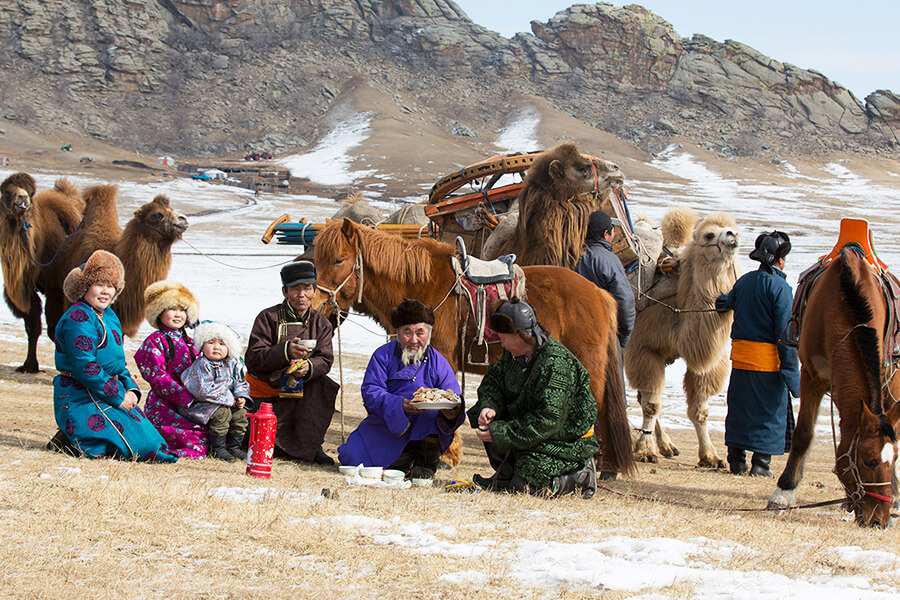
After the weather factor, visitors should also choose appropriate clothing for each activity and destination in Mongolia. Clothing that is easy to put on and take off should also be a priority as it will be easier to equip when traveling to areas such as desserts or savannas. Casual clothing like jeans or tights won’t be an issue when you’re in the capital Ulaanbataar, but it certainly makes it difficult to engage in physical activities like horseback or camel riding. If there is still space, you can choose to bring sunglasses, moisturizer, a camera, or any other items to help you enjoy your trip to the fullest, and remember to always keep your body warm.
Username or email address *
Password *
Remember me Log in
Lost your password?

- Tour packages
- Tailor Made
- Trip Calendar
- How to get to Mongolia
- Book train ticket
- Book cheap air ticket to Mongolia
- Best time to travel
- Tourist Sim card
- Mongolia Visa information
- What to pack
- Travel Insurance
- List of Mongolian Embassy
- Company profile
- Clients Feedback
- Job Vacancy
- Terms & conditions
- Privacy Policy
- Practical Information
- Destinations
- Things To Do
- Culture, Art & History
- Nature & Geography
- People & Society

- Practical information
- Gobi Desert
- Western Mongolia
- Eastern Mongolia
- Central Mongolia
- Northern Mongolia
- Ulaanbaatar
- Around Ulaanbaatar
- Weather Forecast
How it began

Latest blogs
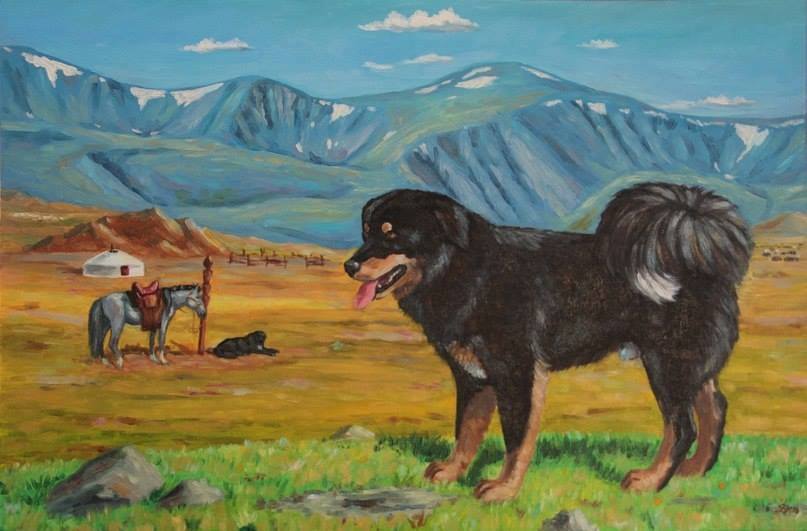
Travel tools
Need help planning your vacation.

The Best Time to Travel to Mongolia
If you are planning to travel to Mongolia, the most significant thing to consider is the weather. The country experiences an extreme continental climate; it is so far inland that no sea tempers its climate.
Mongolia has four seasons and each has its own character. Keep in mind that the country has an average of 230-260 annual days of sunshine. That is why Mongolia owns a nickname of “The Land of the Blue Sky” . Do not forget your sunglasses and sunscreen.
Each season of Mongolia is favorable along with the festivals and the best of activities. This article will help you to get acquainted with the climate and to choose the best time to visit Mongolia .
Visiting in summer (June to August)
- The temperature ranges from 20C to 25C, Gobi temperatures this month can rise up to 40°C
- Dry throughout the central and southern regions
- The mountains and northern areas can be cold in August
Pack a fleece, windproof rain jacket and a good pair of waterproof shoes.
Things to do in summer
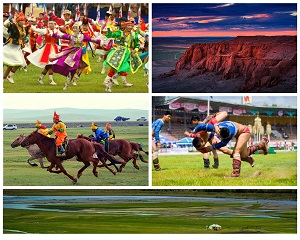
If you are wondering when is the best time to visit Mongolia , June might be the answer. It's a decent time to get out of the city and drive to the countryside. You will love camping in Mongolian spectacular scenery.
July is the time to see the largest and Olympic-like Naadam Festival in Ulaanbaatar city. Also, each province or soum (small administrative district) of Mongolia organize the festival of their own on different dates throughout the summer allowing travelers to experience a genuinely authentic and uncrowded Mini Naadam.
Seasonal highlight
- Mongolian Naadam Festival /10-12 July, Ulaanbaatar city/
- Local Naadam Festival /08-09 July, Kharkhorin soum, Uvurkhangai province/
- Gobi March /27 July - 03 August, Bulgan and Uvurkhangai province/
Click here for amazing summer tours.
Visiting in Autumn (September to October)
Nature at its best in autumn featuring with colorful landscape and temperate weather. The cool weather brings respite to the Gobi and the varying colors in the forests in the north are beautiful. October is again cool and sees the occasional or rare snow bustle up north but is still fine for travel, especially in the Gobi desert.
- The temperature ranges from 3C to 10C, Gobi temperatures this month can rise up to 40°C
- Unpredictable
- Rare snow bustle up north
Pack your fleece, gloves, scarfs, windproof rain jacket and a good pair of waterproof shoes.
Things to do in Autumn
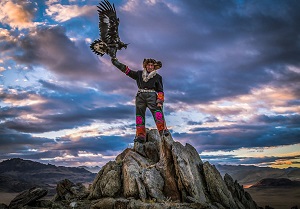
Drive to the Gobi the land of dinosaur and enjoy the pleasant and mild weather. It is a great time to go on a birdwatching tour or wildlife spotting tour to see the beautiful birds and animals in their natural habitat. Try fishing, horse trek, and hiking.
- Golden Eagle Festival /15-16 September, Sagsai soum, Bayan-Ulgii province/
- Golden Eagle Festival /05-06 October, Bayan-Ulgii province/
Click here for amazing autumn tours.
Visiting in Winter (November to February)
- The temperature ranges from -25C to -30C, sometimes the temperature drops down to -40°C
- Cold with snow storms and freezing cold wind
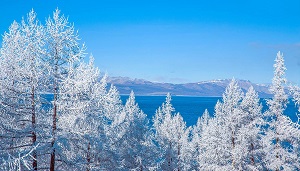
Pack your woolens and warmest clothes if you trotting here.
Things to do in Winter
In February when the weather comes closer to be stable and nice, the largest cultural festival Tsagaan Sar (Lunar New Year) is held. It will give you a memorable experience if you really want to know Mongolian culture and cuisine.
Also, the country has plenty of snow in winter where one can try winter sports. Enjoy dog sledding adventure in peaceful and beautiful Mongolian landscape. Experience Winter Horse Festival features a parade of unique and rare horses, thrilling competitions among horsemen, traditional singing and dancing performances, and horse race.
- Tsagaan Sar (Lunar New Year) /23-25 February, Erdene soum, Tuv province/
- Winter Horse Festival /02-03 November, Batnorov soum, Chinggis province/
Click here for amazing winter tours.
Visiting in Spring (March to May)
- The temperature ranges from 5C to 15C.
- Unpredictable weather, one can see four seasons in one day
- Rainfall occurs in the taiga areas of Khentii and Khuvsgul
- Dry and sunny
- You can see snowfall in the north
Things to do in spring
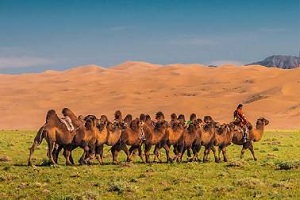
Also, spring is a great time when a new life begins. For herders, it is the happiest and the busiest time of the year dealing with offspring/young borns. Therefore, it would be an interesting experience to visit a nomadic family during that time.
Visit Khustai National Park or Terelj National Park to enjoy the wildlife spotting, bloom of flowers, grassland, and trees as well as the smell of spring in the air.
Seasonal highlights
- 1000 camel festival /06-07 March, Bulgan soum, Umnugobi province/
- Ice Festival /03-04 March, Khatgal soum, Murun province/
- Yak Festival
- Eagle Festival /05 March, Ulaanbaatr city/
Click here for amazing spring tours.
We hope that this article will be helpful for your trip planning to Mongolia. If you choose your ideal season, contact us for more information.

Don't let the planning stress you out
Most popular.
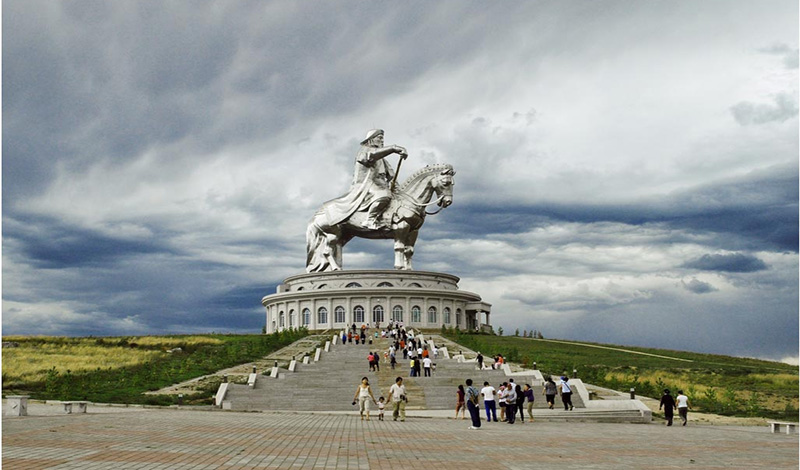
Since 2004, we have been helping people the world over to enjoy unforgettable adventures to our homeland, and we do it all with expertise and passion.
- Best seller tours
- Tailor made tour
- A day tours
- Join in tours
- Private tours
- Best Time to Travel
- Mongolian Visa Information
- Hotel booking
- Flight ticket booking
- Train ticket booking


- Staying with a Mongolian Nomadic family tour Hot
- Holiday with Mongolia's nomadic family tour
- Springtime Nomadic Adventures Hot
- Mongolia Naadam Festival tour 2024 Hot
- Gobi Desert and Grand Naadam Festival tour 2024
- Ancient Capital of Mongol empire tour
- Horse Trekking in the Orkhon Valley 2024 (15 days) Hot
- Sacred Rivers Horse Trek
- Trekking in the Altai mountains tour
- Mongolia honeymoon tour Hot
- Discover True Mongolia (September) Hot New
- Gobi Odyssey (6 days) Hot
- Discover True Mongolia tour 2024 Hot
- Mongolian Gobi desert & Beijing Highlights tour New
- Endangered species in focus tour Hot
Karakorum & Bayangobi desert gateway (4 days)
- The Highlights of Central Mongolia tour
- City tour of Ulaanbaatar Hot
- All group tours enlisted here for your and linkable to tour calendar page
- Mongolia visa and assistance
- Getting to Mongolia
- Medical info
Climate of Mongolia
- Mongolian food and meals
- Mongolia customs
- Mongolia Accommodation Guide
- ( Suggested hotels )
- China visa assistance
- Getting to China
- China Travel Medical Info
- China Weather and Climate info
- Chinese Food Info
- China Customs
- Accommodation in China
- Russia visa assistance
- Getting to Siberia
- Climate of Siberia
- Food info for Siberia travel
- Russia customs
- Accommodation in Siberia
- Flights to Mongolia
- Trains to Mongolia
- Mongolia FAQ
- Travel Insurance
- Mongolia overview
- Mongolian culture
- Mongolia travel inspiration
- Mongolian History
- China overview
- Chinese Culture
- China Travel Inspiration
- ( China Destinations )
- Siberia overview
- Siberia travel inspiration
- Siberian culture
- Travel photos and Videos
- Why travel Mongolia with us
- Company profile
- Meet the team
- Responsible Travel
- Cooperate with us
- Subsidiaries
- Book a tour
- Tailor-made tours form
- Tour calendar
- Payment Instructions
- Terms and conditions
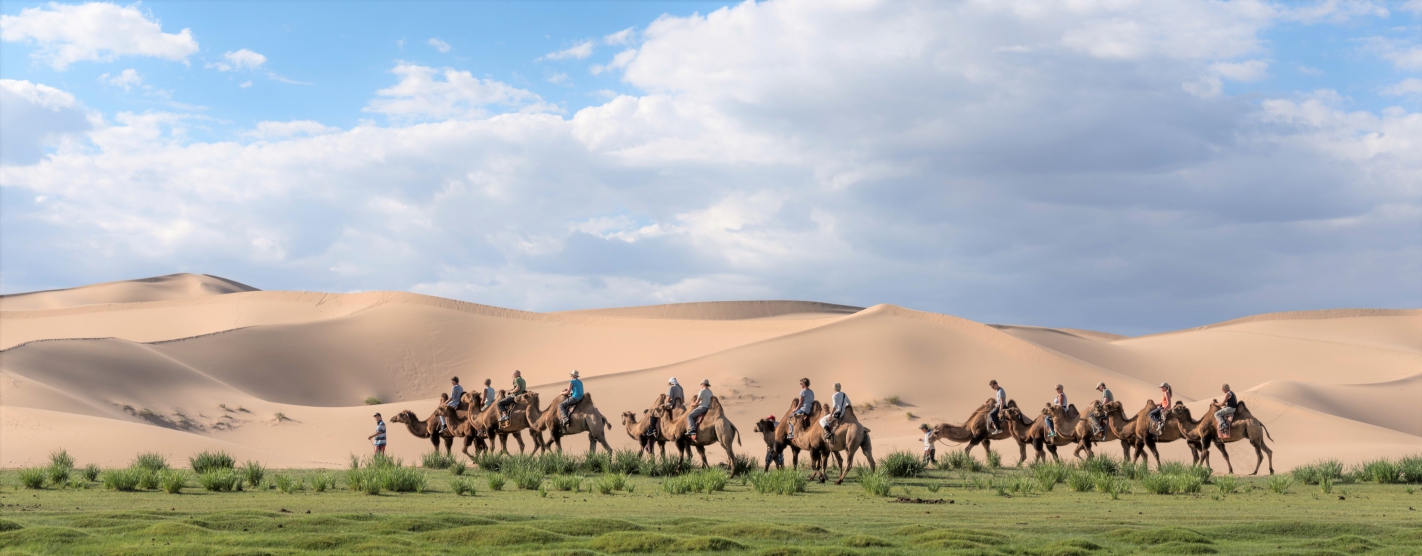
- Mongolian Embassies
- Suggested hotels

Mongolia is well known as home to some extreme weather. The summers can be hot and the winters are bone chillingly cold. They have four pretty different seasons, but one thing that is consistent are sunny skies. Mongolia is known as the “Land of the Eternal Blue Sky”. The country boasts over 260 sunny days each year.
The winter is long and cold with temperatures often well below -30° Centigrade. Despite these temperatures, the sun in the blue winter sky often makes it feel warmer. There is very little snowfall but snow and ice can remain for several weeks at a time.
The rainy season is from July to September. The rain showers are brief, but the clouds are beautiful over the massive open spaces. Mongolia’s summer is the most pleasant time to travel in Mongolia .
Temperatures can reach +40 Centigrade, but are always comfortable. The air is dry and travel is pleasant. The Gobi usually has the hottest temperatures. Summer evenings can be cool because of Mongolia's high altitude, so be sure to pack a sweater. The spring is a time of strong winds, especially difficult in the sandy areas of the Gobi. The autumn is a lovely time to visit as well, with the many larch trees in the country becoming a brilliant yellow before losing their needles.
Temperature in Mongolia
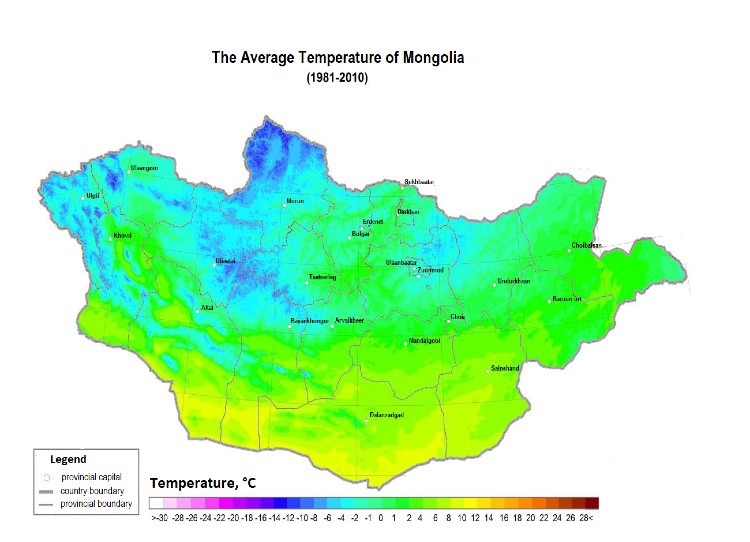
The hottest month of the year in Mongolia is July, the average temperature in the Altai, Khangai, Khuvsgul and Khentii mountain region is +15° C, it is from +15° C to +20° C in the great lake depression. The Altai, Khangai, Huvsgul, and Khentii mountain ranges go from +20° C to 25° C in the summer. In the southern part of Dornod steppe and the Dornogobi region it is more than +25° C. In the summer time, the temperature goes down when land level goes up +0.5 – 0.6° C for each 100 meter than sea level.
Mongolian Weather Right Now
Mongolia weather averages.
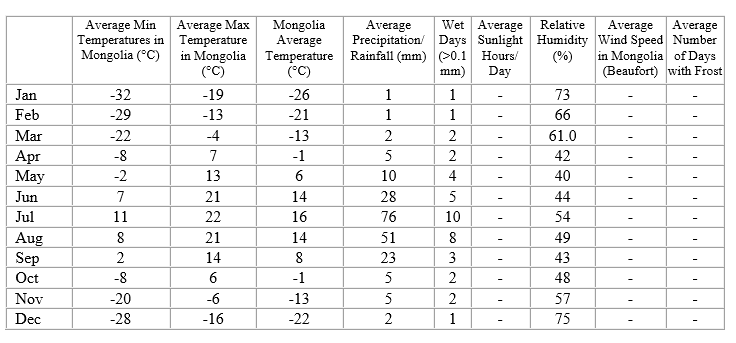
The annual precipitation in Mongolia
Generally, there isn’t much precipitation in Mongolia. The average rainfall is 300 – 400 mm in the Khangai, Khentii mountains. In Khuvsgul’s mountainous area they get around 250 – 300 mm of rain and snow in a year. The Gobi only gets 50 – 100 mm per year. Around 85% of total precipitation happens from April to Sep and around half of the total is in July and August.
The mountains get slightly more rain. The average of rainy days in the mountainous regions of Mongolia is 60 – 70 days. The Khangai and Khentii mountain ranges get the most rain. For a comparison, in Dornod and the steppe areas, they only get 30 rainy days.
Mongolia mostly gets rain, not snow. Throughout the whole winter, there is typically around 10 mm snow in the Gobi Desert. The mountains and Uvs Lake get around 20 to 30 mm snow each year. The rest of the country only averages around 10 to 20 mm snow in rest of territory.
Seasons of Mongolia
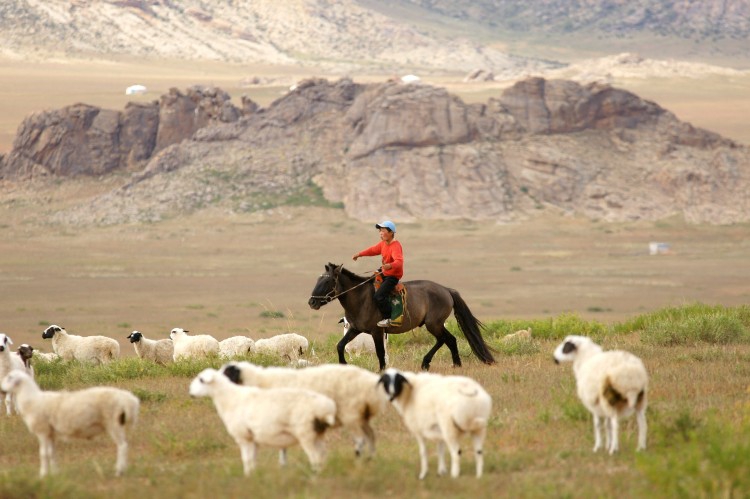
Spring comes after the severe winter and days become longer while are nights shorter. It is the time when snow melts and animals come out from hibernation. All animals and livestock breed while the soil thaws in the warm spring weather. In Mongolian "Khansh neekh" means some animals, which hibernated, awoke from their sleep.
For people and livestock, it can be a harsh season of the driest and windiest days. Though the temperature quickly gets warmer gets warm again in spring, livestock breed and gain their weight back. In the end, Spring is a prosperous season - everybody is calm and relaxed. The grass turns green, anemones grow up and nature is covered with its green dress. Beginning in March, the Spring usually lasts about 60 days although it can be as long as 70 days or as short as 45 days in some areas of the country.
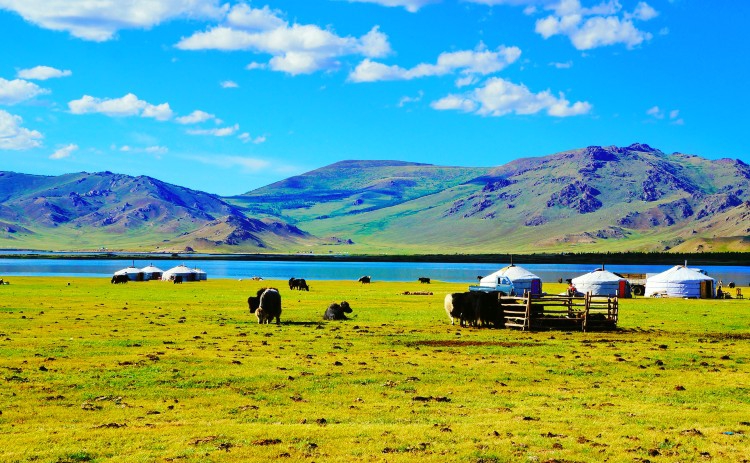
It is the most pleasant time with abundant dairy products and there are many feasts and holidays of happy people. In Mongolia, summer lasts about 110 days from the end of May until September. July is the warmest month of summer and it is typically 15°C and 20°C in the mountains. The steppes range between 20°C and 25°C, but temperatures as as 32°C have been recorded. The Gobi is typically the warmest, with temperatures ranging from 40°C to 41°C in summer. Sometimes it reaches as high as 50°C. No wonder they have camels down there!
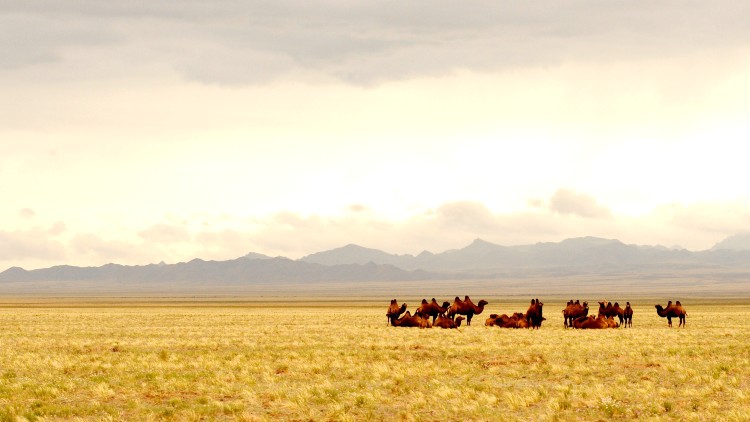
Autumn in Mongolia is a season of transition. The climate changes from the hot and wet, to the cold and dry winter. Autumn has less rainfall than the summer, and it gradually cools down. Vegetables and grains are harvested at this time. Pasture and even the forests become yellow. The native larches change from a bright green to yellow before shedding their needles. Fat livestock’s hair get longer and more woolly in preparation for the winter.
Autumn is an important season in Mongolia to prepare for winter. In the countryside, people are busy harvesting the crops, vegetables and fodder. They prepare their cattle barns and sheds to protect their herds. They also stockpile firewood for warming up their homes. Autumn lasts about 60 days from the beginning of September until the early November. In some years, there are many long and sunny days in autumn, which are increasing with global warming.
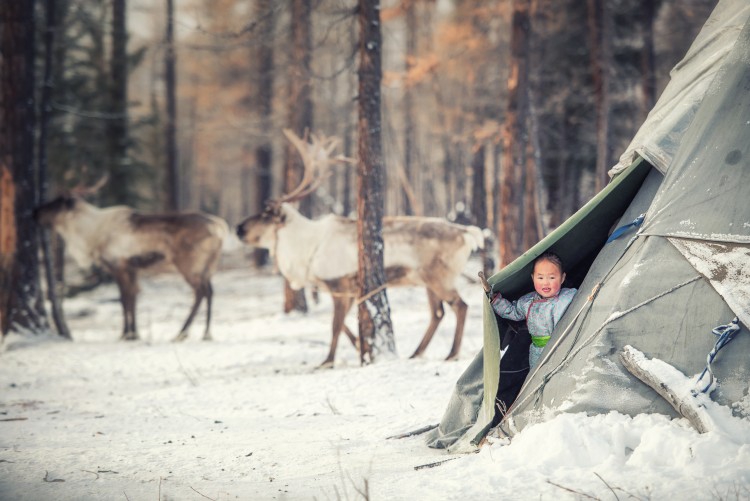
Winter in Mongolia is the most severe, coldest, and longest season. All rivers, lakes, streams and ponds freeze in winter. It snows throughout the country, but only lightly. After making all the necessary preparations for a long winter, herdsmen stay at their winter camps. People prepare milk tea and carefully ration out supplies to last for the season.
Winter starts early in November and lasts about 110 days until March. Sometimes it snows in September and November, but the heaviest snowfalls usually occur at the beginning of November. January is the coldest winter month in Mongolia. The average temperature is -35°C in Khangai’s mountainous regions. The rest of the country ranges from -20°C to -25°C. Even the Gobi is a chilly -15°C. When properly dressed though, you can easily enjoy spending time outdoors. The lack of tourists means you’ll have this beautiful country to yourself. And since Mongolians have been dealing with the winters for centuries they have more than a few remedies to help warm you up!
Related Tours
Discover true mongolia tour 2024.
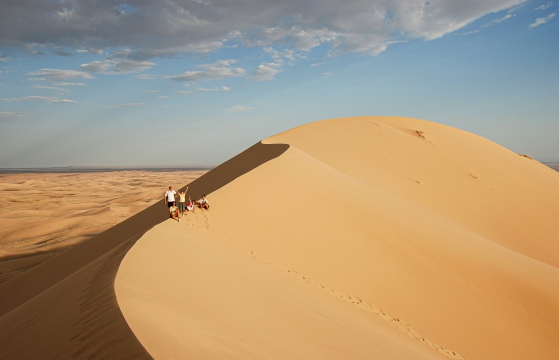
Join us on this epic tour through Mongolian untouched wilderness, sleep under millions of stars and ...
Mongolia Naadam Festival tour 2024
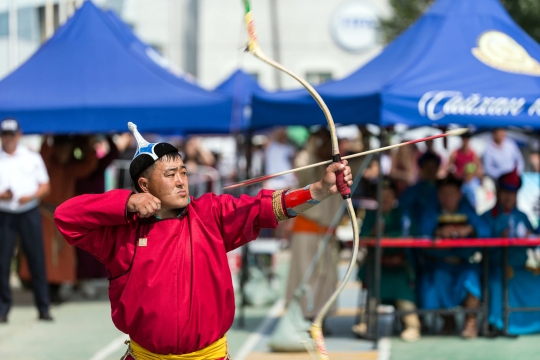
Selena Travel Mongolia invites you to join the Great Naadam Festival tour which offer a unique oppor...
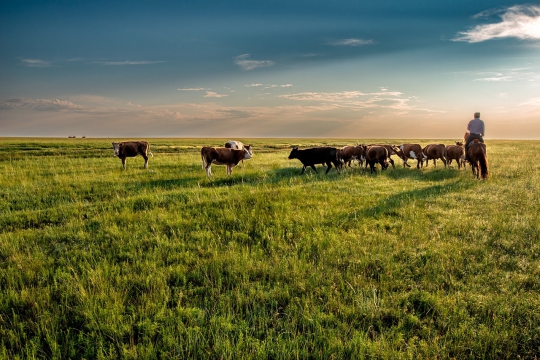
The trip takes you to the historic sites from the Great Mongol Empire in the heart of the world. Erd...
The Gobi Desert and Karakorum beyond tour 2024
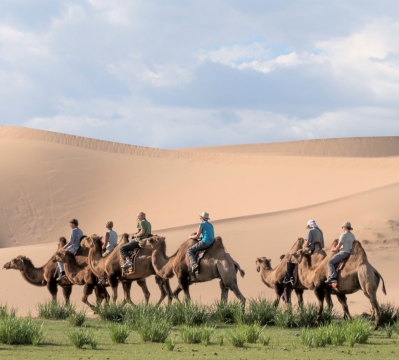
Your expedition will lead you across diverse landscapes, from the arid Gobi Desert to the vast centr...
Sign Up for Our Newsletter
Stay in touch with us

We are members of


Mongolia Weather and the Best Time to Visit
From winter lows (-40°C/-40°F) to pleasant summer highs (32°C/90°F), Mother Mongolia doesn’t mess around when it comes to the weather, making summer the best time to visit Mongolia .
- April 11, 2021
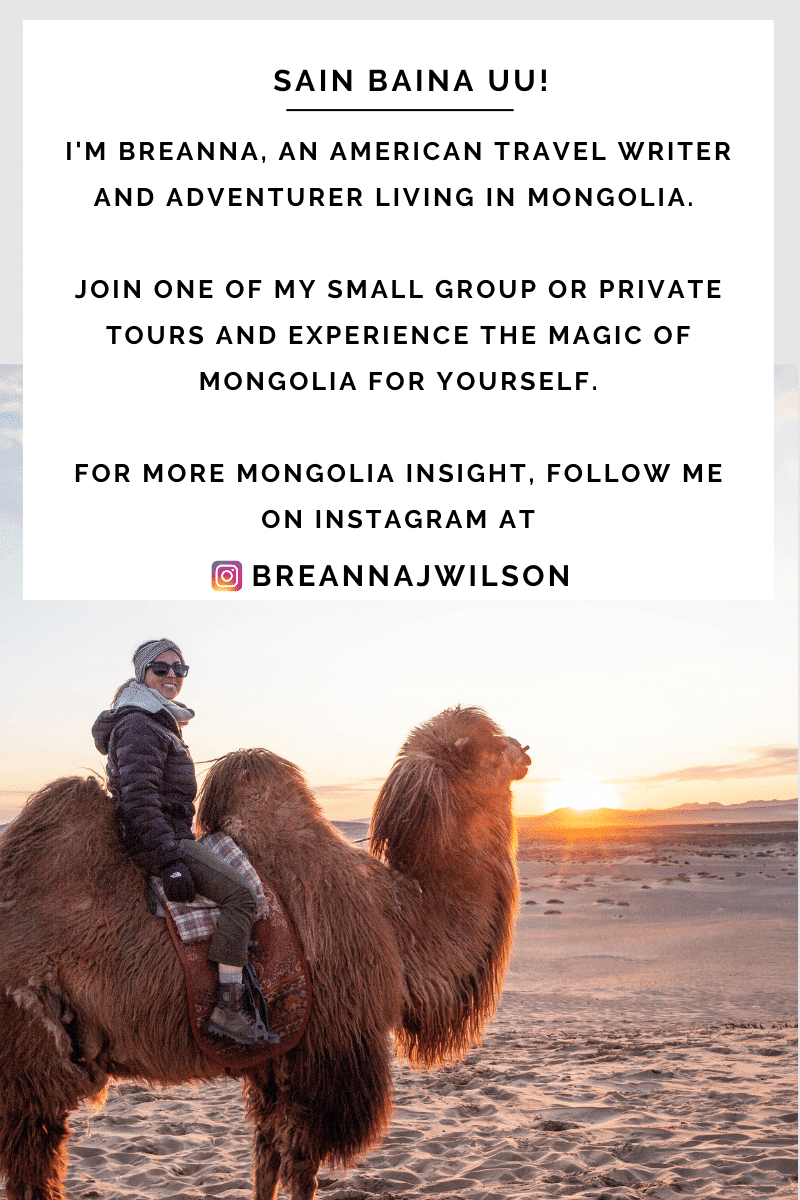
The Mongolian Snuff Bottle Explained
Table of contents.
The thrill and excitement that comes with visiting Mongolia is unmatched. The country is not yet overcrowded by tourism, traditions still run deep, and the locals are as friendly and hospitable as they come, making it every traveler’s dream. Not to mention it boasts some of the most beautiful and untouched natural wonders in the world, including the Gobi Desert, northern Taiga, and Altai Mountains in the western part of the country.
And, as if that wasn’t already enough to start planning your dream Mongolia trip in a second browser tab (we see you), there are dozens of annual festivals that take place across the country at all times of the year. From the annual Naadam Festival, the festival of the three manly sports, to Playtime Festival, Mongolia’s answer to Coachella.
However, as you plan your visit to the country, you are bound to ponder over the best time to do so – and that they don’t call Mongolia the land of extremes for nothing. Especially when it comes to weather.
Due to the low winter temperature, summer remains the preferred time to visit. Winter can go as low as -40° C (coincidentally the same in Fahrenheit, – 40° F).
But you’ll be forgiven to think that winter is completely ruled out as a viable time when traveling to Mongolia is even possible. Low temperatures indeed discourage most travelers. However, well-prepared adventurers find it quite rewarding since wintertime in Mongolia means less tourists and even more incredible natural phenomenon. (Did you know that the Gobi Desert is one of the only deserts in the world where it snows?)
To give more comprehensive advice on visiting Mongolia, here is a breakdown of the weather in summer and winter.
Mongolia Weather: Why Summer is the Best Time to Visit
Mongolian summer runs from mid-June to the end of August. You can look forward to sunny days and sufficient rainfall to keep everything lush and green during this time.
Summertime temperatures in most parts of Mongolia range from 20-25° C (68° F-77° F) with low humidity making it a pleasant time of year to visit Mongolia.
Here is how the three summer months look like in Mongolia.
- June: 16° C-26° C (60° F-78° F)
- July: 22° C-32° C (71° F-89° F)
- August: 20° C-28° C (68° F-82° F)
With temperatures like this, short sleeves and pants are comfortable in the day, and extra layers sometimes necessary at night. Mongolia’s weather is often unpredictable, so it’s always a good idea to be prepared for anything here.
Make sure you always carry sunscreen, sunglasses, a waterproof jacket and pants (yes, pants too), and of course, something to purify water no matter where you are. Temperatures can still drop to a chill in the evening, which means a light jacket and pants are never a bad idea when the sun starts to set.
While the average temperature in Mongolia is pleasant in the summer, there are some places where the temperature can reach record highs. The Gobi Desert is extremely hot in the months of June, July, and August. Expect to tackle red-hot sand, very dry air, and temperatures of up to 40° C (104° F).
Visiting Ulaanbaatar, Lake Khövsgöl, Gorkhi-Terelj National Park, the northern Taiga, and even heading out west to the Altai Mountains is recommended for June, July, and August, we recommend visiting the Gobi Desert in spring or fall (June, September, October) when temperatures are less extreme.
Mongolia Weather: Don't Rule Out a Winter Trip to Mongolia Just Yet
Mongolian winter runs from November to February, covering a cool four months’ period. During this time, temperatures plummet to as low as – 40° C (- 40° F).
- November: -5° C to -15° C (23° F-3° F)
- December: -22° C to -30° C (-7.6° F to -22° F)
- January: -20° C to -26° C (-4° F to -14.8° F)
- February: -14° C to -20° C (6.8° F to -4° F)
Even with temperatures this cold, there are plenty of places to explore and adventures to cross off your Mongolia bucket list. Just be sure to pack your warmest and most reliable cold-weather clothes. (Trust us on this one.)
Start with merino wool layers (top and bottom), waterproof winter boots, gloves graded for extreme cold, an ear warmer and knit cap, and an adequate winter jacket. Hand warmers and foot warmers are one of our secret weapons during Mongolia winter, providing heat inside your gloves and boots, which becomes essential if you’re spending any amount of time outdoors.
Traveling across the country in winter may have its challenges, but it is still possible. However, make sure you prepare thoroughly and carry the right equipment. The nomads don’t expect visitors around this time, which makes them extra hospitable and ready to welcome you into their ger to have a taste of traditional Mongolian food . You’ll definitely earn some cool points with them for braving their beloved country at this time – not many outsiders do.
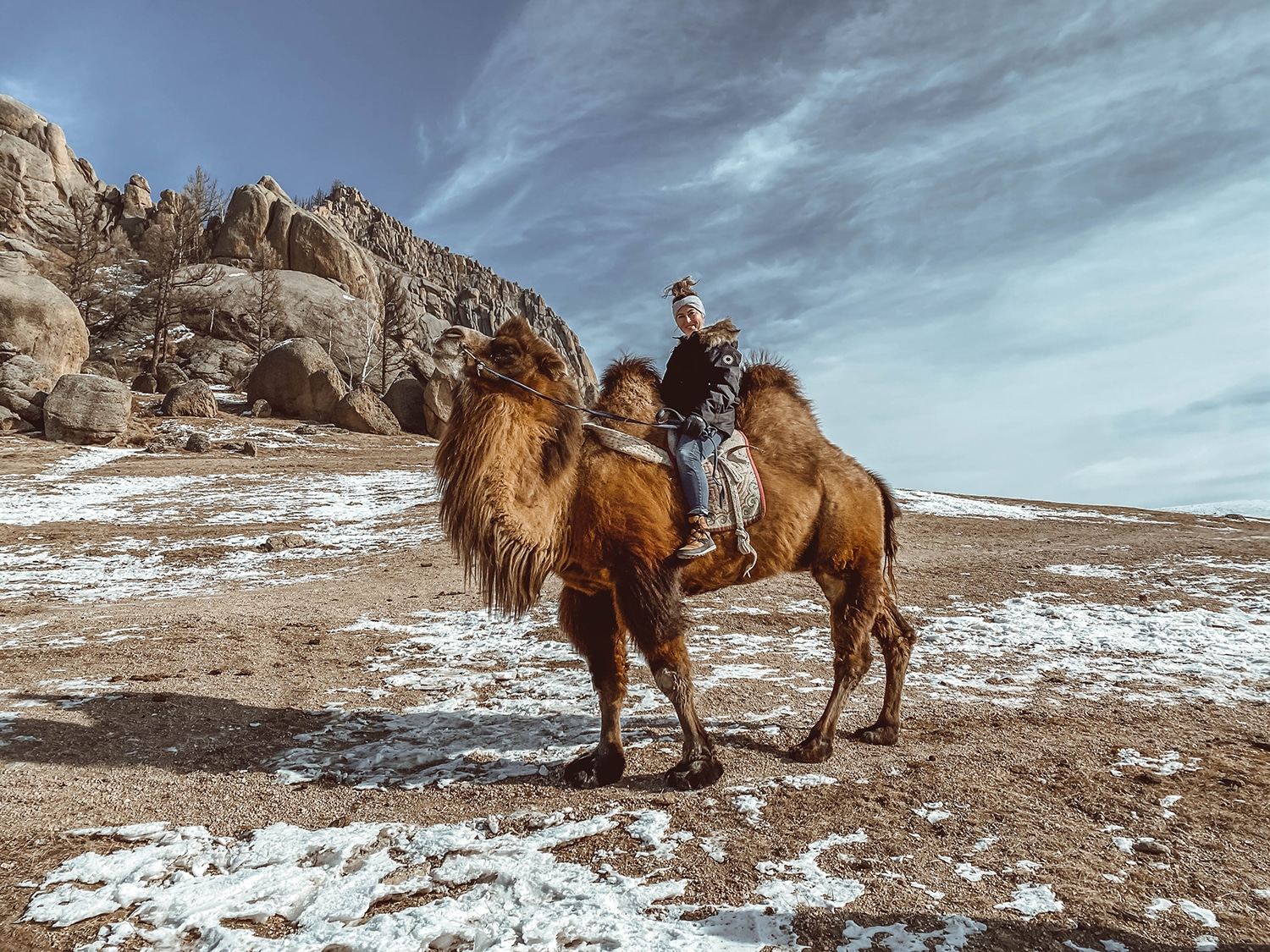
Popular Mongolia Guides:
- Ultimate Mongolia Travel Guide (2024 Update)
- 11 Traditional Mongolian Foods To Know
- Gift Ideas for Visiting a Nomadic Family
- Mongolian Language Cheat Sheet
- What to Budget and Travel Costs (2023)
Itinerary Ideas:
- How to Attend Naadam (July 2024)
- Best Things to do in Kharkhorin, Genghis Khan’s Ancient City
- 101 Best Places to Visit
Mongolia Weather: Spring and Fall
Spring in Mongolia can bring about challenges that make it one of the least desirable times of year to travel through the country. Nomads are transitioning from their winter to summer camps, summer tourist camps aren’t quite open yet, and chances are there’s still snow on the ground with no sign of disappearing until early June.
Roads aren’t cleared yet from the last of the winter storms and most locals are more than ready for the weather to turn warm. Avoid traveling in Mongolia from mid-March through mid-May, if you can. It will make for a much more desirable and inclusive travel experience to visit when the locals are ready and able to welcome you with open arms.
However, fall is actually our favorite time to travel through Mongolia. Temperatures do start to drop rapidly, but with less tourists and the chance for mostly agreeable weather, depending on the region, we’re a big fan of crossing any last bucket list adventures off our list during this time.

The Best Time to Visit Mongolia
With all things considered, summer is still the best time to plan a trip to Mongolia. The sun is warm and the days are long, which gives you even more time to explore – and take in – everything this incredible destination has to offer.
With winter being an equally fascinating time of year to visit Mongolia, it requires packing more gear, planning more carefully so you don’t find yourself in a dangerous situation, and the areas where you can visit will be limited.
Best Tours in Mongolia in the Summer
Motorcycle across the steppe in a vintage Russian Ural with a sidecar and embed yourself with herders as part of Moto Trip Mongolia .
Experience Naadam and the largest celebration of the year for yourself. Cheer on as locals celebrate the three manly sports – wresting, archery, and horse racing. Contact us to arrange a trip to experience Naadam and get tickets to the opening ceremony.
Visit the Tsaatan Tribe and learn about the last reindeer riders in the world. Contact Erik Cooper to join one of his authentic and exclusive expeditions.
Enroll in an apprenticeship with the Eagle Hunters of the Western Altai Mountains or attend the Golden Eagle Festival, held each October. Enroll in the apprenticeship or contact us to visit the Golden Eagle Festival.
Self-Drive your way across Mongolia and take a photography masterclass led by one of the best travel photographers in the world. Or rent a car and travel Mongolia on your own.
Don’t be fooled into thinking Mongolia is only a place for extreme adventures – summer means the annual Playtime and Spirit of Gobi music festivals are going on, and those are certainly worth checking out.E
Best Tours in Mongolia in the Winter
Dog sled your way through Gorkhi-Terelj National Park during this high speed, cute-as-can-be day trip from Ulaanbaatar. Contact us to arrange this day trip.
Set off across the snow-covered sand dunes of the Gobi Desert atop a Bactrian two-humped camel and celebrate Tsagaan Sar or Mongolian Lunar New Year with a local family and learn about Mongolian food traditions first-hand. Contact us to arrange this experience.
Spend the first weekend of March experiencing one of the coldest festivals on the planet – the annual Lake Khövsgöl Ice Festival. Contact us to arrange this experience.
While you’re at it, you might as well make time for the annual Camel Festival in the South Gobi as well. Contact us to arrange this experience.

Author: Breanna Wilson
Hi! Sain uu! I’m Breanna, an American travel writer and adventurer living in Ulaanbaatar, Mongolia for more than 5 years. I’ve written for and been featured in Condé Nast Traveler, CNN, Forbes, and the New York Times, among others. Read more of my Mongolia travel articles here .
Live with an Eagle Hunter Family During this Eagle Festival Tour 2024
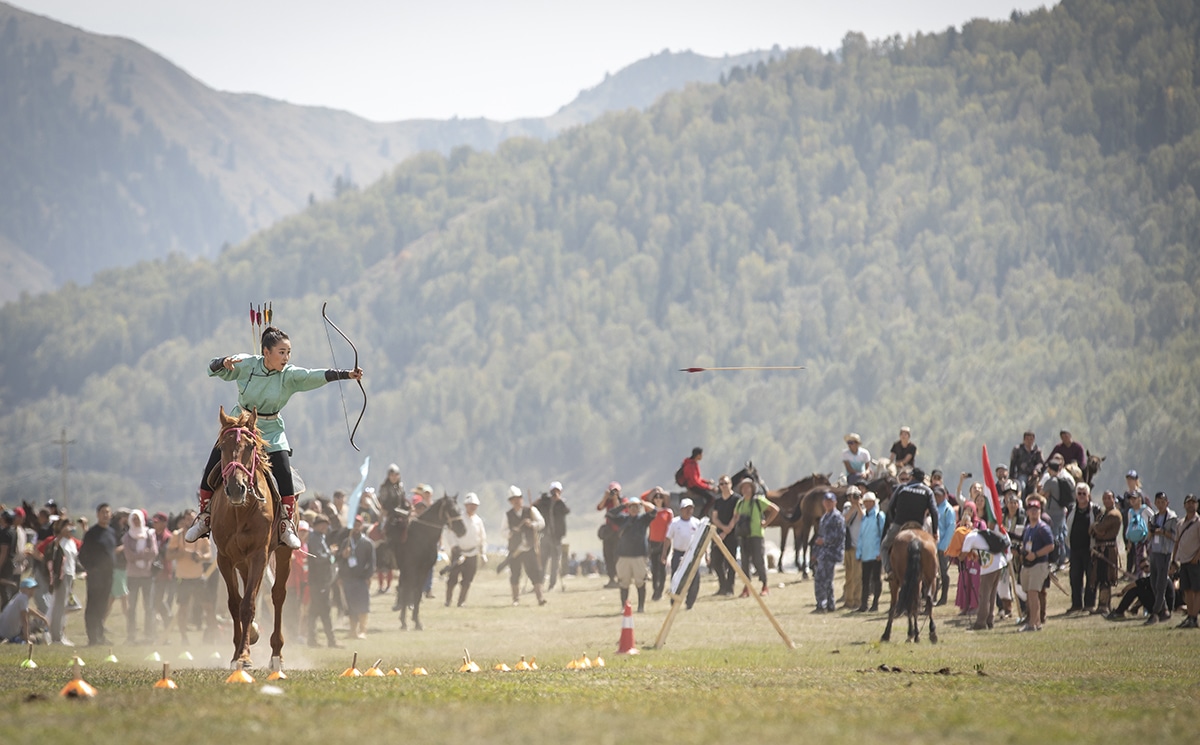
What is Mongolian Traditional Mounted Archery?
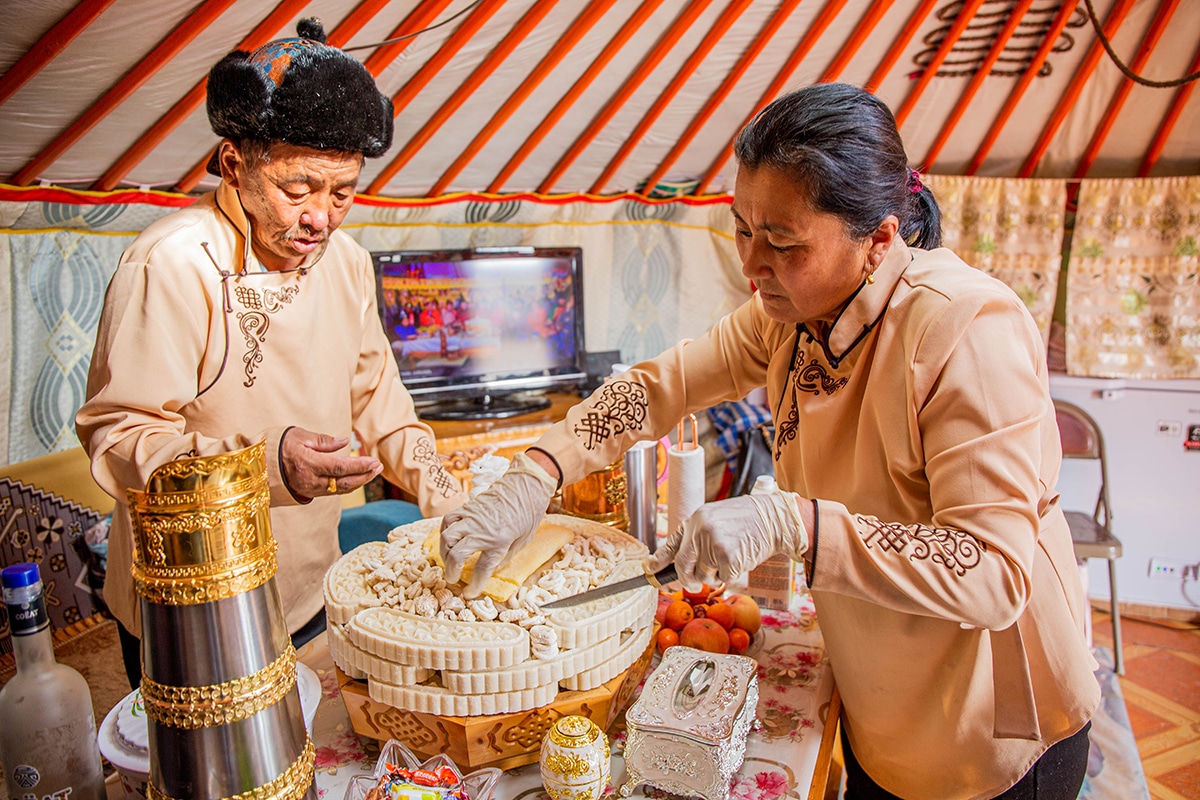
Mongolian Lunar New Year and Shambala Winter Tour 2025
Privacy policy, terms & conditions, join my private travel group on facebook.
Proudly Based in Ulaanbaatar, Mongolia © 2024 Meanwhile in Mongolia
AFFILIATE NOTICE
This website contains links to products and services where I may make a commission when you purchase. This supports the continued upkeep and development of this website. For an explanation on this policy, read my Advertising Policy page .

Climate - Mongolia

The climate in detail
The seasons.
- The plateau - Ulaanbaatar, Altay
- Mountains and lakes - Khatgal
- Gobi Desert - Sainshand
What to pack
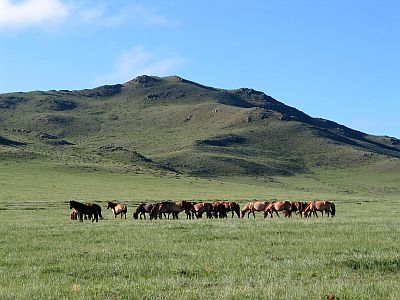
The plateau
Ulaanbaatar.
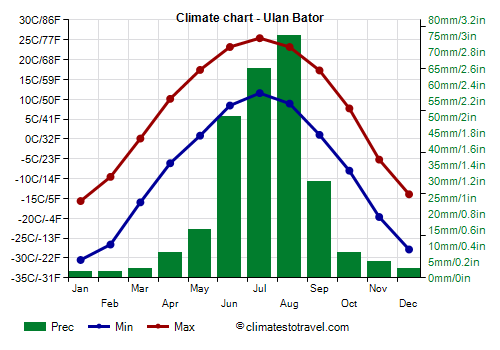
Mountains and lakes
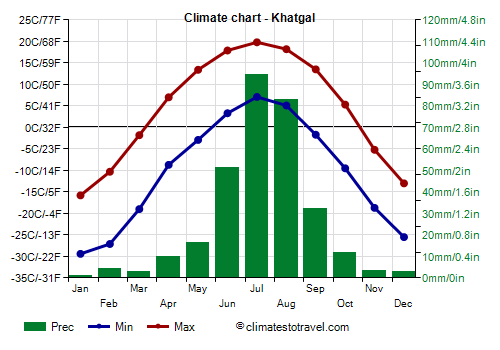
Gobi Desert
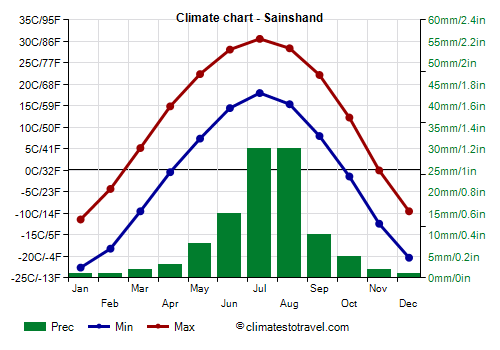
- Welcome. Any questions?
- phone +976 70117770
- WhatsApp: +976 90099908
Mongolia Winter Tours
Winter tours 2023-2024.
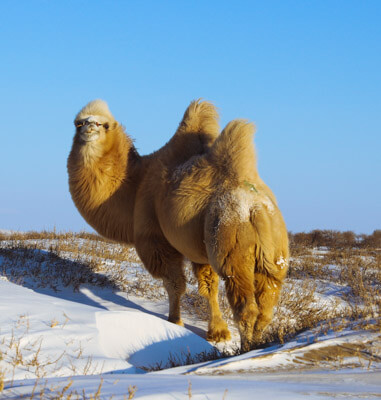
Winter Adventures of the Gobi Desert
The Gobi desert winter travel is unique as it is the earth's coldest desert where the nomads live herding their animals, wild animals roam, the landscape varies, stars glaze in the cloudless sky, and the horizon stretches as far as you can see.
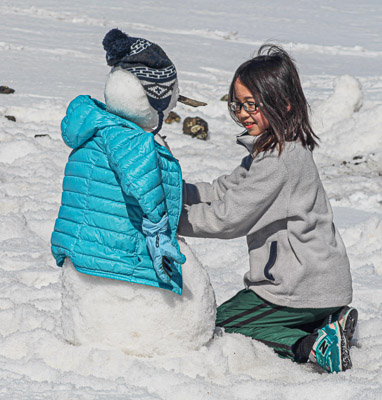
Taste of Mongolian Winter Tour
The six-day Taste of Mongolian Winter tour is exclusively devoted to travelers who wish to have an authentic Mongolian experience. Mongolian winter is harsh and cold but not extremely cold due to dryness. You will see how beautiful the Mongolian winter is when traveling through snow-covered hills, wide-open steppes, forested mountains, and dunes in cooling fresh air.
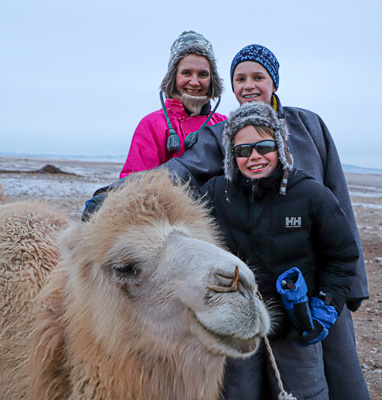
Semi-Desert, National Parks & Nomad Experience Tour
This winter tour highlights the giant statue of Genghis Khaan, a picturesque winter view of Gorkhi Terelj National Park, gigantic Turtle Rock, an authentic nomad experience, horse and camel riding, and a hike in Hustai National Park in search of the earth's truly wild horses.
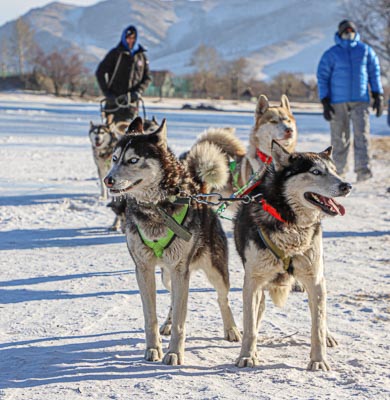
Adventures & Cultures of Mongolian Winter
This is a unique and authentic tour of Mongolian winter while mingling with the locals and discovering the nomadic life. You will discover the huge and distinctive landscapes of western mountainous areas, central Mongolian hilly steppes, and the semi-desert within one travel. Winter is the best time to visit the eagle trainers.
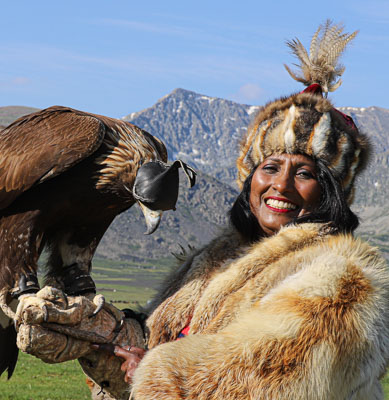
Falconry Tour in Western Mongolia
Mongolian Kazakhs have been keeping their tradition and custom at their origin for hundreds of years. You will stay at a home of an eagle hunter, ride horses and go to the mountains to see how the Kazakhs train and hunt with their eagles.
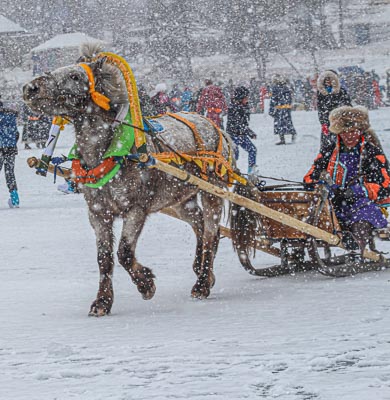
Khovsgol Lake Ice Festival Tour
The Khovsgol Ice Festival is some of the finest, most colorful, and full of events festival held in Mongolia in winter on the frozen Lake Khovsgol. As you will travel overland to the remotest northern part, the tour covers a huge territory of steppes, mountain steppes, and forested mountains.
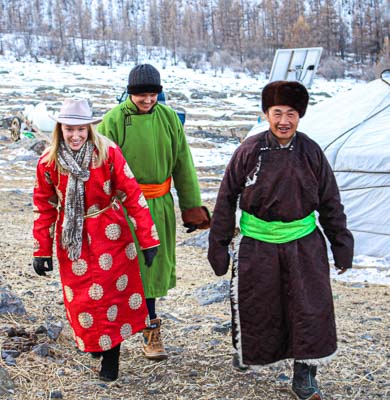
Tsagaan Sar Celebration Tour
A tour to experience the nomadic life in the semi-desert area and celebrate Mongolian Lunar New Year with the nomads. Mongolian Lunar New Year Tsagaan Sar is one of the two most important national holidays in Mongolia, celebrated throughout the country for three days. During Tsagaan Sar, families prefer to have plenty of food and be at the utmost of clean and dressy.
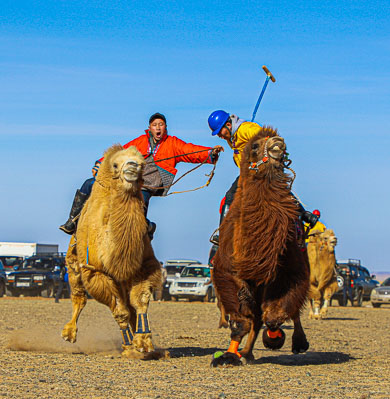
Mongolia Camel Festival Tour
Attend the Camel Festival, a highlight of Mongolian winter festivals, while discovering the Gobi desert beauties. The camels in the Mongolian desert are an inseparable part of the Gobi desert nomads' life. The nomads will compete with camel-related traditions, customs, and fun games. The camels are the prettiest in their winter cloth.
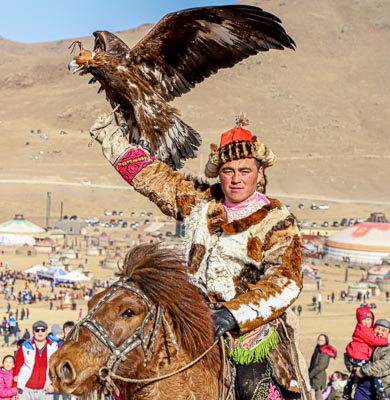
Eagle Hunting Festival Day Tour
You will witness eagle hunting, eagle training, Kazakh customs, and traditions not traveling far west. About 20 eagle hunters come to the area from western Mongolia to show us how they train eagles for hunting. Traditional music and dance performances, Kazakh games, and equestrian competitions are part of the festival.
Saturday, May 04, 2024 1:40 pm (Paris)
- Asia and Pacific
- Climate change
In Mongolia, a murderous winter decimates nomadic herds
Many steppe herders have lost all or part of their livestock in recent months, due to the early formation of a layer of ice and extreme cold, which has deprived the animals of food. For many, this disaster signals the end of nomadic life.
By Harold Thibault (Munkhkhann (Mongolia) special correspondent )
Time to 7 min.
- Share on Twitter
- Share on Messenger
- Share on Facebook
- Share by email
- Share on Linkedin
Subscribers only
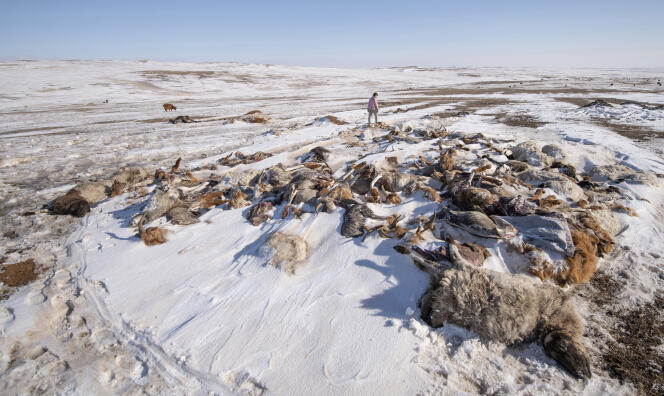
The steppe was finally free of ice and snow. White gave way to the still-dry yellow of early spring. But, on these empty expanses as far as the eye can see, patches of other colors could regularly be made out: brown, beige, black. Carcasses of horses, sheep and cows, among the more than 6.9 million animals that didn't make it through the harsh winter. Mongolians speak of a "white and iron" dzud (disaster): The snow fell suddenly at the beginning of November 2023, but a thaw melted it away. Then came the bitter cold, freezing an impenetrable layer of ice covered in deep snow from December to the end of March.
The nomads had no memory of every experiencing such temperatures, dropping below -40°C. They watched helplessly as their animals died one by one. Oyungerel Dolgsuren lost almost all of hers: Of the 400 animals she raised with her husband, Demberelsaihan, and their three children, only three sheep, around 30 goats and four cows survived. The 13 horses remaining from their 50-strong herd had wandered off into the cold and blizzard. There was no doubt they were now dead but the couple were looking for them all the same.
Every evening, the 46-year-old breeder thought back to what should have been done, if only they'd known: Sell all the animals in December. But by January, when the couple realized the scale of the disaster, it was already too late. It was impossible to cross the 40 kilometers of tracks to the small town of Munkhkhaan to sell the cattle. The herders were up to their hips in snow, and the yurt door had to be cleared to get out. In just a few minutes outside to fetch and feed the animals, Dolgsuren had frozen cheekbones. She was afraid for herself too. The animals could no longer feed themselves by scratching the ground; the ice was unbreakable, and they had grazed hooves from it. The family used up all the extra grain they had borrowed before the winter season, but nothing helped.
Pile of carcasses
Weakened, the animals succumbed to cold and hunger. While sick or old animals normally take a long time to die, said the nomad, here, they all died quickly. They laid down and never got up again. Every day, there were three or four, sometimes more, 20 all at once, one terrible morning. The family made the weakest animals sleep with them in the yurt, but they were already too far gone. Some females died of exhaustion during gestation or while giving birth. "We tried everything," repeated Dolgsuren.
She led the way around the modest shelter erected to keep the ever-chilly wind off the remaining animals. Another goat had died that morning in mid-April. Even though temperatures were now much milder, the most anemic animals would continue to die for a few more days or weeks. Like all the families in the region, Dolgsuren and her husband had assembled the carcasses into a pile. The environment office has requested that they be transported to marked pits, away from waterways and homes, to avoid disease when the heat returns. Trucks will have to be brought in to clear these hundreds of animals.
You have 69.27% of this article left to read. The rest is for subscribers only.
Lecture du Monde en cours sur un autre appareil.
Vous pouvez lire Le Monde sur un seul appareil à la fois
Ce message s’affichera sur l’autre appareil.
Parce qu’une autre personne (ou vous) est en train de lire Le Monde avec ce compte sur un autre appareil.
Vous ne pouvez lire Le Monde que sur un seul appareil à la fois (ordinateur, téléphone ou tablette).
Comment ne plus voir ce message ?
En cliquant sur « Continuer à lire ici » et en vous assurant que vous êtes la seule personne à consulter Le Monde avec ce compte.
Que se passera-t-il si vous continuez à lire ici ?
Ce message s’affichera sur l’autre appareil. Ce dernier restera connecté avec ce compte.
Y a-t-il d’autres limites ?
Non. Vous pouvez vous connecter avec votre compte sur autant d’appareils que vous le souhaitez, mais en les utilisant à des moments différents.
Vous ignorez qui est l’autre personne ?
Nous vous conseillons de modifier votre mot de passe .
Lecture restreinte
Votre abonnement n’autorise pas la lecture de cet article
Pour plus d’informations, merci de contacter notre service commercial.
Content Search
Severe winter in mongolia: story of loss and strength.

UNICEF is providing essential support to herder families and children affected by extreme weather event and who are struggling to get back on their feet.
Ariunzaya Davaa, Communication Specialist
In the faraway lands of eastern Mongolia, where the winters are brutal and the winds relentless, families like O. Altantogos' faced a tough time. Imagine waking up to find most of your animals dead because of the harsh winter called dzud[1]. That's what happened to Altantogos, a young mom with three kids.
Altantogos and her husband, T. Dalaibayar, usually get ready for tough winters by storing up food for their animals. But this year was different. There wasn't enough fuel to transport hay for the animals, and the snowstorms covered their shelters, leaving them helpless.
“Now we manage our daily food and other expenses with child money [Mongolia’s universal cash programme for children]” says the wife.
“We do not know what to do now. With the parents by our side, I guess we will manage somehow. I still want to work as herders” smiles Dalaibayar.
Their story isn't the only one. E. Khuderbaatar and B. Zulzaga, who got over 100 animals from their parents when they got married, lost most of their herd too. Now they only have 8-9 animals. Even Khuderbaatar's dad, who was a big herder, suffered heavy losses.
Mongolia was hit with the worst winter in decades. More than 150, 000 people, including 62,500 children, faced extreme conditions. The icy weather prevented livestock from reaching pastures and disrupting education, health, and social services.
But even in tough times, people came together to help. The local governor in Sukhbaatar, Mr. Uuganbayar, worked hard to deliver aid to those in need. He says he cleared the road for almost 20 hours just to get to one family. And while it will take time to recover, there's hope that the government will step in to help providing more animals to families.
[1] Dzud is a severe winter event
Related Content
Unicef mongolia humanitarian situation report no. 4 (dzud): 30 april 2024, mongolia| dzud cold wave - operation update #1 (mdrmn020), mongolia, east asia | dzud cold wave - emergency appeal operational strategy (mdrmn020), mongolia dzud.
Mongolia signs landmark climate finance deal for its grasslands
- Medium Text

Sign up here.
Reporting by Marc Jones; Editing by Muralikumar Anantharaman
Our Standards: The Thomson Reuters Trust Principles. New Tab , opens new tab
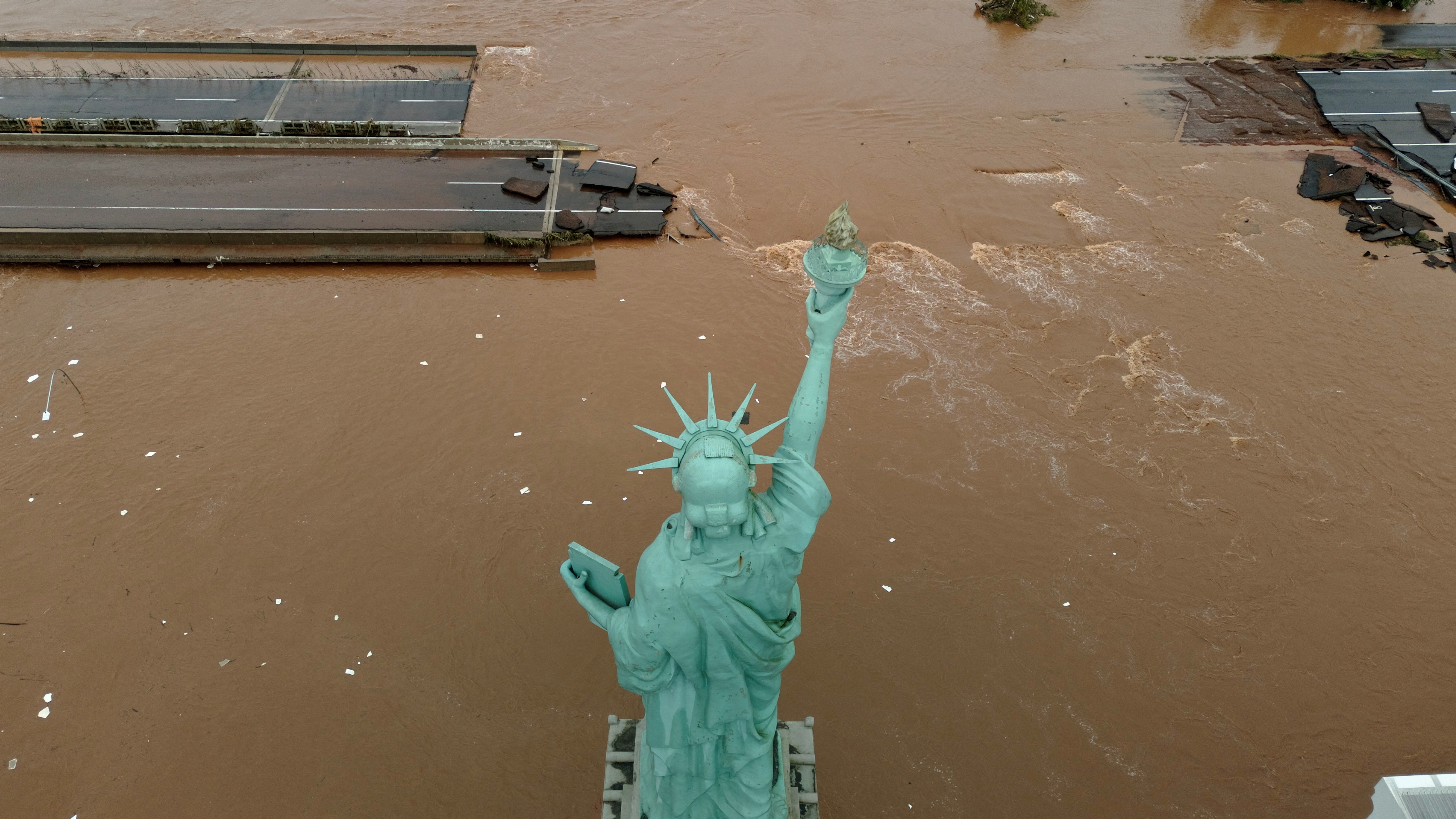
Britain's oil and gas regulator on Friday awarded 31 new hydrocarbon exploration licences as part of efforts to extend production in the ageing basin.

World Chevron

Turkey finance minister cites economic programme after S&P upgrade
Turkish Finance Minister Mehmet Simsek on Saturday cited positive results of the government's economic programme in response to credit ratings agency S&P upgrading Turkey's ratings to "B+" from "B".
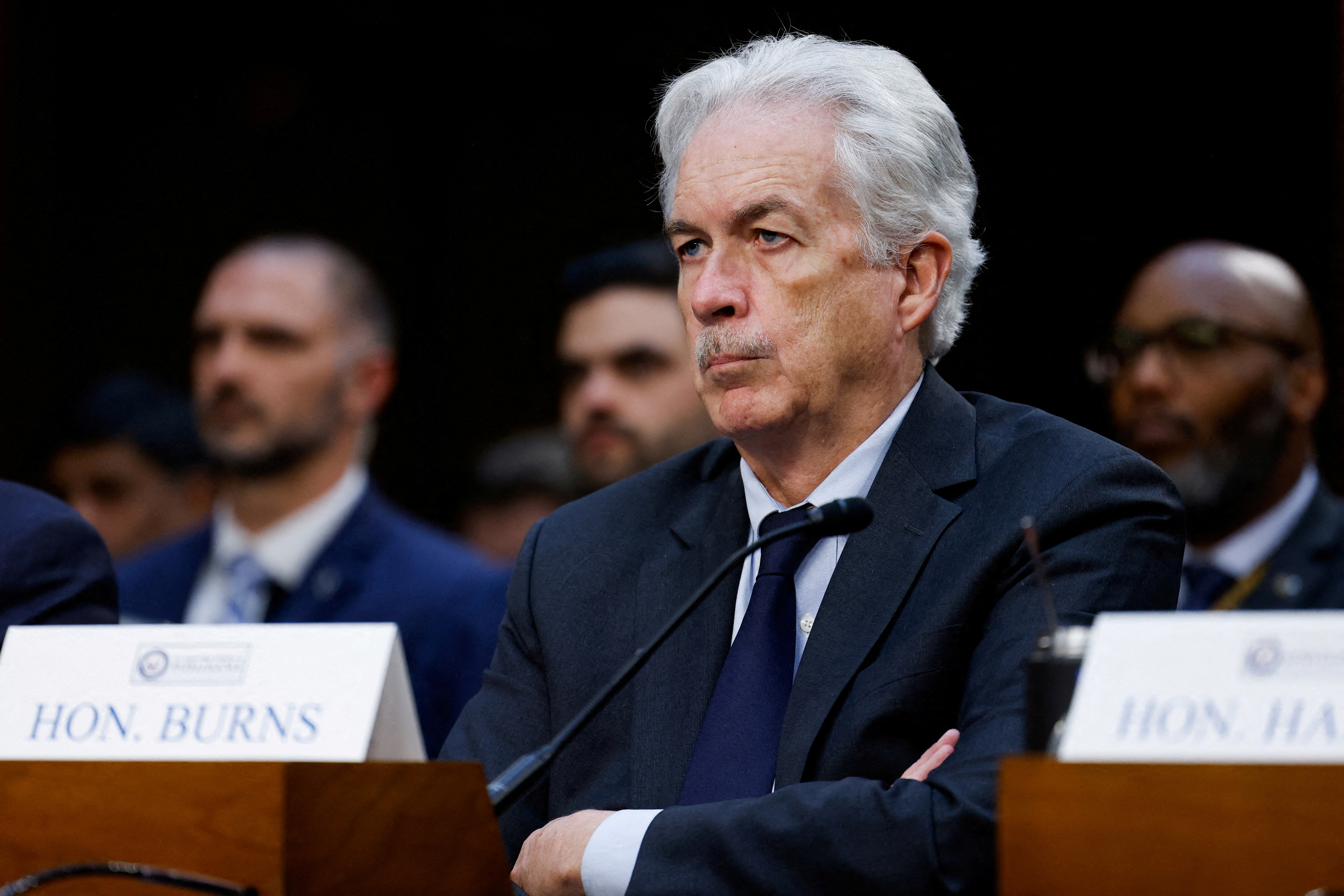
Qatar could close the political office of Hamas as part of a broader review of its role as a mediator in the war between Israel and the militant Palestinian Islamist group, according to an official familiar with the Qatari government's reassessment.
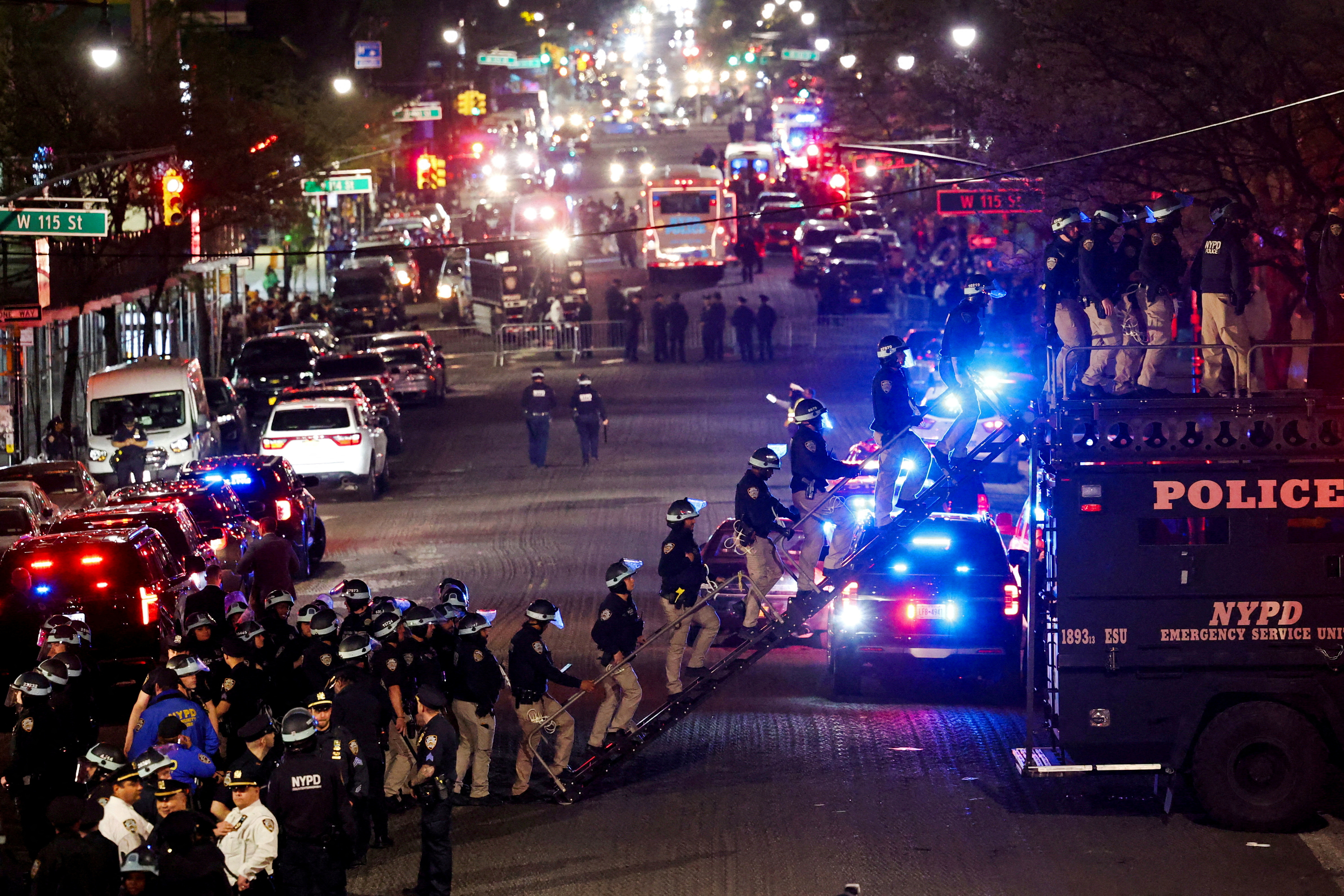

IMAGES
COMMENTS
While most people opt to visit Mongolia in warmer months, the winter season is an exceptionally beautiful time to see the steppe and Siberian borderlands covered in frost and snow.. Mongolia's notoriously frigid winters - temperatures can fall as low as -40°C in January and Ulaanbaatar holds the record as the world's coldest capital city - may sound daunting, but the country is ...
Places across Mongolia can reach -50 degrees Celsius while Ulaanbaatar averages -25 degrees Celsius in winter. January is typically the coldest month of the year, and the driest. Freezing temperatures, wind, snow, and ice can be an issue if you plan to travel to different parts of Mongolia in winter.
Mongolian winter typically spans from November to March, with the coldest months being December, January, and February. During this period, temperatures can plummet to well below freezing, often reaching -20°C (-4°F) or even lower in Ulaanbaatar. Outside of the capital, temperatures can reach even lower.
The winter season is the most likely time to catch a glimpse of these magnificent animals, making it a popular tourist attraction to visit Mongolia during this time. Exploring Mongolia's wildlife during winter also involves being aware of the challenges faced by the animals, such as the dzud, which can have detrimental effects on their ...
Photo via Jessie Festa. Summer in Mongolia, from late June to early September, is characterized by warm and pleasant weather and is the best time to visit Mongolia. Daytime temperatures range from 18°C to 25°C (64°F to 77°F). The vast steppes and landscapes flourish with greenery and wildflowers, coupled with extended daylight hours.
Mongolia is located on the high ranges of Central Asia, isolated from the humid air of Atlantic and Pacific, which creates sharply continental climate. It is characterized by sunny days even in winter, dry air, low precipitation and sharp daily temperature changes. Winter nights can drop to −40 °C in the northern mountains, while summer days ...
Ulaanbaatar is known as the world's coldest capital thanks to reaching temperatures of −36 to −40 °C come winter in Mongolia. That's colder than Moscow, Astana, Reykjavik, Helsinki, Tallin, and Ottawa, all notoriously cold and much more well-known cities, to claim the title. It's also what makes visiting Mongolia from November to ...
You will often find many Mongols sliding around on the frozen Tuul River because it freezes during winters. 4. Visit the Ice Festival. This is one of the most loved festivals of the nation and tourists visit Mongolia in the winter just to attend the festival. Beautiful Khuvsgul Lake lies in northern Mongolia.
Winter in Mongolia stretches from November, right the way through December, January and February. It's also very cold - the lowest temperature recorded was -57°C! That's not commonplace though; the average winter temperature sits at a positively balmy -40°C. However, off peak travel in Mongolia brings its own rewards.
Mongolia Weather. VISITING MONGOLIA IN WINTER (NOVEMBER TO FEBRUARY)Mongolian winter (November to February) is known as cold with temperatures typically ranging from -8°C to - 30°C degrees, with exceptional possible peaks as low as -40°C and high as 1°C as observed in previous years. But the dry climate makes it feel not extremely cold ...
Travel to Mongolia. If you can bear up with Mongolian winter, the treasure of winter is in Mongolia. Explore Lake Huvsgul. Travel to Mongolia. Tours. One-of-a-kind nomadic adventures. Staying with a Mongolian Nomadic family tour Hot; Holiday with Mongolia's nomadic family tour ...
Mongolia - not your typical winter holiday travel destination (but still magical!) Even with the dry climate, there was a light dusting of snow which made the rolling Mongolian hills even more beautiful. They looked like they were made of folds of velvet! I'll admit that I had been a little skeptical of Mongolia after loving Central Asia so ...
Inner Mongolia Winter, Visiting Inner Mongolia in November to March. Winter is another special and beautiful season to visit Inner Mongolia. The snowy white world is not a silent one, but a joyous wonderful playground for travelers to soak in its unique beautiful nature and entertainment culture.
Winter in Mongolia. The weather in this country is often harsh in winter. Due to the influence of the cold Siberian wind, Mongolia's temperature in winter often drops below minus 40 degrees Celsius. If you want to experience the harsh winter in Mongolia, you can visit the suburbs of the capital Ulaanbaatar.
It is a great time to see how Mongolians welcome and celebrate the start of the spring after enduring harsh winter. In March Gobi hosts 1,000 camel festival, people living in Northern Mongolia organize the largest Ice Festival on its crystal clear frozen lake Khuvsgul, Yak Festival, and Eagle Festival are held in different parts of the country.
Mongolia weather in summer is great and it is the most pleasant time to travel in Mongolia. Explore Mongolia's diverse climate with our comprehensive guide, highlighting the best time to visit. ... January is the coldest winter month in Mongolia. The average temperature is -35°C in Khangai's mountainous regions. The rest of the country ...
Due to the low winter temperature, summer remains the preferred time to visit. Winter can go as low as -40° C (coincidentally the same in Fahrenheit, - 40° F). But you'll be forgiven to think that winter is completely ruled out as a viable time when traveling to Mongolia is even possible. Low temperatures indeed discourage most travelers.
Mongolia weather, average temperature, how cold is it in Mongolia, and when is the best time to travel to Mongolia?. email [email protected] phone +976 70117770 ... Although, the dry climate helps you feel less cold when traveling at its - 25°C. Winter is a lovely time to visit Mongolia, driving through the emptiness of the snowy steppes ...
In Mongolia, the climate is strongly continental, with long, frigid winters and short, warm summers: the temperature range between winter and summer is definitely wide. Precipitation is scarce and is concentrated in summer, when the country is partly affected by the Asian monsoon; in winter, when a thermal high pressure system dominates, the sky is often clear.
This is a unique and authentic tour of Mongolian winter while mingling with the locals and discovering the nomadic life. You will discover the huge and distinctive landscapes of western mountainous areas, central Mongolian hilly steppes, and the semi-desert within one travel. Winter is the best time to visit the eagle trainers.
Ended 2019, with one of the most challenging yet eye opening and fulfilling trips of my life. Mongolia screams EXOTIC and it has always been a travel destina...
In Mongolia, a murderous winter decimates nomadic herds. Many steppe herders have lost all or part of their livestock in recent months, due to the early formation of a layer of ice and extreme ...
Mongolia was hit with the worst winter in decades. More than 150, 000 people, including 62,500 children, faced extreme conditions. The icy weather prevented livestock from reaching pastures and ...
Mongolia's government and a coalition of partners have signed a nature finance agreement aimed at protecting 35.6 million acres (144,000 square km) of the country's lands and waters, including the ...